Richard Spikes (1878 – 1965)
 Richard Spikes was born on October 2, 1878, to Monroe and Medora Spikes as the fifth of nine children. Although a capable musician on the piano and violin and despite his two of his younger brothers, Benjamin “Reb” Franklin and John Curry Spikes, would go on to become well-known jazz musician, Richard Spikes learned to cut hair in his father’s barber shop, and then became a public-school teacher in Beaumont, Texas. On October 8, 1900, Spikes married Lula B. Charlton daughter of Charles Napoleon Charlton, an ex-slave who co-founded the first public schools for Blacks in the city of Beaumont. The couple had one son, Richard Don Quixote Spikes in 1902 and moved around the southwest including Albuquerque, New Mexico and later Bisbee, Arizona where he operated a barber shop and later a saloon. While in Bisbee, Spikes became dissatisfied with how draft beer was dispensed from a keg and patented a beer-tapper (U.S. Patent number 850,070) on April 9, 1907. This beer tapper connected to a keg, the tap used tubing to ease the release of beer from the barrel, while also improving freshness over time. The patent was purchased by the Milwaukee Brewing Company and variations of the invention are still in use. This was only one of many of his inventions and patents. Although Spikes primarily interested in automobile mechanics, Spikes also sought to improve the operation of items as varied as barber chairs and trolley cars. The full list is below:
Richard Spikes was born on October 2, 1878, to Monroe and Medora Spikes as the fifth of nine children. Although a capable musician on the piano and violin and despite his two of his younger brothers, Benjamin “Reb” Franklin and John Curry Spikes, would go on to become well-known jazz musician, Richard Spikes learned to cut hair in his father’s barber shop, and then became a public-school teacher in Beaumont, Texas. On October 8, 1900, Spikes married Lula B. Charlton daughter of Charles Napoleon Charlton, an ex-slave who co-founded the first public schools for Blacks in the city of Beaumont. The couple had one son, Richard Don Quixote Spikes in 1902 and moved around the southwest including Albuquerque, New Mexico and later Bisbee, Arizona where he operated a barber shop and later a saloon. While in Bisbee, Spikes became dissatisfied with how draft beer was dispensed from a keg and patented a beer-tapper (U.S. Patent number 850,070) on April 9, 1907. This beer tapper connected to a keg, the tap used tubing to ease the release of beer from the barrel, while also improving freshness over time. The patent was purchased by the Milwaukee Brewing Company and variations of the invention are still in use. This was only one of many of his inventions and patents. Although Spikes primarily interested in automobile mechanics, Spikes also sought to improve the operation of items as varied as barber chairs and trolley cars. The full list is below:
- U.S. patent 928,813, Beer Tapper (1908)
- U.S. patent 972,277, Billiard Cue Rack (1910)
- U.S. patent 1,362,197, U.S. patent 1,362,198 Continuous contact trolley pole (1919)
- U.S. patent 1,441,383 Brake Testing Machine (1923)
- U.S. patent 1,461,988 Pantograph (1923)
- U.S. patent 1,590,557 Combination Milk Bottle Opener and Cover (1926)
- U.S. patent 1,828,753 Methods and Apparatus of Obtaining Average Samples and Temperature of Tank Liquids (1932)
- U.S. patent 1,889,814 Modifications to the automatic gear shift (1932)
- U.S. patent 1,936,996 Transmission and shifting thereof (1933)
- U.S. patent 2,517,936 Horizontally Swinging Barber’s Chair (1950)
- U.S. patent 3,015,522 Automatic Safety Brake System (1962)
Of all these innovations, the best-known are those related to automotive technology. Spikes’ gear shifting device aimed to keep the gears for various speeds in constant mesh, enhancing the turn-of-the-century invention of the automatic transmission and his automatic brake safety system is still used in some buses as a fail-safe means of stopping the vehicle to this day. Spikes is also widely credited with patenting an automobile signaling system (turn signal) in the early 1910s, though a patent record has yet to be located. Richard B. Spikes died on January 22, 1965, in Los Angeles, California at the age of 86.
Thomas Elkins (1818 – 1900)
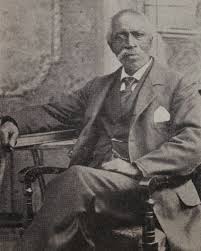 Dr. Thomas Elkins was born in New York State in 1818 and studied surgery and dentistry at the Albany Medical College and went on to operate a pharmacy in Albany for several decades and offered dental services as well. Beginning in the 1840s, Elkins became a member of the Albany Vigilance Committee, where Elkins served as secretary in the 1850s. As a member of the Albany Vigilance Committee, which organized to help fugitive slaves and solicited donations from citizens and was a key part of the Underground Railroad. Elkins worked with Stephen Myers (former slave) and his wife, who helped to provide all manner of assistance from food to legal aid, to medical attention to those seeking freedom and were widely considered the “best-run” Underground Railroad station in New York. They also were the publisher of the Northern Star and Freeman’s Advocate among other papers. During the Civil War, Elkins served as the medical examiner for the famed 54th and 55th Massachusetts regiments. Appointed by Massachusetts’ abolitionist governor John A. Andrew, Elkins joined a group of other African Americans from Albany who volunteered for service. Following the war, Elkins travelled to Liberia, possibly as part of the Back to Africa movement. There, it was noted that he collected several “valuable seashells, minerals, and curiosities. Beginning in the 1870s, Elkins successfully filed a series of patents. On February 22, 1870, his invention (U.S. Patent number 100,020) of a table that could serve for dining, ironing and as a quilting frame, gained approval. Shortly thereafter, on January 9, 1872, he also patented the design for an improved “chamber-commode” (U.S. Patent number 122,518), a predecessor to the toilet. It combined multiple pieces of furniture into one item, and featured a bureau, mirror, bookshelf, washstand, table, easy-chair, and earth-closet or chamber-stool. Elkins’ also invented an apparatus aimed at improving refrigeration of “articles liable for decay” such as “food, or human corpses.” Approved on November 4, 1879, the device included a covered trough or container kept at low temperature by the continuous circulation of chilled water or other cooling fluid through a series of metallic coils. Keeping the bodies of the recently deceased cool posed major challenge in the 19th century, especially in cities, and Elkins’ invention was a marked improvement over other longstanding technique. In 1880, the New York Agriculture Society awarded Elkins a certificate of “highest merit” for this idea and in 1881 he was publicly recognized as the “district physician,” in The Albany Handbook, which is a position recognized by the city. Elkins died on August 10, 1900 at 82 years old having never married and no children and is buried at Albany Rural Cemetery. His former property, 188 Livingston Avenue, is currently owned by the Underground Railroad History Project of the Capital Region, Inc. They also own the Myers house and several other properties from the era.
Dr. Thomas Elkins was born in New York State in 1818 and studied surgery and dentistry at the Albany Medical College and went on to operate a pharmacy in Albany for several decades and offered dental services as well. Beginning in the 1840s, Elkins became a member of the Albany Vigilance Committee, where Elkins served as secretary in the 1850s. As a member of the Albany Vigilance Committee, which organized to help fugitive slaves and solicited donations from citizens and was a key part of the Underground Railroad. Elkins worked with Stephen Myers (former slave) and his wife, who helped to provide all manner of assistance from food to legal aid, to medical attention to those seeking freedom and were widely considered the “best-run” Underground Railroad station in New York. They also were the publisher of the Northern Star and Freeman’s Advocate among other papers. During the Civil War, Elkins served as the medical examiner for the famed 54th and 55th Massachusetts regiments. Appointed by Massachusetts’ abolitionist governor John A. Andrew, Elkins joined a group of other African Americans from Albany who volunteered for service. Following the war, Elkins travelled to Liberia, possibly as part of the Back to Africa movement. There, it was noted that he collected several “valuable seashells, minerals, and curiosities. Beginning in the 1870s, Elkins successfully filed a series of patents. On February 22, 1870, his invention (U.S. Patent number 100,020) of a table that could serve for dining, ironing and as a quilting frame, gained approval. Shortly thereafter, on January 9, 1872, he also patented the design for an improved “chamber-commode” (U.S. Patent number 122,518), a predecessor to the toilet. It combined multiple pieces of furniture into one item, and featured a bureau, mirror, bookshelf, washstand, table, easy-chair, and earth-closet or chamber-stool. Elkins’ also invented an apparatus aimed at improving refrigeration of “articles liable for decay” such as “food, or human corpses.” Approved on November 4, 1879, the device included a covered trough or container kept at low temperature by the continuous circulation of chilled water or other cooling fluid through a series of metallic coils. Keeping the bodies of the recently deceased cool posed major challenge in the 19th century, especially in cities, and Elkins’ invention was a marked improvement over other longstanding technique. In 1880, the New York Agriculture Society awarded Elkins a certificate of “highest merit” for this idea and in 1881 he was publicly recognized as the “district physician,” in The Albany Handbook, which is a position recognized by the city. Elkins died on August 10, 1900 at 82 years old having never married and no children and is buried at Albany Rural Cemetery. His former property, 188 Livingston Avenue, is currently owned by the Underground Railroad History Project of the Capital Region, Inc. They also own the Myers house and several other properties from the era.
This information was derived from the internet @ https://www.blackpast.org/african-american-history/elkins-thomas-1818-1900/ & https://en.wikipedia.org/wiki/Thomas_Elkins
Marie Van Brittan Brown (1922 – 1999)
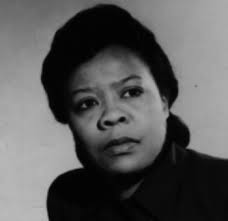 Marie Van Brittan Brown was born in Queens, New York, on October 22, 1922. Marie married Albert Brown and they lived at 151–158 & 135th Avenue in Jamaica, Queens, New York and had two children, Albert Jr. and Norma. Marie Brown worked as a nurse and her husband, Albert Brown, worked as an electronics technician leading to both Marie and Albert working irregular hours and often work hours that did not overlap. This would leave Marie alone in her home at night in neighborhood with a very high crime rate and an often-delayed police response time. These circumstances spurred Brown to invent the first home security system at the age of 40. When Marie and her husband first came up with their security system, their invention consisted of four peepholes, a sliding camera, TV monitors, and microphones. Three peepholes were placed on the front door at different height levels; the top for tall persons, the bottom for children, and the middle for average height. The cameras could go from peephole to peephole and were connected to the TV monitors inside her home to see exactly who was at her door without having to open it. The microphones were used to talk with whoever was outside, again without having to open the door. The final element was an alarm button that could be pressed to contact the police immediately. On August 1, 1966, Marie and her husband submitted a patent application for her invention under the title, “Home Security System Utilizing Television Surveillance.” It would be the first patent of its kind, and it later influenced modern home security systems that are still used today. The patent was granted by the government on December 2, 1969, and Brown’s invention gained her well-deserved recognition, including an award from the National Scientists Committee officially making her a part of “an elite group of Black inventors and scientists.” Brown was interviewed by The New York Times four days later and was quoted saying “a woman alone could set off an alarm immediately by pressing a button, or if the system were installed in a doctor’s office, it might prevent holdups by drug addicts.” Although the system was originally intended for domestic uses, many businesses began to adopt Brown’s system given its efficacy. Through inventing the security system, Brown also invented the first closed circuit television security system and the fame of Brown’s device also led to the more prevalent CCTV surveillance in public areas. Marie Van Brittan Brown died on February 2, 1999, at the age of 76 in Jamaica, Queens, New York. Unfortunately, Marie van Brittan Brown died before she could see the new innovations added to her invention. Her initial idea allowed people to build upon it and revolutionized the entire security system and all security brands such as ADT, Ring, and more all have her to thank for her initial idea. Her invention was cited in at least 32 future patent applications. The home security business is expected to be at least a $1.5B business and is expected to triple by 2024. Norma followed in her mother’s footsteps and became a nurse and inventor. She had success in the innovative field as well as her mother, as she had over 10 inventions.
Marie Van Brittan Brown was born in Queens, New York, on October 22, 1922. Marie married Albert Brown and they lived at 151–158 & 135th Avenue in Jamaica, Queens, New York and had two children, Albert Jr. and Norma. Marie Brown worked as a nurse and her husband, Albert Brown, worked as an electronics technician leading to both Marie and Albert working irregular hours and often work hours that did not overlap. This would leave Marie alone in her home at night in neighborhood with a very high crime rate and an often-delayed police response time. These circumstances spurred Brown to invent the first home security system at the age of 40. When Marie and her husband first came up with their security system, their invention consisted of four peepholes, a sliding camera, TV monitors, and microphones. Three peepholes were placed on the front door at different height levels; the top for tall persons, the bottom for children, and the middle for average height. The cameras could go from peephole to peephole and were connected to the TV monitors inside her home to see exactly who was at her door without having to open it. The microphones were used to talk with whoever was outside, again without having to open the door. The final element was an alarm button that could be pressed to contact the police immediately. On August 1, 1966, Marie and her husband submitted a patent application for her invention under the title, “Home Security System Utilizing Television Surveillance.” It would be the first patent of its kind, and it later influenced modern home security systems that are still used today. The patent was granted by the government on December 2, 1969, and Brown’s invention gained her well-deserved recognition, including an award from the National Scientists Committee officially making her a part of “an elite group of Black inventors and scientists.” Brown was interviewed by The New York Times four days later and was quoted saying “a woman alone could set off an alarm immediately by pressing a button, or if the system were installed in a doctor’s office, it might prevent holdups by drug addicts.” Although the system was originally intended for domestic uses, many businesses began to adopt Brown’s system given its efficacy. Through inventing the security system, Brown also invented the first closed circuit television security system and the fame of Brown’s device also led to the more prevalent CCTV surveillance in public areas. Marie Van Brittan Brown died on February 2, 1999, at the age of 76 in Jamaica, Queens, New York. Unfortunately, Marie van Brittan Brown died before she could see the new innovations added to her invention. Her initial idea allowed people to build upon it and revolutionized the entire security system and all security brands such as ADT, Ring, and more all have her to thank for her initial idea. Her invention was cited in at least 32 future patent applications. The home security business is expected to be at least a $1.5B business and is expected to triple by 2024. Norma followed in her mother’s footsteps and became a nurse and inventor. She had success in the innovative field as well as her mother, as she had over 10 inventions.
This information was derived from the internet @ https://www.blackpast.org/african-american-history/brown-marie-van-brittan-1922-1999/ & https://en.wikipedia.org/wiki/Marie_Van_Brittan_Brown
Samuel R. Scottron (1841[43] – 1908)
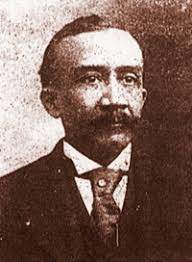 It is unclear if Scottron was born in Philadelphia, Pennsylvania or New England in the years 1841 or 1843. Samuel Scottron moved with his family to New York City in 1849, where he completed grammar school at the age of fourteen. During the American Civil War, he went to work for his father as a sutler for the 3rd United States Colored Infantry and almost went bankrupt. To recoup his fortunes, he moved to Florida in 1864 to operate grocery stores in Gainesville, Jacksonville, Lakeville, Palatka, and Tallahassee. While in Florida, Samuel Scottron married Anna Maria Willett in 1863 and would have five/six children together. He soon sold off his profits and relocated to work as a barber in Springfield, Massachusetts where he developed and patented his first invention, the “Scottron Mirror”. He came up with the idea after taking note of the difficulty his customers had, trying to see the back of their heads. He obtained a patent for the Scottron Mirror in March 1868. After moving to Brooklyn, New York, Scottron graduated from Cooper Union with a degree in Superior Ability in Algebra and Engineering in 1875 and belonged to the Brooklyn Academy of Sciences and the Cooper Union Alumni Society. He also would work as a traveling salesman for an import-export business located in lower Manhattan while continuing to patent his inventions and, by the late 1880s, was able to support himself and his family by manufacturing the products derived from his patents. His company, the Scottron Manufacturing Company, was located at 98 Monroe Street in Brooklyn. Scottron would then go on to obtain a patent for an adjustable window cornice in 1880, the Cornice in 1883, the Pole Tip in 1886, the Curtain Rod in 1892, and the Supporting Bracket in 1893. Many of his inventions were not patented, but he still gained royalties for them. Scottron is also credited with inventing the “leather hand strap device” used for support when standing on trolley cars. He came up with the idea after traveling to San Francisco, California. While in New York, He was a community leader, setting up organizations to promote racial harmony and fairness, as well as a public speaker and writer on race relations. Scottron spent thirty-five years writing on race-related matters for various newspapers and magazines. His articles could be found in the New York Age, the Boston Herald, and the Colored American. His final works were published in “New York African Society for Mutual Relief- Ninety Seventh Anniversary,” in 1905. In 1894, Scottron was appointed to the Brooklyn Board of Education and served as its only Black member for the next eight years and founded the Society of the Sons of New York. He would go on to become a leader in the Republican Party, where he fought for the end of slavery in Cuba and Puerto Rico by serving as Chairman of the Cuban Anti-Slavery Committee with abolitionist Rev. Henry Highland Garnet. He held membership in the Ancient and Accepted Scottish Rite (33rd degree Mason) and was Grand Secretary General of its Supreme Council of the United States for several years. Scottron died of natural causes on October 14, 1908. His great granddaughter was actress and singer Lena Horne and the family life was documented by Horne’s daughter, Gail Lumet Buckley, in The Hornes: An American Family.
It is unclear if Scottron was born in Philadelphia, Pennsylvania or New England in the years 1841 or 1843. Samuel Scottron moved with his family to New York City in 1849, where he completed grammar school at the age of fourteen. During the American Civil War, he went to work for his father as a sutler for the 3rd United States Colored Infantry and almost went bankrupt. To recoup his fortunes, he moved to Florida in 1864 to operate grocery stores in Gainesville, Jacksonville, Lakeville, Palatka, and Tallahassee. While in Florida, Samuel Scottron married Anna Maria Willett in 1863 and would have five/six children together. He soon sold off his profits and relocated to work as a barber in Springfield, Massachusetts where he developed and patented his first invention, the “Scottron Mirror”. He came up with the idea after taking note of the difficulty his customers had, trying to see the back of their heads. He obtained a patent for the Scottron Mirror in March 1868. After moving to Brooklyn, New York, Scottron graduated from Cooper Union with a degree in Superior Ability in Algebra and Engineering in 1875 and belonged to the Brooklyn Academy of Sciences and the Cooper Union Alumni Society. He also would work as a traveling salesman for an import-export business located in lower Manhattan while continuing to patent his inventions and, by the late 1880s, was able to support himself and his family by manufacturing the products derived from his patents. His company, the Scottron Manufacturing Company, was located at 98 Monroe Street in Brooklyn. Scottron would then go on to obtain a patent for an adjustable window cornice in 1880, the Cornice in 1883, the Pole Tip in 1886, the Curtain Rod in 1892, and the Supporting Bracket in 1893. Many of his inventions were not patented, but he still gained royalties for them. Scottron is also credited with inventing the “leather hand strap device” used for support when standing on trolley cars. He came up with the idea after traveling to San Francisco, California. While in New York, He was a community leader, setting up organizations to promote racial harmony and fairness, as well as a public speaker and writer on race relations. Scottron spent thirty-five years writing on race-related matters for various newspapers and magazines. His articles could be found in the New York Age, the Boston Herald, and the Colored American. His final works were published in “New York African Society for Mutual Relief- Ninety Seventh Anniversary,” in 1905. In 1894, Scottron was appointed to the Brooklyn Board of Education and served as its only Black member for the next eight years and founded the Society of the Sons of New York. He would go on to become a leader in the Republican Party, where he fought for the end of slavery in Cuba and Puerto Rico by serving as Chairman of the Cuban Anti-Slavery Committee with abolitionist Rev. Henry Highland Garnet. He held membership in the Ancient and Accepted Scottish Rite (33rd degree Mason) and was Grand Secretary General of its Supreme Council of the United States for several years. Scottron died of natural causes on October 14, 1908. His great granddaughter was actress and singer Lena Horne and the family life was documented by Horne’s daughter, Gail Lumet Buckley, in The Hornes: An American Family.
This information was derived from the internet @ https://www.blackpast.org/african-american-history/scrottron-samuel-raymond-1843-1905/& https://en.wikipedia.org/wiki/Samuel_R._Scottron
Olivia J. Hooker (1915–2018)
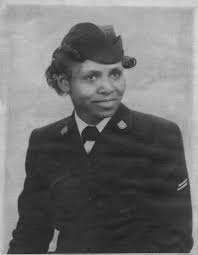
Olivia J. Hooker was born in Muskogee, Oklahoma, to Samuel Hooker and Anita Hooker (née Stigger) in 1915. The family was living in the Greenwood District of Tulsa on May 31, 1921, when a group of white men carrying torches entered their home and began destroying their belongings, including her sister’s piano and her father’s record player. “It was a horrifying thing for a little girl who’s only six years old,” she told Radio Diaries in 2018. The attack was part of the Tulsa race riots of May 31–June 1, 1921, in which members of the Ku Klux Klan and other white residents of Tulsa destroyed the Greenwood District—also known as Black Wall Street for the concentration of Black-owned businesses in the area—killing as many as 300 people and leaving more than 10,000 homeless. Hooker and her family moved to Columbus, Ohio, after the riots. She earned her Bachelor of Arts in 1937 from The Ohio State University, where she also became a member of Delta Sigma Theta sorority, taught third grade, and advocated for Black women to be admitted to the U.S. Navy. She applied to the Navy’s Waves (Women Accepted for Volunteer Emergency Service) program but was rejected because she was black. She disputed the rejection and due to a technicality and was accepted; however, Hooker petitioned the Coast Guard instead, and in 1945, became the first Black woman to join the U.S. Coast Guard’s women’s reserve. On March 9, 1945, she was sent to basic training for six weeks in Manhattan Beach, Brooklyn, New York. Throughout training, Hooker became a Coast Guard Women’s Reserve Semper Paratus Always Ready (SPARS). Hooker was one of only five Black females to first enlist in the SPARS program. After basic training, Hooker specialized in the yeoman rate and remained at boot camp for an additional nine weeks before heading to Boston where she performed administrative duties and earned the rank of Yeoman Second Class in the Coast Guard Women’s Reserve. In June 1946, the SPAR program was disbanded and Hooker earned the rank of petty officer 2nd class and a Good Conduct Award. In 1947, she used her GI Bill to enrolled in Columbia University’s Psychology Department where she received a M.A. degree in Psychological Services. In 1961 she received her PhD in clinical psychology from the University of Rochester, with her dissertation on the learning abilities of children with Down syndrome. With an expertise in developmental and intellectual disabilities, Dr. Hooker went on to help found the American Psychological Association’s Division 33, Intellectual and Developmental Disabilities and was later honored by the Association for her work with children. She served as an early director of the Kennedy Child Study Center in New York City where she gave evaluations, extra help, and support/therapy to children with learning disabilities and delays and worked the mentally disabled in women’s prisons and as a senior clinical lecturer at Fordham University in 1963. She formally retired in 1987 after a distinguished career but continued to be active in civic life. In 1997, Hooker and other survivors of the massacre founded the Tulsa Race Riot Commission, to investigate the massacre and its aftermath, and seek reparations. In 2003, she was one of the plaintiffs in a federal lawsuit filed against the state of Oklahoma and the city of Tulsa by more than 100 survivors and about 300 descendants of people who were seeking reparations for the Tulsa Massacre that took so many lives and her family home and business. The U.S. Supreme Court dismissed the case without comment in 2005. Dr. Hooker was one of the last known survivors of the 1921 Tulsa Massacre. Hooker received the American Psychological Association Presidential Citation in 2011. In 2012, she was inducted into the New York State Senate Veterans’ Hall of Fame. In 2015, setting aside the tradition of recognizing members posthumously, the Coast Guard renamed the dining facility the Olivia Hooker Dining Facility. A training facility at the Coast Guard’s headquarters in Washington, D.C. was also named after her that same year. Dr. Hooker then decided to join the Coast Guard Auxiliary in Yonkers, New York at age 95. Dr. Olivia Juliette Hooker died of natural causes at her home in White Plains, NY, on November 21, 2018, at age 103. Dr. Hooker was an active participant in the White Plains/Greenburgh NAACP until the time of her death. Tulsa Girl, by Shameen Anthanio-Williams, is a book focused on Hooker’s experiences in the Tulsa Race riots. In October 2019, it was announced that the fast response cutter USCGC Olivia Hooker would be named in her honor. This will be the sixty-first Sentinel-class cutter, due to be delivered to the Coast Guard after 2023.
This information was derived from the internet @ https://www.blackpast.org/african-american-history/hooker-olivia-j-1915/ & https://en.wikipedia.org/wiki/Olivia_Hooker
Ernest Everett Just (1883–1941)
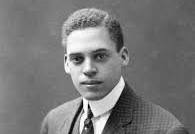 Dr. Ernest Everett Just was born on August 14, 1883, in Charleston, South Carolina, to Charles Frazier and Mary Matthews Just. Just was only four years old when his father, died in 1887. Due to mounting debt, his mother moved from Charleston to James Island, a Gullah community off the coast of South Carolina, to work in its phosphate mines. Mary Just became a highly respected leader of the community and convinced a number of residents on the island to purchase land and start their own community. The residents renamed the community Maryville in her honor. Known as an intelligent and inquisitive student, Just was sent to attend the high school of the Colored Normal Industrial, Agricultural & Mechanical College (later named South Carolina State University) in 1996 and would later go on to Kimball Union Academy in New Hampshire and excelled in social activities and academics. After graduation from Kimball Union, Just entered Dartmouth College in 1903, where he was selected as a Rufus Choate scholar for two years and graduated magna cum laude in biology with a minor in history, receiving honors in botany, sociology and history in 1907. He was also elected to the prestigious honor society Phi Beta Kappa. Just’s accepted a position at Howard University as a teacher and by 1910, he joined the Department of Biology and was appointed professor in 1912. He also would become one of the founding members of Omega Psi Phi Fraternity in 1911 at Howard while also becoming a member of Sigma Pi Phi Fraternity. Omega Psi Phi was the first black Greek-lettered fraternal organization founded at a historically Black university. Just worked in research at Woods Hole Marine Biological Laboratory in Massachusetts and furthered his education by obtaining a Doctor of Philosophy degree from the University of Chicago, where he studied experimental embryology and graduated magna cum laude. He earned a doctorate in zoology in 1916 and published 50 scientific papers such as the 1924 publication “General Cytology,” which he co-authored with respected scientists from Princeton University, the University of Chicago, the National Academy of Sciences and the Marine Biological Laboratory, and two influential books, Basic Methods for Experiments on Eggs of Marine Mammals (1922) and Biology of the Cell Surface (1939). Just also served as editor of three scholarly periodicals and won the NAACP’s first Spingarn Medal for outstanding achievement by a Black American. From 1920 to 1931, he was a Julius Rosenwald Fellow in Biology of the National Research Council — a position that provided him the chance to work in Europe when racial discrimination hindered his opportunities in the United States becoming one of the first Blacks to receive worldwide recognition as a scientist. Just would go on to conduct his research first in Naples, Italy, then in 1930, becoming the first American to be invited to conduct research at the Kaiser Wilhelm Institute in Berlin, Germany. His research was interrupted when the Nazis took control of Germany in 1933, forcing Just to relocated to Paris, France to continue his research. Due to his work, Just would have long absences from his wife and three kids leading to their divorce in 1939. That same year, Just married Maid Hedwig Schnetzler, a German national philosophy student he had met in Berlin. Just was working at the Station Biologique in Roscoff, France when the Nazis invaded the country and imprisoned him, holding Just in a POW camp. With the help of his wife’s father and the U.S. State Department, Just was released and brought back to the United States in 1940. Just had been ill for months prior to his detainment, but his condition deteriorated during his imprisonment. Just died on October 27, 1941, in Washington, D.C., shortly after being diagnosed with pancreatic cancer and was buried at the Lincoln Memorial Cemetery in Suitland, Maryland at 58 years old. Dr. Ernest Everett Just was best known for being a biologist and educator who pioneered many areas on the physiology of development, including fertilization, experimental parthenogenesis, hydration, cell division, dehydration in living cells and ultraviolet carcinogenic radiation effects on cells. Held in high esteem within his field, notable Black scientist Charles Drew called Just “a biologist of unusual skill and the greatest of our original thinkers in the field.”
Dr. Ernest Everett Just was born on August 14, 1883, in Charleston, South Carolina, to Charles Frazier and Mary Matthews Just. Just was only four years old when his father, died in 1887. Due to mounting debt, his mother moved from Charleston to James Island, a Gullah community off the coast of South Carolina, to work in its phosphate mines. Mary Just became a highly respected leader of the community and convinced a number of residents on the island to purchase land and start their own community. The residents renamed the community Maryville in her honor. Known as an intelligent and inquisitive student, Just was sent to attend the high school of the Colored Normal Industrial, Agricultural & Mechanical College (later named South Carolina State University) in 1996 and would later go on to Kimball Union Academy in New Hampshire and excelled in social activities and academics. After graduation from Kimball Union, Just entered Dartmouth College in 1903, where he was selected as a Rufus Choate scholar for two years and graduated magna cum laude in biology with a minor in history, receiving honors in botany, sociology and history in 1907. He was also elected to the prestigious honor society Phi Beta Kappa. Just’s accepted a position at Howard University as a teacher and by 1910, he joined the Department of Biology and was appointed professor in 1912. He also would become one of the founding members of Omega Psi Phi Fraternity in 1911 at Howard while also becoming a member of Sigma Pi Phi Fraternity. Omega Psi Phi was the first black Greek-lettered fraternal organization founded at a historically Black university. Just worked in research at Woods Hole Marine Biological Laboratory in Massachusetts and furthered his education by obtaining a Doctor of Philosophy degree from the University of Chicago, where he studied experimental embryology and graduated magna cum laude. He earned a doctorate in zoology in 1916 and published 50 scientific papers such as the 1924 publication “General Cytology,” which he co-authored with respected scientists from Princeton University, the University of Chicago, the National Academy of Sciences and the Marine Biological Laboratory, and two influential books, Basic Methods for Experiments on Eggs of Marine Mammals (1922) and Biology of the Cell Surface (1939). Just also served as editor of three scholarly periodicals and won the NAACP’s first Spingarn Medal for outstanding achievement by a Black American. From 1920 to 1931, he was a Julius Rosenwald Fellow in Biology of the National Research Council — a position that provided him the chance to work in Europe when racial discrimination hindered his opportunities in the United States becoming one of the first Blacks to receive worldwide recognition as a scientist. Just would go on to conduct his research first in Naples, Italy, then in 1930, becoming the first American to be invited to conduct research at the Kaiser Wilhelm Institute in Berlin, Germany. His research was interrupted when the Nazis took control of Germany in 1933, forcing Just to relocated to Paris, France to continue his research. Due to his work, Just would have long absences from his wife and three kids leading to their divorce in 1939. That same year, Just married Maid Hedwig Schnetzler, a German national philosophy student he had met in Berlin. Just was working at the Station Biologique in Roscoff, France when the Nazis invaded the country and imprisoned him, holding Just in a POW camp. With the help of his wife’s father and the U.S. State Department, Just was released and brought back to the United States in 1940. Just had been ill for months prior to his detainment, but his condition deteriorated during his imprisonment. Just died on October 27, 1941, in Washington, D.C., shortly after being diagnosed with pancreatic cancer and was buried at the Lincoln Memorial Cemetery in Suitland, Maryland at 58 years old. Dr. Ernest Everett Just was best known for being a biologist and educator who pioneered many areas on the physiology of development, including fertilization, experimental parthenogenesis, hydration, cell division, dehydration in living cells and ultraviolet carcinogenic radiation effects on cells. Held in high esteem within his field, notable Black scientist Charles Drew called Just “a biologist of unusual skill and the greatest of our original thinkers in the field.”
This information was derived from the internet @ https://www.blackpast.org/african-american-history/just-ernest-everett-1883-1941/& https://www.biography.com/scientists/ernest-everett-just
Minnie Buckingham Harper (1886–1978)
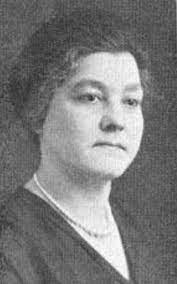 Minnie Buckingham was born in Winfield, West Virginia. She later moved to Keystone in McDowell County and married Ebenezer. Howard Harper, who was elected to the legislature in 1926. When Harper died in the middle of his term, the county Republican executive committee unanimously recommended Minnie to replace him and was appointed by Governor Howard M. Gore to the West Virginia House of Delegates to fill the vacancy left by the death of her husband. Harper would replace her deceased husband and became the first Black woman legislator in the United States in 1928 in the West Virginia state legislature. Her appointment reflected both the growing importance of women in American politics and the large voting bloc of Blacks in southern West Virginia. During her one session in the legislature, she served on the House committees on Federal Relations, Railroads, and Labor. Harper did not seek reelection at the end of her term. Minnie Buckingham Harper eventually moved back to Putnam County and she died in Winfield in 1978 at age 91. It would take 22 more years before another Black woman would be elected to the legislature in West Virginia.
Minnie Buckingham was born in Winfield, West Virginia. She later moved to Keystone in McDowell County and married Ebenezer. Howard Harper, who was elected to the legislature in 1926. When Harper died in the middle of his term, the county Republican executive committee unanimously recommended Minnie to replace him and was appointed by Governor Howard M. Gore to the West Virginia House of Delegates to fill the vacancy left by the death of her husband. Harper would replace her deceased husband and became the first Black woman legislator in the United States in 1928 in the West Virginia state legislature. Her appointment reflected both the growing importance of women in American politics and the large voting bloc of Blacks in southern West Virginia. During her one session in the legislature, she served on the House committees on Federal Relations, Railroads, and Labor. Harper did not seek reelection at the end of her term. Minnie Buckingham Harper eventually moved back to Putnam County and she died in Winfield in 1978 at age 91. It would take 22 more years before another Black woman would be elected to the legislature in West Virginia.
This information was derived from the internet @ https://en.wikipedia.org/wiki/Minnie_Buckingham_Harper & https://wvpublic.org/may-15-1886-west-virginias-first-african-american-female-legislator-born-in-putnam-co/
Absalom Boston (1785–1855)
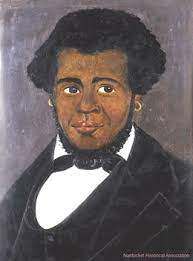
Absalom Boston was born in Nantucket, Massachusetts, to Seneca Boston, a Black ex-slave father, and Thankful Micah, a Wampanoag Indian mother and was a third generation Nantucketer. Boston spent his early years working in the whaling industry. By the time he reached 20, he acquired enough money to purchase property in Nantucket. Ten years later, he obtained a license to open and operate a public inn and by 1822, At age 37 became the first Black United States mariner to captain a whaleship, Industry, manned entirely with a Black crew. The six-month journey yielded 70 barrels of whale oil and the entire crew returned intact. Boston would retire from the sea after the Industry returned to Nantucket from its historic voyage and turned his attention to civil rights and becoming a pillar of the Nantucket Black community. He established the African Meeting House in Nantucket and the African School, was a founding trustee of Nantucket’s African Baptist Society, operated a store in Newtown for the remainder of his life, and also ran for public office. When the all-white high school refused to educate his daughter, he put together a lawsuit against the Nantucket municipal government to integrate the public education system with fellow captain, Edward Pompey. By 1845, he had won the lawsuit leading to Nantucket having integrated their public schools in over 100 years before Brown v. Board of Education. Marrying three times, his sons who lived to adulthood followed him into the whaling industry. By the time Boston died in 1855, he was a respected community leader, wealthy landowner, and tireless advocate for cooperative race relations between Nantucketers and was widely considered “perhaps the wealthiest black on Nantucket.”
This information was derived from the internet @ https://en.wikipedia.org/wiki/Absalom_Boston & https://www.sailmagazine.com/cruising/sail-black-history-month-series-absalom-boston & https://www.facebook.com/101064053268025/posts/a-third-generation-nantucketer-captain-absalom-boston-was-a-pillar-of-the-nantuc/5568591989848510/
Anna Julia Cooper (1858–1964)
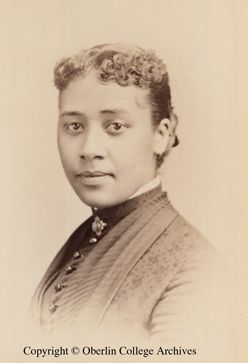 Cooper was the daughter of a slave woman and her white slaveholder (or his brother) in Raleigh, North Carolina in 1858. After Emancipation, in 1868 she enrolled in the newly established Saint Augustine’s Normal School and Collegiate Institute (now Saint Augustine’s University), a school for freed slaves. She quickly distinguished herself as an excellent student, and, in addition to her studies, she began teaching mathematics part-time at age 10. While enrolled at Saint Augustine’s, she realized that her male classmates were encouraged to study a more rigorous curriculum than were the female students. This realization motivated Cooper to a life advocating for the education of black women. In 1877 Anna married her classmate George Cooper, who died two years later. After her husband’s death, Cooper enrolled in Oberlin College in Ohio, along with a small group Black educators and leaders. At Oberlin, she had to protest to be allowed into the “Gentlemen’s classes” but she persevered and graduated in 1884 with a B.S. in mathematics and received a master’s degree in mathematics in 1888. In 1887 she was recruited for a job teaching in Washington, D.C. and became a teacher at the most prestigious secondary school for Blacks in the country called M Street High School,(now Dunbar High School). There she taught mathematics, science, and, later, Latin. During the 1890s Cooper became involved in the black women’s club movement and helped to unite hundreds of local and state groups into the National Association of Colored Women’s Clubs (NACWC). The NACWC would go on to be the longest standing black civic organization in the United States. Cooper also became a popular public speaker addressing a wide variety of groups, including the National Conference of Colored Women in 1895 and the first Pan-African Conference in 1900. In 1892 Cooper published her most well-known work, A Voice from the South by a Black Woman of the South. In it she identified how systems of oppression and domination converge around issues of race, class and gender and argued for the central place of black women in the battle for civil rights. In 1902 Cooper was named principal of the M Street High School. As principal, she enhanced the academic reputation of the school, and under her tenure several M Street graduates were admitted to Ivy League schools. The District of Columbia Board of Education refused to renew her contract for the 1905–06 school year (reason related to racism) but would return In 1910 as a teacher at M Street where she stayed until 1930. From 1911 through 1925, Cooper began studying part-time for a doctoral degree until age 67 when she became only the fourth Black woman in the US to earn her PhD, when she completed and defended her dissertation at the University of Paris, Sorbonne, which subject matter was slavery, written in French, and published in English as Slavery and the French Revolutionists, 1788–1805. From 1930 to 1941 she served as president of the Frelinghuysen University for working adults in Washington, D.C. starting at age 72 and continued to serve as the school’s registrar until well into her 90s. Cooper died in her sleep at age 105 in 1964 and is buried next to her husband in Raleigh City (VA) Cemetery. Cooper reared two foster children and five adoptive children during her lifetime as well.
Cooper was the daughter of a slave woman and her white slaveholder (or his brother) in Raleigh, North Carolina in 1858. After Emancipation, in 1868 she enrolled in the newly established Saint Augustine’s Normal School and Collegiate Institute (now Saint Augustine’s University), a school for freed slaves. She quickly distinguished herself as an excellent student, and, in addition to her studies, she began teaching mathematics part-time at age 10. While enrolled at Saint Augustine’s, she realized that her male classmates were encouraged to study a more rigorous curriculum than were the female students. This realization motivated Cooper to a life advocating for the education of black women. In 1877 Anna married her classmate George Cooper, who died two years later. After her husband’s death, Cooper enrolled in Oberlin College in Ohio, along with a small group Black educators and leaders. At Oberlin, she had to protest to be allowed into the “Gentlemen’s classes” but she persevered and graduated in 1884 with a B.S. in mathematics and received a master’s degree in mathematics in 1888. In 1887 she was recruited for a job teaching in Washington, D.C. and became a teacher at the most prestigious secondary school for Blacks in the country called M Street High School,(now Dunbar High School). There she taught mathematics, science, and, later, Latin. During the 1890s Cooper became involved in the black women’s club movement and helped to unite hundreds of local and state groups into the National Association of Colored Women’s Clubs (NACWC). The NACWC would go on to be the longest standing black civic organization in the United States. Cooper also became a popular public speaker addressing a wide variety of groups, including the National Conference of Colored Women in 1895 and the first Pan-African Conference in 1900. In 1892 Cooper published her most well-known work, A Voice from the South by a Black Woman of the South. In it she identified how systems of oppression and domination converge around issues of race, class and gender and argued for the central place of black women in the battle for civil rights. In 1902 Cooper was named principal of the M Street High School. As principal, she enhanced the academic reputation of the school, and under her tenure several M Street graduates were admitted to Ivy League schools. The District of Columbia Board of Education refused to renew her contract for the 1905–06 school year (reason related to racism) but would return In 1910 as a teacher at M Street where she stayed until 1930. From 1911 through 1925, Cooper began studying part-time for a doctoral degree until age 67 when she became only the fourth Black woman in the US to earn her PhD, when she completed and defended her dissertation at the University of Paris, Sorbonne, which subject matter was slavery, written in French, and published in English as Slavery and the French Revolutionists, 1788–1805. From 1930 to 1941 she served as president of the Frelinghuysen University for working adults in Washington, D.C. starting at age 72 and continued to serve as the school’s registrar until well into her 90s. Cooper died in her sleep at age 105 in 1964 and is buried next to her husband in Raleigh City (VA) Cemetery. Cooper reared two foster children and five adoptive children during her lifetime as well.
This information was derived from the internet @ https://douglassday.org/cooper/ & https://www.britannica.com/biography/Anna-Julia-Cooper
John Jr. Mitchell (1863–1929)
 John Mitchell Jr. was born on July 11, 1863 near Richmond, Virginia. The Mitchell’s were slaves and John was the first of two sons. After the Civil War, the Mitchell family moved to Richmond, and despite being free his parents continued to work for their enslavers the Lyons family. Taught how to read by his mother, Mitchell would excel academically, studying at the Richmond Colored Normal School, a high school that specialized in training Black teachers, where he would go on to graduate in 1881 as the valedictorian of his class. He began teaching at Fredericksburg Colored School and returned to Richmond to teach at the Valley School in 1883, but in 1884 the newly appointed Democratic school board fired him and 10 other Black teachers. In 1883 the Black lawyer Edwin Archer Randolph founded the Richmond Planet and Mitchell led a group of former teachers to work there. By December 1884, Mitchell became editor of the weekly Richmond Planet and soon achieved greater success and gained national prominence for its role as a promoter of civil rights, racial justice, and racial pride. Mitchell investigated lynchings, advised blacks to arm themselves in self-defense, and editorialized against the Spanish-American war, saying it would make Cubans and Filipinos subject to the racism that dominated the South. Mitchell also served as a delegate to the Republican National Convention in 1888 (served through 1896), on the Richmond City Council, and was president of the Afro-American Press Association from 1890-1894. In 1891 he secured $20,000 for the construction of new Black schools and three years later helped persuade the city to provide enough funds to construct an armory for the First Battalion Virginia Volunteers, a black militia regiment, in Jackson Ward. Although Mitchell would run for office in 1900, the election was stained with ballot rigging against all the Black candidates. This was one of many features beginning to take hold in Virginia following the years of Reconstruction and ushering in the Jim Crow era. When Virginia authorized transit companies to begin segregating streetcars in 1904, Mitchell led a protests and organized a boycott of the streetcars. Mitchell, along with civil rights activist and entrepreneur Maggie Lena Walker, called for Blacks to “stay off the street-cars,” launching a two-year boycott of Richmond’s streetcar system. Even though the Virginia Passenger and Power Company went out of business later in 1904 the boycott was unsuccessful. In 1906 the General Assembly passed a law that mandated segregation on public transportation. The boycott dwindled out in 1906, but Mitchell nonetheless continued to abstain from riding segregated streetcars. In the 1880s, Mitchell joined the Grand United Order of True Reformers, a beneficial association established by William Washington Browne to provide life insurance for Blacks. After Browne opened the True Reformers’ bank in 1889, Mitchell sat on its board of directors, serving for five years. His success there led to his establishment of the Mechanics Savings Bank, for which he received a charter in 1901. As its president, Mitchell became a member of the predominately white American Bankers Association. Beginning in 1919, its deposits hit an all-time high of over half a million dollars then Mitchell and his bank suffered a series of economic setbacks due to post–World War I economy taking a downward turn. His troubled relationship with the White regulators and financial problems caused the Mechanics Savings Bank to close in 1922. A jury found Mitchell guilty of fraud and theft in the bank’s collapse, which were later overturned yet still impacted Mitchells political and editorial influence. In defiance, Mitchell would run for political office in 1921 for governor on the “Lily Black” Republican ticket. Mitchell scarcely campaigned at all and received only 5,036 votes out of more than 210,000 cast. Despite the triumphs and successes of his life, Mitchell died of kidney disease in poverty at his Richmond home on December 3, 1929 at 66. Although Mitchell had established Woodland Cemetery in 1917, he was buried next to his mother in Evergreen Cemetery. In June 1996 the Richmond chapter of the Society of Professional Journalists honored Mitchell with the George Mason Award, acknowledging Mitchell’s contribution to freedom of the press.
John Mitchell Jr. was born on July 11, 1863 near Richmond, Virginia. The Mitchell’s were slaves and John was the first of two sons. After the Civil War, the Mitchell family moved to Richmond, and despite being free his parents continued to work for their enslavers the Lyons family. Taught how to read by his mother, Mitchell would excel academically, studying at the Richmond Colored Normal School, a high school that specialized in training Black teachers, where he would go on to graduate in 1881 as the valedictorian of his class. He began teaching at Fredericksburg Colored School and returned to Richmond to teach at the Valley School in 1883, but in 1884 the newly appointed Democratic school board fired him and 10 other Black teachers. In 1883 the Black lawyer Edwin Archer Randolph founded the Richmond Planet and Mitchell led a group of former teachers to work there. By December 1884, Mitchell became editor of the weekly Richmond Planet and soon achieved greater success and gained national prominence for its role as a promoter of civil rights, racial justice, and racial pride. Mitchell investigated lynchings, advised blacks to arm themselves in self-defense, and editorialized against the Spanish-American war, saying it would make Cubans and Filipinos subject to the racism that dominated the South. Mitchell also served as a delegate to the Republican National Convention in 1888 (served through 1896), on the Richmond City Council, and was president of the Afro-American Press Association from 1890-1894. In 1891 he secured $20,000 for the construction of new Black schools and three years later helped persuade the city to provide enough funds to construct an armory for the First Battalion Virginia Volunteers, a black militia regiment, in Jackson Ward. Although Mitchell would run for office in 1900, the election was stained with ballot rigging against all the Black candidates. This was one of many features beginning to take hold in Virginia following the years of Reconstruction and ushering in the Jim Crow era. When Virginia authorized transit companies to begin segregating streetcars in 1904, Mitchell led a protests and organized a boycott of the streetcars. Mitchell, along with civil rights activist and entrepreneur Maggie Lena Walker, called for Blacks to “stay off the street-cars,” launching a two-year boycott of Richmond’s streetcar system. Even though the Virginia Passenger and Power Company went out of business later in 1904 the boycott was unsuccessful. In 1906 the General Assembly passed a law that mandated segregation on public transportation. The boycott dwindled out in 1906, but Mitchell nonetheless continued to abstain from riding segregated streetcars. In the 1880s, Mitchell joined the Grand United Order of True Reformers, a beneficial association established by William Washington Browne to provide life insurance for Blacks. After Browne opened the True Reformers’ bank in 1889, Mitchell sat on its board of directors, serving for five years. His success there led to his establishment of the Mechanics Savings Bank, for which he received a charter in 1901. As its president, Mitchell became a member of the predominately white American Bankers Association. Beginning in 1919, its deposits hit an all-time high of over half a million dollars then Mitchell and his bank suffered a series of economic setbacks due to post–World War I economy taking a downward turn. His troubled relationship with the White regulators and financial problems caused the Mechanics Savings Bank to close in 1922. A jury found Mitchell guilty of fraud and theft in the bank’s collapse, which were later overturned yet still impacted Mitchells political and editorial influence. In defiance, Mitchell would run for political office in 1921 for governor on the “Lily Black” Republican ticket. Mitchell scarcely campaigned at all and received only 5,036 votes out of more than 210,000 cast. Despite the triumphs and successes of his life, Mitchell died of kidney disease in poverty at his Richmond home on December 3, 1929 at 66. Although Mitchell had established Woodland Cemetery in 1917, he was buried next to his mother in Evergreen Cemetery. In June 1996 the Richmond chapter of the Society of Professional Journalists honored Mitchell with the George Mason Award, acknowledging Mitchell’s contribution to freedom of the press.
This information was derived from the internet @ https://encyclopediavirginia.org/entries/mitchell-john-jr-1863-1929/ & https://www.blackpast.org/african-american-history/mitchell-john-jr-1863-1929-and-richmond-planet-1883-1996/
Shalanda Young (1977 – )
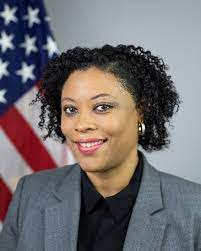 Young was born in Baton Rouge, Louisiana, and raised in Clinton, Louisiana. She earned a Bachelor of Arts degree from Loyola University New Orleans and a Master of Health Administration from Tulane University. Young moved to Washington, D.C. around 2001, where she became a Presidential Management Fellow with the National Institutes of Health. For 14 years, Young worked as a staffer for the United States House Committee on Appropriations until she was named staff director of the committee in February 2017. As staff director on the committee, Young was involved with creating proposals related to the 2018–2019 United States federal government shutdown and the federal government response to the COVID-19 pandemic. The approval of her nomination as deputy director by the Senate Homeland Security and Governmental Affairs Committee was less bipartisan, with GOP Senators voicing concerns over her support of the removal of the Hyde amendment from the federal budget. As the nomination of Neera Tanden for OMB director faced opposition, Democrats in the Congressional Black Caucus began to consider Young for the position of OMB director, should Tanden’s nomination fail. After Tanden’s nomination for OMB director was withdrawn, the CBC and New Democrat Coalition endorsed Young with House Speaker Nancy Pelosi, Majority Leader Steny Hoyer, and Majority Whip Jim Clyburn all releasing a joint statement in support of her. Young was confirmed by the United States Senate by a vote of 63–37 to be OMB deputy, on March 23, 2021 and President Biden announced he would make Young his nominee as OMB director on November 24 after only eight months serving as acting director. The Senate confirmed Young in a 61-36 vote on March 15, 2022 to serve as the director of OMB, a position she continues to hold to this day.
Young was born in Baton Rouge, Louisiana, and raised in Clinton, Louisiana. She earned a Bachelor of Arts degree from Loyola University New Orleans and a Master of Health Administration from Tulane University. Young moved to Washington, D.C. around 2001, where she became a Presidential Management Fellow with the National Institutes of Health. For 14 years, Young worked as a staffer for the United States House Committee on Appropriations until she was named staff director of the committee in February 2017. As staff director on the committee, Young was involved with creating proposals related to the 2018–2019 United States federal government shutdown and the federal government response to the COVID-19 pandemic. The approval of her nomination as deputy director by the Senate Homeland Security and Governmental Affairs Committee was less bipartisan, with GOP Senators voicing concerns over her support of the removal of the Hyde amendment from the federal budget. As the nomination of Neera Tanden for OMB director faced opposition, Democrats in the Congressional Black Caucus began to consider Young for the position of OMB director, should Tanden’s nomination fail. After Tanden’s nomination for OMB director was withdrawn, the CBC and New Democrat Coalition endorsed Young with House Speaker Nancy Pelosi, Majority Leader Steny Hoyer, and Majority Whip Jim Clyburn all releasing a joint statement in support of her. Young was confirmed by the United States Senate by a vote of 63–37 to be OMB deputy, on March 23, 2021 and President Biden announced he would make Young his nominee as OMB director on November 24 after only eight months serving as acting director. The Senate confirmed Young in a 61-36 vote on March 15, 2022 to serve as the director of OMB, a position she continues to hold to this day.
This information was derived from the internet @ https://en.wikipedia.org/wiki/Shalanda_Young
Joesph Hayne Rainey (1832 – 1887)
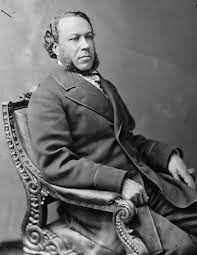
Joseph Rainey was born on 21 June 1832 in Georgetown, South Carolina. Rainey and his parents were enslaved, but his father was permitted to work as a barber and purchased his family’s freedom in the early 1840s. Rainey received some private schooling and took up his father’s trade in Charleston, South Carolina and would frequently travel outside of South, marrying in Philadelphia, Pennsylvania in 1859. During the Civil War, Rainey was forced to work on the fortifications in Charleston harbor. In 1862 he escaped to Bermuda with his wife and worked there as a barber before returning to South Carolina in 1866. He returned to Charleston eager to dive into local Republican politics and was elected a delegate to the state constitutional convention in 1868 and served briefly in the state Senate before his election to the 41st Congress U.S. House of Representatives in 1870 in a special election. Rainey became the first Black American to serve in the House even though others were elected earlier but were not seated. He was appointed to the Committee on Freedmen’s Affairs and the Committee on Indian Affairs. Rainey ran for reelection in 1872 without opposition and again became the first Black American representative to preside over a house session in 1874. By 1876, the Democrats had began to re-emerge as the dominant force and Rainey barely defeated Democrat John S. Richardson for Congress for his fourth election making him the longest tenured Black person in the House during the Reconstruction era. Richardson, who never conceded the election, contested Rainey’s seat for the next two years. In 1878 Richardson won the seat, ending Rainey’s Congressional career. Rainey spent his near decade-long congressional career as an advocate for civil rights, equal protection, and an active role for the federal government in the Reconstruction of the South. In 1879 Rainey returned to South Carolina and was appointed an Internal Revenue Agent in the state by President Rutherford B. Hayes. He held the post until 1881 when he returned to Washington, D.C. where he hoped to serve as Clerk of the House of Representatives. Unable to obtain the appointment, Rainey instead started a brokerage and banking firm. After this failed he managed a coal and wood yard before returning to South Carolina impoverished and ill. Joseph Hayne Rainey died in Georgetown on August 2, 1887, leaving a widow and five children. He was 55 at the time of his death.
This information was derived from the internet @ https://history.house.gov/Historical-Highlights/1800-1850/Representative-Joseph-Rainey-of-South-Carolina,-the-first-African-American-to-serve-in-the-House/ & https://www.britannica.com/biography/Joseph-Hayne-Rainey, & https://www.blackpast.org/african-american-history/rainey-joseph-hayne-1832-1887/
William Cooper Nell (1816 – 1874)
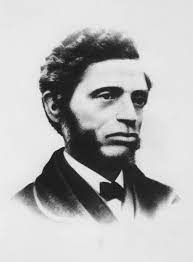 William C. Nell was born and raised in Boston, Massachusetts, and the son of a prominent tailor and Black activist. In the 1830s, he became politically active as a member of the Juvenile Garrison Independent Society where he wrote plays, hosted political debates, was mentored by William Lloyd Garrison, and was a printer’s apprentice for Garrison’s newspaper, the Liberator. Nell would go on to graduate with honors from the Boston’s African school. However, despite his achievements, Nell was excluded from citywide ceremonies honoring outstanding scholars because he is Black.This led Nell to a campaign to integrate Boston schools, co-authoring a petition to the Massachusetts Legislature with over 2000 signatures from the Black Boston community demanding school integration. Nell’s efforts to desegregate Boston’s schools initiated a century-long nationwide campaign which climaxed in Brown v. Board of Education (1954-55). Nell would also go on to become a founding member of the New England Freedom Association in 1842( a black Boston organization that assisted fugitive slaves in their efforts to gain freedom), campaign to desegregate the Boston railroad in 1843, the Boston performance halls in 1853, and co-founded the Massasoit Guards, a black military company in 1854. Nell moved to Rochester at the end of the 1840s, where he became the publisher of Frederick Douglass‘s newspaper, the North Star (1847). By 1850 he had returned to Boston, where he ran unsuccessfully for the Massachusetts Legislature on the Free Soil Party ticket while simultaneously working on the Underground Railroad. Nell would author the Services of Colored Americans in the Wars of 1776 and 1812 (1851) and The Colored Patriots of the American Revolution (1855) two of the earliest histories of Black people in America. By 1861, he became the first Black American to hold a federal position as clerk in the U.S. Postal Department. In 1858, to protest the 1857 Dred Scott decision, Nell successfully organized and petitioned Boston to celebrate Crispus Attucks Day in acknowledgement of the contributions of Blacks in the Revolutionary War and to justify Black claims to full citizenship. William C. Nell died, from “paralysis of the brain,” in 1874.
William C. Nell was born and raised in Boston, Massachusetts, and the son of a prominent tailor and Black activist. In the 1830s, he became politically active as a member of the Juvenile Garrison Independent Society where he wrote plays, hosted political debates, was mentored by William Lloyd Garrison, and was a printer’s apprentice for Garrison’s newspaper, the Liberator. Nell would go on to graduate with honors from the Boston’s African school. However, despite his achievements, Nell was excluded from citywide ceremonies honoring outstanding scholars because he is Black.This led Nell to a campaign to integrate Boston schools, co-authoring a petition to the Massachusetts Legislature with over 2000 signatures from the Black Boston community demanding school integration. Nell’s efforts to desegregate Boston’s schools initiated a century-long nationwide campaign which climaxed in Brown v. Board of Education (1954-55). Nell would also go on to become a founding member of the New England Freedom Association in 1842( a black Boston organization that assisted fugitive slaves in their efforts to gain freedom), campaign to desegregate the Boston railroad in 1843, the Boston performance halls in 1853, and co-founded the Massasoit Guards, a black military company in 1854. Nell moved to Rochester at the end of the 1840s, where he became the publisher of Frederick Douglass‘s newspaper, the North Star (1847). By 1850 he had returned to Boston, where he ran unsuccessfully for the Massachusetts Legislature on the Free Soil Party ticket while simultaneously working on the Underground Railroad. Nell would author the Services of Colored Americans in the Wars of 1776 and 1812 (1851) and The Colored Patriots of the American Revolution (1855) two of the earliest histories of Black people in America. By 1861, he became the first Black American to hold a federal position as clerk in the U.S. Postal Department. In 1858, to protest the 1857 Dred Scott decision, Nell successfully organized and petitioned Boston to celebrate Crispus Attucks Day in acknowledgement of the contributions of Blacks in the Revolutionary War and to justify Black claims to full citizenship. William C. Nell died, from “paralysis of the brain,” in 1874.
This information was derived from the internet @ https://www.blackpast.org/african-american-history/nell-william-c-1816-1874/ & https://www.encyclopedia.com/history/encyclopedias-almanacs-transcripts-and-maps/nell-william-cooper
Thomas L. Jennings (1791 – 1856)
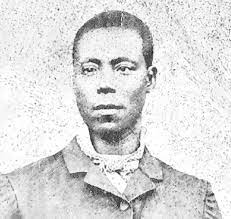 Thomas L. Jennings was born in 1791 in New York City. He started his career as a tailor and eventually opened one of New York’s leading clothing shops. Inspired by frequent requests for cleaning advice, he began researching cleaning solutions and experimenting with different solutions and cleaning agents. He tested them on various fabrics until he found the right combination to treat and clean them. He called his method “dry-scouring,” a process now known as dry cleaning. Jennings filed for a patent in 1820 and was granted a patent for the ”dry-scouring” process he had invented just a year later. The patent to Jennings generated considerable controversy during this period. Under the United States patent laws of 1793 and 1836, both enslaved and free citizens could patent their inventions(this was overturned in 1858 by the Supreme Court and was again overturned in 1870 allowing all men to have patents). Tragically, the original patent was lost in a fire, but by then, Jennings’ process of using solvents to clean clothes was well-known and widely heralded. The patent was awarded on March 3, 1821 (US Patent 3306x) for his “dry-scouring” making Jennings the first Black man to receive a patent. Jennings spent the first money he earned from his patent on legal fees to buy his family out of slavery and abolitionist activities and by 1831, became assistant secretary for the First Annual Convention of the People of Color in Philadelphia. Jennings’ daughter, Elizabeth, an activist like her father, was the plaintiff in a landmark lawsuit after being thrown off a New York City streetcar while on the way to church. With support from her father, Elizabeth sued the Third Avenue Railroad Company for discrimination and won her case in 1855. The day after the verdict, the company ordered its cars desegregated. After the incident, Jennings organized a movement against racial segregation in public transit in the city; the services were provided by private companies. The same year, Jennings was one of the founders of the Legal Rights Association, a group that organized challenges to discrimination and segregation and gained legal representation to take cases to court. Thomas Jennings died in New York City in 1856.
Thomas L. Jennings was born in 1791 in New York City. He started his career as a tailor and eventually opened one of New York’s leading clothing shops. Inspired by frequent requests for cleaning advice, he began researching cleaning solutions and experimenting with different solutions and cleaning agents. He tested them on various fabrics until he found the right combination to treat and clean them. He called his method “dry-scouring,” a process now known as dry cleaning. Jennings filed for a patent in 1820 and was granted a patent for the ”dry-scouring” process he had invented just a year later. The patent to Jennings generated considerable controversy during this period. Under the United States patent laws of 1793 and 1836, both enslaved and free citizens could patent their inventions(this was overturned in 1858 by the Supreme Court and was again overturned in 1870 allowing all men to have patents). Tragically, the original patent was lost in a fire, but by then, Jennings’ process of using solvents to clean clothes was well-known and widely heralded. The patent was awarded on March 3, 1821 (US Patent 3306x) for his “dry-scouring” making Jennings the first Black man to receive a patent. Jennings spent the first money he earned from his patent on legal fees to buy his family out of slavery and abolitionist activities and by 1831, became assistant secretary for the First Annual Convention of the People of Color in Philadelphia. Jennings’ daughter, Elizabeth, an activist like her father, was the plaintiff in a landmark lawsuit after being thrown off a New York City streetcar while on the way to church. With support from her father, Elizabeth sued the Third Avenue Railroad Company for discrimination and won her case in 1855. The day after the verdict, the company ordered its cars desegregated. After the incident, Jennings organized a movement against racial segregation in public transit in the city; the services were provided by private companies. The same year, Jennings was one of the founders of the Legal Rights Association, a group that organized challenges to discrimination and segregation and gained legal representation to take cases to court. Thomas Jennings died in New York City in 1856.
This information was derived from the internet @ https://www.blackpast.org/african-american-history/jennings-thomas-l-1791-1856/ & https://en.wikipedia.org/wiki/Thomas_L._Jennings
Francis L. Cardoza (1837 – 1903)
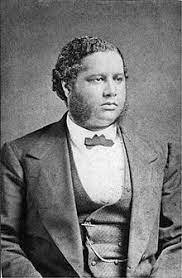 Francis L. Cardoza was born on February 1,1837 to Jacob N. Cardoza, a white journalist, and a free woman of mixed African and Native American ancestry, in Charleston, South Carolina. Cardoza was apprenticed to a carpenter at age 12 and completed his apprenticeship and journeyman status by age 21, when he left to study in Great Britain. He spent four years at the University of Glasgow, and three years attending Presbyterian seminaries in Edinburgh and London. Cardoza returned to the United States in 1864 and became the pastor at the Temple Street Congregational Church in New Haven, Connecticut and married Catherine Romena Howell (had six children). He left the pulpit to concentrate on education with the American Missionary Association (AMA) and asked them to send him south to establish a school to train black teachers. In his new position, Cardoza directed an integrated staff which included white teachers from the North and black teachers from both the North and South. As southerners reclaimed property confiscated in the Civil War, Cardoza was required to find a new location for the school. In 1867 Cardoza and his teachers moved to Bull Street and renamed the school the Avery Institute based on the Avery Estates $10,000 donation. The Avery Institute became a very successful teacher education school and, later, a bastion of Charleston’s black elite. Cardoza also began his political career in 1866, when he served on a board advising the military commander of South Carolina about voter registration regulations. By 1868, he was elected to the state constitutional convention, drew up plans for state-supported public education, and served as president of the Union League, which worked to ensure a Republican victory in the elections. As the only black candidate on the state-wide Republican ticket, Cardoza was elected South Carolina’s secretary of state, becoming the first Black state official in South Carolina history, leading to his resignation from Avery Institute just before it was formally dedicated. As secretary of state, Cardoza was reelected in 1870 and fought against the fraud in the state’s Land Commission. Next, Cardoza was elected as state treasurer where he continued efforts of reform to lower taxes and eliminate corruption until 1876. In 1877 Cardoza left South Carolina, accepting a post in the U.S. Treasury Department in Washington, D.C. despite South Carolina Democrats charging him with eight counts of fraud in a smear campaign that was resolved in 1879, resulting in a pardon and dismissal of the charges. When Cardoza was done with politics, he became the principal of Washington D.C.’s Colored Preparatory High School (now known as Paul Laurence Dunbar High School) from 1884 through 1896, creating one of the country’s leading black preparatory schools and adding a two-year non-college preparatory course in business. However, due to continued criticism of Cardoza, he eventually stepped away from the school. Cardoza died on July 22, 1903.
Francis L. Cardoza was born on February 1,1837 to Jacob N. Cardoza, a white journalist, and a free woman of mixed African and Native American ancestry, in Charleston, South Carolina. Cardoza was apprenticed to a carpenter at age 12 and completed his apprenticeship and journeyman status by age 21, when he left to study in Great Britain. He spent four years at the University of Glasgow, and three years attending Presbyterian seminaries in Edinburgh and London. Cardoza returned to the United States in 1864 and became the pastor at the Temple Street Congregational Church in New Haven, Connecticut and married Catherine Romena Howell (had six children). He left the pulpit to concentrate on education with the American Missionary Association (AMA) and asked them to send him south to establish a school to train black teachers. In his new position, Cardoza directed an integrated staff which included white teachers from the North and black teachers from both the North and South. As southerners reclaimed property confiscated in the Civil War, Cardoza was required to find a new location for the school. In 1867 Cardoza and his teachers moved to Bull Street and renamed the school the Avery Institute based on the Avery Estates $10,000 donation. The Avery Institute became a very successful teacher education school and, later, a bastion of Charleston’s black elite. Cardoza also began his political career in 1866, when he served on a board advising the military commander of South Carolina about voter registration regulations. By 1868, he was elected to the state constitutional convention, drew up plans for state-supported public education, and served as president of the Union League, which worked to ensure a Republican victory in the elections. As the only black candidate on the state-wide Republican ticket, Cardoza was elected South Carolina’s secretary of state, becoming the first Black state official in South Carolina history, leading to his resignation from Avery Institute just before it was formally dedicated. As secretary of state, Cardoza was reelected in 1870 and fought against the fraud in the state’s Land Commission. Next, Cardoza was elected as state treasurer where he continued efforts of reform to lower taxes and eliminate corruption until 1876. In 1877 Cardoza left South Carolina, accepting a post in the U.S. Treasury Department in Washington, D.C. despite South Carolina Democrats charging him with eight counts of fraud in a smear campaign that was resolved in 1879, resulting in a pardon and dismissal of the charges. When Cardoza was done with politics, he became the principal of Washington D.C.’s Colored Preparatory High School (now known as Paul Laurence Dunbar High School) from 1884 through 1896, creating one of the country’s leading black preparatory schools and adding a two-year non-college preparatory course in business. However, due to continued criticism of Cardoza, he eventually stepped away from the school. Cardoza died on July 22, 1903.
This information was derived from the internet @https://www.encyclopedia.com/education/news-wires-white-papers-and-books/cardozo-francis-l-1837-1903 & https://www.digitalhistory.uh.edu/exhibits/reconstruction/section2/section2_17.html
Robert Sengstacke Abbott (1868 – 1940)
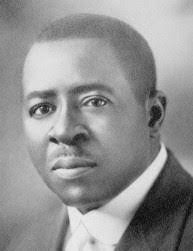 Robert Sengstacke Abbott was born on December 24, 1870 to formerly enslaved parents in St. Simons, Georgia. Abbott became a teacher, determined to improve the education of black children. He also became a publisher, founding the Woodville Times. Given the industrialization under way in the country, from 1892 to 1896, Abbott studied the printing trade at Hampton Institute (now Hampton University), where he also sang with the Hampton Choir and Quartet. He would go on to earn a law degree from Kent College of Law, Chicago, in 1898-99. Due to racial prejudice in the United States, Abbott was unable to practice law, despite attempts to establish law offices in Gary, Indiana, Topeka, Kansas, and Chicago, Illinois. In 1905 he founded The Chicago Defender with an initial investment of 25 cents and personally selling subscriptions to the paper and advertising by going door to door. He started printing the paper in a room at his boardinghouse with his landlady’s encouragement. Abbotts goal was to push for job opportunities and social justice, and was eager to persuade blacks to leave the segregated, Jim Crow South for Chicago. A key part of his distribution network was made up of the Black railroad porters who often sold or distributed the paper on trains. Defender circulation reached 50,000 by 1916; 125,000 by 1918; and more than 200,000 by the early 1920s. Many places in the south effectively banned the paper, especially when Abbott actively tried to convince southern blacks to migrate to the north. The Defender became the most widely circulated black newspaper in the country and was once heralded as “The World’s Greatest Weekly” and was passed from person to person, and read aloud in barbershops and churches. At its height, its readership at over 500,000 people each week. It was known as “America’s Black Newspaper.” Its success resulted in Abbott becoming one of the first self-made Black millionaires. The Defender was defined by nine principles/goals; (1)American race prejudice must be destroyed; (2)Opening up all trade unions to blacks as well as whites; (3)Representation in the President’s Cabinet; (4)Hiring black engineers, firemen, and conductors on all American railroads, and to all jobs in government; (5)Gaining representation in all departments of the police forces over the entire United States; (6)Government schools giving preference to American citizens before foreigners; (7)Hiring black motormen and conductors on surface, elevated, and motor bus lines throughout America; (8)Federal legislation to abolish lynching; (9)and Full enfranchisement of all American citizens. In 1919, Illinois Governor Frank Lowden appointed Abbott to the Chicago Commission on Race Relations, which conducted studies about the changes resulting from the Great Migration and later published in The Negro in Chicago. Abbott founded the Bud Billiken Parade and Picnic in August 1929 based on a fictional character “Bud Billiken” he and David Kellum created for articles in the Defender. The parade, which has developed into a celebration for youth, education, and Black life in Chicago, is the second largest parade in the United States and became an occasion for Blacks to celebrate their pride and connections. Abbott died of Bright’s disease in 1940 in Chicago at the age of 69, with the Defender still a success. Abbott would leave the paper in the control of his heir and nephew, John Henry Sengstacke. Robert S. Abbott House in Chicago, was designated a National Historic Landmark in 1976 and he was inducted into the Chicago Literary Hall of Fame in 2017.
Robert Sengstacke Abbott was born on December 24, 1870 to formerly enslaved parents in St. Simons, Georgia. Abbott became a teacher, determined to improve the education of black children. He also became a publisher, founding the Woodville Times. Given the industrialization under way in the country, from 1892 to 1896, Abbott studied the printing trade at Hampton Institute (now Hampton University), where he also sang with the Hampton Choir and Quartet. He would go on to earn a law degree from Kent College of Law, Chicago, in 1898-99. Due to racial prejudice in the United States, Abbott was unable to practice law, despite attempts to establish law offices in Gary, Indiana, Topeka, Kansas, and Chicago, Illinois. In 1905 he founded The Chicago Defender with an initial investment of 25 cents and personally selling subscriptions to the paper and advertising by going door to door. He started printing the paper in a room at his boardinghouse with his landlady’s encouragement. Abbotts goal was to push for job opportunities and social justice, and was eager to persuade blacks to leave the segregated, Jim Crow South for Chicago. A key part of his distribution network was made up of the Black railroad porters who often sold or distributed the paper on trains. Defender circulation reached 50,000 by 1916; 125,000 by 1918; and more than 200,000 by the early 1920s. Many places in the south effectively banned the paper, especially when Abbott actively tried to convince southern blacks to migrate to the north. The Defender became the most widely circulated black newspaper in the country and was once heralded as “The World’s Greatest Weekly” and was passed from person to person, and read aloud in barbershops and churches. At its height, its readership at over 500,000 people each week. It was known as “America’s Black Newspaper.” Its success resulted in Abbott becoming one of the first self-made Black millionaires. The Defender was defined by nine principles/goals; (1)American race prejudice must be destroyed; (2)Opening up all trade unions to blacks as well as whites; (3)Representation in the President’s Cabinet; (4)Hiring black engineers, firemen, and conductors on all American railroads, and to all jobs in government; (5)Gaining representation in all departments of the police forces over the entire United States; (6)Government schools giving preference to American citizens before foreigners; (7)Hiring black motormen and conductors on surface, elevated, and motor bus lines throughout America; (8)Federal legislation to abolish lynching; (9)and Full enfranchisement of all American citizens. In 1919, Illinois Governor Frank Lowden appointed Abbott to the Chicago Commission on Race Relations, which conducted studies about the changes resulting from the Great Migration and later published in The Negro in Chicago. Abbott founded the Bud Billiken Parade and Picnic in August 1929 based on a fictional character “Bud Billiken” he and David Kellum created for articles in the Defender. The parade, which has developed into a celebration for youth, education, and Black life in Chicago, is the second largest parade in the United States and became an occasion for Blacks to celebrate their pride and connections. Abbott died of Bright’s disease in 1940 in Chicago at the age of 69, with the Defender still a success. Abbott would leave the paper in the control of his heir and nephew, John Henry Sengstacke. Robert S. Abbott House in Chicago, was designated a National Historic Landmark in 1976 and he was inducted into the Chicago Literary Hall of Fame in 2017.
This information was derived from the internet @https://www.blackpast.org/african-american-history/abbott-robert-sengstacke-1870-1940/ & https://www.pbs.org/blackpress/news_bios/abbott.html & https://en.wikipedia.org/wiki/Robert_Sengstacke_Abbott
Annie Turnbo Malone (1869 or 1877 – 1957)
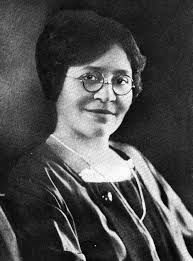 Annie Minerva Turnbo was born in Metropolis, Illinois, where her mother, Isabella escaped to when her father went off to fight for the Union with the 1st Kentucky Cavalry in the Civil War. By 1896, Annie had moved in with her older sister in Peoria, where she would attend high school and become intrigued with chemistry. Although she would later withdraw due to frequent illness, Annie combined what she had learned with her fascination with hair and hair care. Annie began to develop her own hair-care products when many women used goose fat, heavy oils, soap, or bacon grease to straighten their curls, which damaged both scalp and hair. Annie developed and manufactured her own line of non-damaging hair straighteners, special oils, and hair-stimulant products for Black women entitled “Wonderful Hair Grower” selling bottles door to door. Her products revolutionize hair-care methods for all Black people and 1902, she moved to a thriving St. Louis, where she and three employees sold her hair-care products door-to-door. Due to the high demand for her product in St. Louis, Annie opened her first shop, launched an advertising campaign, and recruited women she trained to sell her products. One of her selling agents, later known as Madam C. J. Walker, operated first in St. Louis and later in Denver, Colorado until a disagreement led Walker to leave the company and taking the original Poro formula under her own brand, leading Annie to copyright her products under the name “Poro”. By 1918 Annie established a cosmetology school and center, Poro College, which consisted of a manufacturing plant, a retail store, business offices, a 500-seat auditorium, dining and meeting rooms, a roof garden, dormitory, gymnasium, bakery, and chapel. It served the Black community as a center for religious and social functions, employed nearly 200 people in St. Louis, and assisted in the expansion of Poro, creating jobs for almost 75,000 women in North and South America, Africa and the Philippines. In 1914, Annie Turnbo married Aaron Eugene Malone, and her business thrived and had become a multi-millionaire. She gave thousands of dollars to the local black YMCA and the Howard University College of Medicine in Washington, DC, and became a benefactor of the St. Louis Colored Orphans Home, where she served as president on the board of directors from 1919 to 1943. Upgraded and expanded, the facility was renamed in the entrepreneur’s honor as the Annie Malone Children and Family Service Center. As well as funding many programs, Annie ensured her employees were paid well and given opportunities for advancement. However, in 1927 her husband filed for divorce and Annie, with the support from her employees and powerful figures such as Mary McLeod Bethune, negotiated a settlement of $200,000 and affirmed her as the sole owner of Poro College. After the divorce, Turnbo moved most of her business to Chicago’s South Parkway, where she bought an entire city block. Lawsuit settlements with former employees forced Annie to reduce the size of her business, but she still continued to thrive. Annie was named an honorary member of the Zeta Phi Beta sorority and was awarded an honorary degree from Howard University. On May 10, 1957, Annie Turnbo suffered a stroke and died at Chicago’s Provident Hospital. Childless, she bequeathed her business and remaining fortune to her nieces and nephews which was valued at $100,000. St. Louis has an annual Annie Malone parade in support of children’s charities.
Annie Minerva Turnbo was born in Metropolis, Illinois, where her mother, Isabella escaped to when her father went off to fight for the Union with the 1st Kentucky Cavalry in the Civil War. By 1896, Annie had moved in with her older sister in Peoria, where she would attend high school and become intrigued with chemistry. Although she would later withdraw due to frequent illness, Annie combined what she had learned with her fascination with hair and hair care. Annie began to develop her own hair-care products when many women used goose fat, heavy oils, soap, or bacon grease to straighten their curls, which damaged both scalp and hair. Annie developed and manufactured her own line of non-damaging hair straighteners, special oils, and hair-stimulant products for Black women entitled “Wonderful Hair Grower” selling bottles door to door. Her products revolutionize hair-care methods for all Black people and 1902, she moved to a thriving St. Louis, where she and three employees sold her hair-care products door-to-door. Due to the high demand for her product in St. Louis, Annie opened her first shop, launched an advertising campaign, and recruited women she trained to sell her products. One of her selling agents, later known as Madam C. J. Walker, operated first in St. Louis and later in Denver, Colorado until a disagreement led Walker to leave the company and taking the original Poro formula under her own brand, leading Annie to copyright her products under the name “Poro”. By 1918 Annie established a cosmetology school and center, Poro College, which consisted of a manufacturing plant, a retail store, business offices, a 500-seat auditorium, dining and meeting rooms, a roof garden, dormitory, gymnasium, bakery, and chapel. It served the Black community as a center for religious and social functions, employed nearly 200 people in St. Louis, and assisted in the expansion of Poro, creating jobs for almost 75,000 women in North and South America, Africa and the Philippines. In 1914, Annie Turnbo married Aaron Eugene Malone, and her business thrived and had become a multi-millionaire. She gave thousands of dollars to the local black YMCA and the Howard University College of Medicine in Washington, DC, and became a benefactor of the St. Louis Colored Orphans Home, where she served as president on the board of directors from 1919 to 1943. Upgraded and expanded, the facility was renamed in the entrepreneur’s honor as the Annie Malone Children and Family Service Center. As well as funding many programs, Annie ensured her employees were paid well and given opportunities for advancement. However, in 1927 her husband filed for divorce and Annie, with the support from her employees and powerful figures such as Mary McLeod Bethune, negotiated a settlement of $200,000 and affirmed her as the sole owner of Poro College. After the divorce, Turnbo moved most of her business to Chicago’s South Parkway, where she bought an entire city block. Lawsuit settlements with former employees forced Annie to reduce the size of her business, but she still continued to thrive. Annie was named an honorary member of the Zeta Phi Beta sorority and was awarded an honorary degree from Howard University. On May 10, 1957, Annie Turnbo suffered a stroke and died at Chicago’s Provident Hospital. Childless, she bequeathed her business and remaining fortune to her nieces and nephews which was valued at $100,000. St. Louis has an annual Annie Malone parade in support of children’s charities.
This information was derived from the internet @ https://en.wikipedia.org/wiki/Annie_Turnbo_Malone
Breffu (???? – 1734)
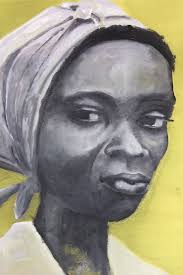
Breffu was a slave from Akwamu, Ghana. She was enslaved at a plantation owned by Pieter Krøyer in the Danish owned Coral Bay, St. John until 23 November 1733 when she lead a slave rebellion. Slaves hid knives in wood that they had delivered to Coral Bay’s Fort Fredericksvaern, killing a majority of the soldiers and taking over the fort; firing a cannon shot to signal the takeover. Upon hearing the signal, Breffu and the other slaves entered the main house and killed both Krøyer and his wife. Taking all gunpowder and ammunition, and accompanied by fellow slaves, Breffu then proceeded to the Van Stell family house, where she killed three members of the plantation owner’s family, which were one of the wealthiest families on the island. A few slave masters managed to escape off the island on their boats, leaving the Akwamu people to took control of most of the island. With Breffu as their leader, they were successful until early 1934 when the French military agreed to help the Danish slave owners regain the Island and their lost plantations. By April 1734, Breffu and 23 other Akwamu rebels committed suicide to prevent being captured. The Akwamus were defeated by the French within a few weeks and by the end of May, many surviving plantation owners regained their property. The last Akwamu rebels were killed in August of that year, officially ending the 1733 slave insurrection on St John. The French were stunned to find out that a woman single-handedly led one of the most extended rebellions in the New World. Breffu is now regarded as a hero and is known as the ‘Queen of St John’.
This information was derived from the internet @ https://www.ghanaweb.com/GhanaHomePage/NewsArchive/The-story-of-Breffu-A-female-slave-from-Ghana-who-led-a-slave-revolt-to-take-over-the-West-Indies-in-1733-827257
Mary Jane Patterson (1840 – 1894)
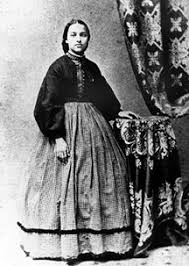 Mary Jane Patterson was born in North Carolina in 1840, the daughter of Henry Patterson, an escaped slave, and Emeline Patterson. When the Fugitive Slave Act was passed in 1850, the family moved north and settled in Oberlin, Ohio, where her father prospered as a mason. While her older brother also became a mason, Patterson and her three younger siblings attended Oberlin College, the first co-educational college in America and the first (in 1835) to admit African-Americans as students. There she and two of her sisters, Channie and Emma, studied to become teachers. When Patterson received her degree from Oberlin in 1862, she became the first African-American woman to graduate from college in the United States. Patterson taught in Philadelphia until 1869, when she and her sister Channie were appointed to teach in the black school system in Washington, D.C., which was renowned for the excellence of the education it offered. Two years after she arrived, Patterson was appointed principal of Washington Colored High School, the city’s only high school for African-Americans and one of the premier schools for African-Americans in the country. She served one year as principal, after which she was replaced by Richard T. Greener, who was Harvard University‘s first black graduate and the father of Belle da Costa Greene . He stayed only one year, however, and in 1873 Patterson was reinstated as principal, a post she would hold for 11 more years. The school flourished under her leadership. Because its enrollment grew, however, in 1884 the school board again decided to replace Patterson as principal with a man. Patterson remained at the school as a teacher for the rest of her life, never marrying and continuing to dedicate herself to educating the descendants of ex-slaves. Months before her death at the age of 54, Patterson was working with colleague Mary Church Terrell to incorporate the Colored Women’s League of Washington, D.C., which later became the National Association of Colored Women.
Mary Jane Patterson was born in North Carolina in 1840, the daughter of Henry Patterson, an escaped slave, and Emeline Patterson. When the Fugitive Slave Act was passed in 1850, the family moved north and settled in Oberlin, Ohio, where her father prospered as a mason. While her older brother also became a mason, Patterson and her three younger siblings attended Oberlin College, the first co-educational college in America and the first (in 1835) to admit African-Americans as students. There she and two of her sisters, Channie and Emma, studied to become teachers. When Patterson received her degree from Oberlin in 1862, she became the first African-American woman to graduate from college in the United States. Patterson taught in Philadelphia until 1869, when she and her sister Channie were appointed to teach in the black school system in Washington, D.C., which was renowned for the excellence of the education it offered. Two years after she arrived, Patterson was appointed principal of Washington Colored High School, the city’s only high school for African-Americans and one of the premier schools for African-Americans in the country. She served one year as principal, after which she was replaced by Richard T. Greener, who was Harvard University‘s first black graduate and the father of Belle da Costa Greene . He stayed only one year, however, and in 1873 Patterson was reinstated as principal, a post she would hold for 11 more years. The school flourished under her leadership. Because its enrollment grew, however, in 1884 the school board again decided to replace Patterson as principal with a man. Patterson remained at the school as a teacher for the rest of her life, never marrying and continuing to dedicate herself to educating the descendants of ex-slaves. Months before her death at the age of 54, Patterson was working with colleague Mary Church Terrell to incorporate the Colored Women’s League of Washington, D.C., which later became the National Association of Colored Women.
This information was derived from the internet @ https://www.encyclopedia.com/women/encyclopedias-almanacs-transcripts-and-maps/patterson-mary-jane-1840-1894
John Stewart Rock (1825 – 1866)
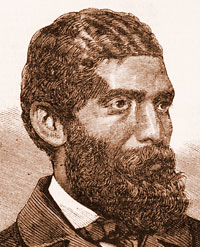 John Stewart Rock was born in Salem, New Jersey, to free black parents. Educated in the public schools, he was a grammar school teacher between 1844 and 1848. During this time, he also studied medicine while working as an assistant to two white doctors. After being denied admission to medical school, Rock studied dentistry with Dr. Samuel C. Harbert in Salem and subsequently opened a dental practice in Philadelphia in 1850. After a renewed effort, he was admitted to the American Medical College and graduated with a medical degree in 1852. Following his marriage to Catherine Bowers in that same year, he and his wife moved to Boston where Dr. Rock established a successful practice that offered free services to fugitive slaves. A gifted orator, he lectured on behalf of the abolitionist cause, voting rights for free African Americans, and the newly formed Republican Party. After poor health forced him to give up his medical practice in 1859 and dentistry by 1861, Rock pursued a career in law. In 1861, he was one of the first African Americans admitted to the Massachusetts Bar and in September of that year, he was appointed a Justice of the Peace for Boston and Suffolk County, Massachusetts. By then the country was at war, and throughout the conflict Rock was a tireless advocate for abolition of slavery. Like Frederick Douglass, he was an enthusiastic recruiter for the black volunteer regiments from Massachusetts. On February 1, 1865, the day after the House of Representatives passed the 13th Amendment to the Constitution, Senator Charles Sumner introduced a motion at the U.S. Supreme Court; when it passed that same day, John S. Rock became the first African American admitted to practice there. Rock’s declining health prevented him from fully exercising this hallmark privilege. He died of tuberculosis in December 1866.
John Stewart Rock was born in Salem, New Jersey, to free black parents. Educated in the public schools, he was a grammar school teacher between 1844 and 1848. During this time, he also studied medicine while working as an assistant to two white doctors. After being denied admission to medical school, Rock studied dentistry with Dr. Samuel C. Harbert in Salem and subsequently opened a dental practice in Philadelphia in 1850. After a renewed effort, he was admitted to the American Medical College and graduated with a medical degree in 1852. Following his marriage to Catherine Bowers in that same year, he and his wife moved to Boston where Dr. Rock established a successful practice that offered free services to fugitive slaves. A gifted orator, he lectured on behalf of the abolitionist cause, voting rights for free African Americans, and the newly formed Republican Party. After poor health forced him to give up his medical practice in 1859 and dentistry by 1861, Rock pursued a career in law. In 1861, he was one of the first African Americans admitted to the Massachusetts Bar and in September of that year, he was appointed a Justice of the Peace for Boston and Suffolk County, Massachusetts. By then the country was at war, and throughout the conflict Rock was a tireless advocate for abolition of slavery. Like Frederick Douglass, he was an enthusiastic recruiter for the black volunteer regiments from Massachusetts. On February 1, 1865, the day after the House of Representatives passed the 13th Amendment to the Constitution, Senator Charles Sumner introduced a motion at the U.S. Supreme Court; when it passed that same day, John S. Rock became the first African American admitted to practice there. Rock’s declining health prevented him from fully exercising this hallmark privilege. He died of tuberculosis in December 1866.
This information was derived from the internet @ https://loc.gov/exhibits/civil-war-in-america/biographies/john-s-rock.html
William Hallett Green (1864 – 1942)
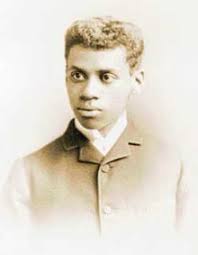 Green was born in New York City as the son of Susan Bulkley and Hallett Green, recorded in the census as a mulatto coachman who owned his residence. William graduated from City College (now part of the City University of New York) at the age of 19 with a Bachelor of Science degree in 1884. The New York Times reported on his class’ graduation, noting that “W.H. Green is the first colored boy who has ever graduated from the college, and he has made a good record.” His portrait now hangs in the Trustee Lounge of the City University of New York. Green applied to the U.S. Signal Corps but was initially rejected, because he was Black. His case was taken up by the then-president of City College, General Alexander Webb, who wrote to Secretary of War Robert Todd Lincoln on behalf of Green. Lincoln agreed that Green deserved a place in the Signal Corps but faced strong opposition from Brigadier General William Hazen, Commanding Officer of the Signal Corps. Hazen’s opposition rested on the convention (approved by Congress) that black soldiers could only serve in four regiments, two in the cavalry and two in the infantry. After Lincoln overruled Hazen’s interpretation of this convention, Green was accepted into the U.S. Signal Corps as its Black member and scored high on the Corps’ competitive entrance exam. By 1887 however, Green was unfairly dishonorably discharged from the Corps after a series of disputed claims regarding his behavior and character. He later changed his name and moved to New Orleans, Louisiana. Green is considered to be the first Black meteorologist and first Black station chief in the Signal Corps and opened the door for other Blacks to enlist in some branches of the Army from which they were previously barred, including the Hospital Corps, Ordnance Corps, Commissary, and Quartermaster Departments. In 2007, the New York State Assembly’s Standing Committee on Veterans’ Affairs paid tribute to Green’s triumphs and challenges with a resolution, “Honoring the Life and Accomplishment of William Hallett Green, the First Black Graduate of the City University of New York, and Member of the United States Army Signal Corps.”
Green was born in New York City as the son of Susan Bulkley and Hallett Green, recorded in the census as a mulatto coachman who owned his residence. William graduated from City College (now part of the City University of New York) at the age of 19 with a Bachelor of Science degree in 1884. The New York Times reported on his class’ graduation, noting that “W.H. Green is the first colored boy who has ever graduated from the college, and he has made a good record.” His portrait now hangs in the Trustee Lounge of the City University of New York. Green applied to the U.S. Signal Corps but was initially rejected, because he was Black. His case was taken up by the then-president of City College, General Alexander Webb, who wrote to Secretary of War Robert Todd Lincoln on behalf of Green. Lincoln agreed that Green deserved a place in the Signal Corps but faced strong opposition from Brigadier General William Hazen, Commanding Officer of the Signal Corps. Hazen’s opposition rested on the convention (approved by Congress) that black soldiers could only serve in four regiments, two in the cavalry and two in the infantry. After Lincoln overruled Hazen’s interpretation of this convention, Green was accepted into the U.S. Signal Corps as its Black member and scored high on the Corps’ competitive entrance exam. By 1887 however, Green was unfairly dishonorably discharged from the Corps after a series of disputed claims regarding his behavior and character. He later changed his name and moved to New Orleans, Louisiana. Green is considered to be the first Black meteorologist and first Black station chief in the Signal Corps and opened the door for other Blacks to enlist in some branches of the Army from which they were previously barred, including the Hospital Corps, Ordnance Corps, Commissary, and Quartermaster Departments. In 2007, the New York State Assembly’s Standing Committee on Veterans’ Affairs paid tribute to Green’s triumphs and challenges with a resolution, “Honoring the Life and Accomplishment of William Hallett Green, the First Black Graduate of the City University of New York, and Member of the United States Army Signal Corps.”
This information was derived from the internet @ https://en.wikipedia.org/wiki/William_Hallett_Greene
Ida Gray Nelson Rollins (1867 – 1953)
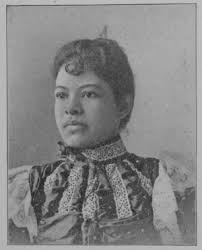 Ida Gray Nelson Rollins was born in Clarksville, Tennessee, on March 4, 1867. Her aunt, Caroline Gray raised Ida after her mother, Jennie Gray, died in her early teens and raised her and her three children in Cincinnati, Ohio. While in high school, Rollins worked as a seamstress and dressmaker and in the dental office of Jonathan and William Taft and eventually graduated from Gaines Public High School in 1887. The mentorship provided by William Taft and her experience working in the dental office sparked Rollins interest in the practice of dentistry. Rollins would go on to enroll in the University of Michigan in 1887 and graduated in 1890, becoming the first Black woman to graduate with a Doctorate of Dental Surgery in the United States. After graduation in 1890, Gray returned to Cincinnati, Ohio and opened a private dental practice. She remained in this practice until 1895 when she married Sanford Nelson, a Spanish-American War veteran. The couple moved to Chicago, Illinois where Rollins set up a practice serving a clientele of men and women of all races. She soon became the first Black person to practice dentistry in Chicago. Her husband died on March 11, 1926 and three years later at the age of 62, she married William Rollins. Ida Gray Nelson Rollins participated in a number of women’s organization and served as president of the Professional Women’s Club of Chicago. She retired from her dentistry practice sometime in the mid-1930s. On June 20, 1944, her second husband died from injuries sustained in a motor vehicle accident and she remained a widow until her death on May 3, 1953 in Chicago, Illinois. She was 86 years old.
Ida Gray Nelson Rollins was born in Clarksville, Tennessee, on March 4, 1867. Her aunt, Caroline Gray raised Ida after her mother, Jennie Gray, died in her early teens and raised her and her three children in Cincinnati, Ohio. While in high school, Rollins worked as a seamstress and dressmaker and in the dental office of Jonathan and William Taft and eventually graduated from Gaines Public High School in 1887. The mentorship provided by William Taft and her experience working in the dental office sparked Rollins interest in the practice of dentistry. Rollins would go on to enroll in the University of Michigan in 1887 and graduated in 1890, becoming the first Black woman to graduate with a Doctorate of Dental Surgery in the United States. After graduation in 1890, Gray returned to Cincinnati, Ohio and opened a private dental practice. She remained in this practice until 1895 when she married Sanford Nelson, a Spanish-American War veteran. The couple moved to Chicago, Illinois where Rollins set up a practice serving a clientele of men and women of all races. She soon became the first Black person to practice dentistry in Chicago. Her husband died on March 11, 1926 and three years later at the age of 62, she married William Rollins. Ida Gray Nelson Rollins participated in a number of women’s organization and served as president of the Professional Women’s Club of Chicago. She retired from her dentistry practice sometime in the mid-1930s. On June 20, 1944, her second husband died from injuries sustained in a motor vehicle accident and she remained a widow until her death on May 3, 1953 in Chicago, Illinois. She was 86 years old.
This information was derived from the internet @ https://www.blackpast.org/african-american-history/rollins-ida-gray-nelson-1867-1953/
Thomas Mundy Peterson (1824 – 1904)
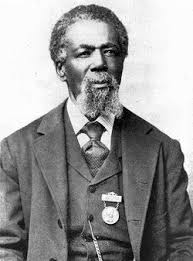 Thomas Mundy Peterson was born in Metuchen, New Jersey. His father, also named Thomas, worked for the Mundy family and his mother, Lucy Green, was a slave of Hugh Newell of Freehold Township, New Jersey. Thomas was a school janitor between 1870 and 1878 and a general handyman in Perth Amboy. Thomas was very active within the Republican Party and the Prohibition Party and became the first Black person to vote on any level when he voted in a local election held at Perth Amboy City Hall over the town’s charter. After the vote, Peterson was appointed to be a member of the committee of seven that made subsequent amendments leading to the final version that was approved by the State Legislature April 5,1871. To honor Thomas Mundy Peterson as the first Black voter after the passage of the 15th Amendment, the citizens of Perth Amboy raised $70 (about $1,800 in 2019 dollars) to award him with a gold medallion, which consisted of a gold bar featuring a profile bust of a clean-shaven Abraham Lincoln. It was presented to Thomas Mundy Peterson on Decoration Day (now Memorial Day) May 30,1884. The medallion is currently housed at the historically Black College/University (HBCU) Xavier University of Louisiana. Thomas was also the city’s first “colored” person to serve on a jury. In October 1989, the school where Peterson had worked was renamed after him. Now currently on State Street, Perth Amboy. In New Jersey, March 31 is annually celebrated as Thomas Mundy Peterson Day in recognition of his historic vote.
Thomas Mundy Peterson was born in Metuchen, New Jersey. His father, also named Thomas, worked for the Mundy family and his mother, Lucy Green, was a slave of Hugh Newell of Freehold Township, New Jersey. Thomas was a school janitor between 1870 and 1878 and a general handyman in Perth Amboy. Thomas was very active within the Republican Party and the Prohibition Party and became the first Black person to vote on any level when he voted in a local election held at Perth Amboy City Hall over the town’s charter. After the vote, Peterson was appointed to be a member of the committee of seven that made subsequent amendments leading to the final version that was approved by the State Legislature April 5,1871. To honor Thomas Mundy Peterson as the first Black voter after the passage of the 15th Amendment, the citizens of Perth Amboy raised $70 (about $1,800 in 2019 dollars) to award him with a gold medallion, which consisted of a gold bar featuring a profile bust of a clean-shaven Abraham Lincoln. It was presented to Thomas Mundy Peterson on Decoration Day (now Memorial Day) May 30,1884. The medallion is currently housed at the historically Black College/University (HBCU) Xavier University of Louisiana. Thomas was also the city’s first “colored” person to serve on a jury. In October 1989, the school where Peterson had worked was renamed after him. Now currently on State Street, Perth Amboy. In New Jersey, March 31 is annually celebrated as Thomas Mundy Peterson Day in recognition of his historic vote.
This information was derived from the internet @ https://en.wikipedia.org/wiki/Thomas_Mundy_Peterson
Jupiter Hammon (1711-ca. 1806)
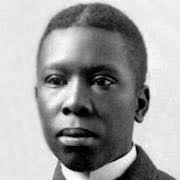 Details about Jupiter Hammon’s life are buried in the unaddressed history of slavery in the Northern U.S states. Born into slavery at the Lloyd Manor at what is now Lloyd Harbor, New York Hammon served the Lloyd family his entire life, working under four generations of the family masters. The Lloyds allowed Hammon to receive a rudimentary education through the Anglican Church’s Society for the Propagation of the Gospel in Foreign Parts system. Hammon’s ability to read and write aided his slave masters in their commercial businesses, which supported institutionalized slavery and to express his ever evolving feelings about slavery. In early 1761, Hammon became the first Black published author in North America with his poem entitled “An Evening Thought: Salvation by Christ, with Penitential Cries.” Hammon’s full body of work consists of eight publications, four poems and four prose, all consisting of religious content including “An Address to Miss Phillis Wheatley”, “The Kind Master and Dutiful Servant,” and “A Poem for Children with Thoughts on Death” in 1782. These works set the tone for perhaps Hammon’s most important work “An Address to Negros in the State of New York,” which he delivered at the inaugural meeting of the African Society in New York City on September 24,1786. Although scholars believe Hammon supported gradual abolition as a way to end slavery, New York Quakers who supported the abolition of slavery published Hammon’s speech, and it was reprinted by several abolitionist groups, including the Pennsylvania Society for Promoting the Abolition of Slavery. It is believed that Jupiter Hammon died around 1806 and was buried separately from the Lloyds on the Lloyd family property in an unmarked grave. In 2013 and 2015 two more of Hammons writings were rediscovered by Julie McCown discovered a poem, dated 1786 and Claire Bellerjeau found another while investing the Townsend family and their slaves who liver at Raynham Hall in nearby Oyster Bay.
Details about Jupiter Hammon’s life are buried in the unaddressed history of slavery in the Northern U.S states. Born into slavery at the Lloyd Manor at what is now Lloyd Harbor, New York Hammon served the Lloyd family his entire life, working under four generations of the family masters. The Lloyds allowed Hammon to receive a rudimentary education through the Anglican Church’s Society for the Propagation of the Gospel in Foreign Parts system. Hammon’s ability to read and write aided his slave masters in their commercial businesses, which supported institutionalized slavery and to express his ever evolving feelings about slavery. In early 1761, Hammon became the first Black published author in North America with his poem entitled “An Evening Thought: Salvation by Christ, with Penitential Cries.” Hammon’s full body of work consists of eight publications, four poems and four prose, all consisting of religious content including “An Address to Miss Phillis Wheatley”, “The Kind Master and Dutiful Servant,” and “A Poem for Children with Thoughts on Death” in 1782. These works set the tone for perhaps Hammon’s most important work “An Address to Negros in the State of New York,” which he delivered at the inaugural meeting of the African Society in New York City on September 24,1786. Although scholars believe Hammon supported gradual abolition as a way to end slavery, New York Quakers who supported the abolition of slavery published Hammon’s speech, and it was reprinted by several abolitionist groups, including the Pennsylvania Society for Promoting the Abolition of Slavery. It is believed that Jupiter Hammon died around 1806 and was buried separately from the Lloyds on the Lloyd family property in an unmarked grave. In 2013 and 2015 two more of Hammons writings were rediscovered by Julie McCown discovered a poem, dated 1786 and Claire Bellerjeau found another while investing the Townsend family and their slaves who liver at Raynham Hall in nearby Oyster Bay.
This information was derived from the internet @ https://en.wikipedia.org/wiki/Jupiter_Hammonhttps
Elijah McCoy (1844 – 1929)
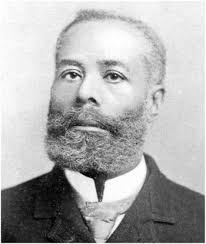 Elijah McCoy was born in Canada to parents who had fled slavery. His parents arranged for him to travel to Scotland at the age of 15 for an apprenticeship in mechanical engineering. He returned to the United States after becoming certified as a mechanical engineer. Despite his qualifications, McCoy was unable to find work as an engineer in the United States due to racial barriers and instead became a fireman with the Michigan Central Railroad where he developed his first major invention. In 1872, McCoy developed an automatic lubricator that spread oil evenly over a train’s engine while it was still moving. The invention allowed trains to run for long periods of time without stopping, which saved both time and money. As his invention grew in popularity, inferior copycats emerged. Railway engineers requested “the real McCoy.” meaning “the real thing.” One year later he would go on to marry Mary Eleanor Delaney and continued to refine his devices, receiving nearly 60 patents over the course of his life. While the majority of his inventions related to lubrication systems, he also developed designs for an ironing board, a lawn sprinkler, and other machines. Although McCoy’s achievements were recognized in his own time, his name did not appear on the majority of the products that he devised, he typically assigned his patent rights to his employers or sold them to investors. In 1920, McCoy formed the Elijah McCoy Manufacturing Company to produce lubricators bearing his name but in 1922, the McCoy’s were involved in an automobile accident. Mary died, while Elijah sustained critical injuries from which he never fully recovered. McCoy died in the Eloise Infirmary in Detroit, Michigan, on October 10, 1929 and he was buried at Detroit Memorial Park East in Warren, Michigan. He was 85 years old.
Elijah McCoy was born in Canada to parents who had fled slavery. His parents arranged for him to travel to Scotland at the age of 15 for an apprenticeship in mechanical engineering. He returned to the United States after becoming certified as a mechanical engineer. Despite his qualifications, McCoy was unable to find work as an engineer in the United States due to racial barriers and instead became a fireman with the Michigan Central Railroad where he developed his first major invention. In 1872, McCoy developed an automatic lubricator that spread oil evenly over a train’s engine while it was still moving. The invention allowed trains to run for long periods of time without stopping, which saved both time and money. As his invention grew in popularity, inferior copycats emerged. Railway engineers requested “the real McCoy.” meaning “the real thing.” One year later he would go on to marry Mary Eleanor Delaney and continued to refine his devices, receiving nearly 60 patents over the course of his life. While the majority of his inventions related to lubrication systems, he also developed designs for an ironing board, a lawn sprinkler, and other machines. Although McCoy’s achievements were recognized in his own time, his name did not appear on the majority of the products that he devised, he typically assigned his patent rights to his employers or sold them to investors. In 1920, McCoy formed the Elijah McCoy Manufacturing Company to produce lubricators bearing his name but in 1922, the McCoy’s were involved in an automobile accident. Mary died, while Elijah sustained critical injuries from which he never fully recovered. McCoy died in the Eloise Infirmary in Detroit, Michigan, on October 10, 1929 and he was buried at Detroit Memorial Park East in Warren, Michigan. He was 85 years old.
This information was derived from the internet @ https://www.biography.com/inventor/elijah-mccoy & https://en.wikipedia.org/wiki/Elijah_McCoy
Salem Poor (1747 – 1802)
Poor was born in 1747 into slavery in Andover, Massachusetts where he was owned by John Poor. At the age of 22, Poor would buy his freedom on July 10, 1769 for £27, about the average year’s salary. Poor would later marry Nancy Parker in 1771, a free mulatto woman of Indigenous American and Black ancestry. They would go on to have a son, Jonas, before Poor would go off to enlist in the Continental Army in May of 1775, soon after partaking in one of the most pivotal battles of the Revolutionary War, known as the Battle of Bunker Hill. Although the Continental Army would be defeated in the battle, Poor distinguished himself as a fierce warrior, mortally wounding British Lieutenant Colonel James Abercrombie and several other British soldiers during the battle. At least 14 officers, including Colonel William Prescott, cited him for heroism and praised him in a petition to the General Court of Massachusetts. In spite of George Washington briefly prohibiting all black men from serving in the Continental Army until the British offered freedom to all the enslaved Blacks if they served for them, Poor re-enlisted several times and was involved in battles at Saratoga (New York), Monmouth (New Jersey), and Valley Forge (Pennsylvania) before being discharged in March of 1780. Later in 1780 Poor married his second wife, Mary Twing. The couple moved to Providence, Rhode Island, but records state they were “ordered to leave town.” By 1785, Poor left Mary Twing on sour terms, and remarrying a third time to a white woman named Sarah Stevens in 1787, and again in 1801. During the mid 1790’s Poor was homeless for a period of time and was jailed briefly in 1799 for “breach of peace.” Salem Poor died in 1802 at the age of 55 and was interred at Copps Hill Burial Ground near Boston, Massachusetts. On March 25, 1975, “Salem Poor- Gallant Soldier” was honored with his image on a ten cent postage stamp, as part of the Postal Service Revolutionary War Bicentennial Series of stamps entitled “Contributors to the Cause.”
This information was derived from the internet @ https://www.blackpast.org/african-american-history/poor-salem-1747-1780/ & https://en.wikipedia.org/wiki/Salem_Poor
Edmonia Lewis (1844 – 1907)
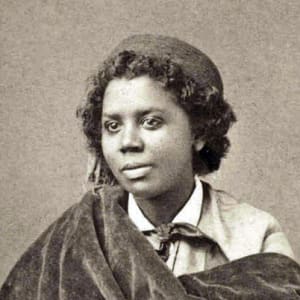 Edmonia Lewis was the first professional Black and Native American sculptor. Elusive when it came to personal details, Lewis claimed different years of birth throughout out her life, but research indicates she was born around 1844 in upstate New York and was orphaned at an early age and raised by some of her mother’s relatives. With the support and encouragement of a successful older brother, Lewis attended Oberlin College in Ohio where she emerged as a talented artist until she was falsely accused of poisoning two white classmates for which, she was captured and beaten by a white mob. She would later recover and escaped to Boston after the charges against her were dropped. In Boston, Lewis befriended abolitionist William Lloyd Garrison and sculptor Edward A. Brackett. Brackett taught Lewis to sculpt and helped propel her to set up her own studio. By the early 1860s, her clay and plaster medallions of Garrison, John Brown and other abolitionist leaders gave her small measures of commercial success. Her most famous early work was her bust of Colonel Robert Shaw, a Civil War hero who had died leading the all-black 54th Massachusetts Regiment. With the money she earned selling copies of the bust, Lewis moved to Rome and where she would master working in marble. Lewis would go on to create many more prized works of art while in Rome, including “Forever Free”, a sculpture depicting a black man and woman emerging from the bonds of slavery, “The Arrow Maker”, which draws on her Native American roots and shows a father teaching his young daughter how to make an arrow, and bust of American presidents Ulysses S. Grant and Abraham Lincoln. Her most critically acclaimed work however, was a depiction of the Egyptian Queen Cleopatra, titled “The Death of Cleopatra.” The two-ton sculpture, which was exhibited in Philadelphia and Chicago, never returned to Italy because Lewis could not afford the shipping costs to bring it back with her. Until the 1890s, she continued to exhibit her work and was even visited by Frederick Douglass in Rome. Recent discovery of death documents indicate that she died in London, England, in 1907 under unclear circumstances. It was only several decades after Lewis death, her most critically acclaim piece, “The Death of Cleopatra” was rediscovered. In recent decades Lewis’s life and art have received posthumous acclaim. Her pieces are now part of the permanent collections of the Howard University Gallery of Art and the Smithsonian American Art Museum.
Edmonia Lewis was the first professional Black and Native American sculptor. Elusive when it came to personal details, Lewis claimed different years of birth throughout out her life, but research indicates she was born around 1844 in upstate New York and was orphaned at an early age and raised by some of her mother’s relatives. With the support and encouragement of a successful older brother, Lewis attended Oberlin College in Ohio where she emerged as a talented artist until she was falsely accused of poisoning two white classmates for which, she was captured and beaten by a white mob. She would later recover and escaped to Boston after the charges against her were dropped. In Boston, Lewis befriended abolitionist William Lloyd Garrison and sculptor Edward A. Brackett. Brackett taught Lewis to sculpt and helped propel her to set up her own studio. By the early 1860s, her clay and plaster medallions of Garrison, John Brown and other abolitionist leaders gave her small measures of commercial success. Her most famous early work was her bust of Colonel Robert Shaw, a Civil War hero who had died leading the all-black 54th Massachusetts Regiment. With the money she earned selling copies of the bust, Lewis moved to Rome and where she would master working in marble. Lewis would go on to create many more prized works of art while in Rome, including “Forever Free”, a sculpture depicting a black man and woman emerging from the bonds of slavery, “The Arrow Maker”, which draws on her Native American roots and shows a father teaching his young daughter how to make an arrow, and bust of American presidents Ulysses S. Grant and Abraham Lincoln. Her most critically acclaimed work however, was a depiction of the Egyptian Queen Cleopatra, titled “The Death of Cleopatra.” The two-ton sculpture, which was exhibited in Philadelphia and Chicago, never returned to Italy because Lewis could not afford the shipping costs to bring it back with her. Until the 1890s, she continued to exhibit her work and was even visited by Frederick Douglass in Rome. Recent discovery of death documents indicate that she died in London, England, in 1907 under unclear circumstances. It was only several decades after Lewis death, her most critically acclaim piece, “The Death of Cleopatra” was rediscovered. In recent decades Lewis’s life and art have received posthumous acclaim. Her pieces are now part of the permanent collections of the Howard University Gallery of Art and the Smithsonian American Art Museum.
This information was derived from the internet @ https://www.biography.com/artist/edmonia-lewis
Ursula Burns (1958 – )
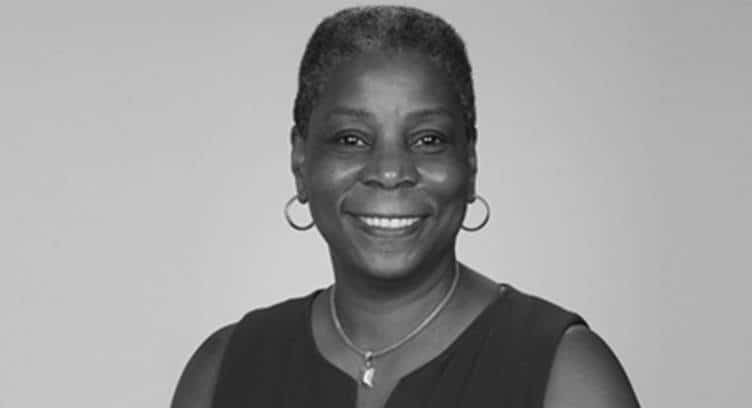 Ursula Burns was born September 20, 1958 in New York, New York and grew up in a low-income housing project on Manhattan’s Lower East Side and was the second of three children raised by a single mother. Excelling at math, Burns later earned a bachelor’s degree in mechanical engineering from the Polytechnic Institute of New York University in 1980 and attained a master’s degree in the same field from Columbia University in 1981. She joined Xerox as a summer intern through the company’s graduate engineering program for minorities and later joined Xerox as a full-time employee and quickly gained a role in product development. By 2000, she became senior vice president of corporate strategic services, which allowed Burns to broaden her leadership at Xerox. By 2007, Burns was named president of Xerox and then the first African American woman to serve as CEO of a Fortune 500 company in 2010. In 2009, Burns was appointed to lead the Science, Technology, Engineering, and Mathematics (STEM) Education Coalition by President Obama and stayed until 2016. During this time she also remained the CEO of Xerox and was a member of the President’s Export Council (PEC), chairing the committee in 2015-16, all until 2016 when she stepped down as CEO of Xerox and as chairman of the board in 2017. Currently, Ursula Burns continues to work and serves on the board of numerous companies including Exxon Mobil, Uber, Nestlé, and an Amsterdam based telecommunications provider VEON.
Ursula Burns was born September 20, 1958 in New York, New York and grew up in a low-income housing project on Manhattan’s Lower East Side and was the second of three children raised by a single mother. Excelling at math, Burns later earned a bachelor’s degree in mechanical engineering from the Polytechnic Institute of New York University in 1980 and attained a master’s degree in the same field from Columbia University in 1981. She joined Xerox as a summer intern through the company’s graduate engineering program for minorities and later joined Xerox as a full-time employee and quickly gained a role in product development. By 2000, she became senior vice president of corporate strategic services, which allowed Burns to broaden her leadership at Xerox. By 2007, Burns was named president of Xerox and then the first African American woman to serve as CEO of a Fortune 500 company in 2010. In 2009, Burns was appointed to lead the Science, Technology, Engineering, and Mathematics (STEM) Education Coalition by President Obama and stayed until 2016. During this time she also remained the CEO of Xerox and was a member of the President’s Export Council (PEC), chairing the committee in 2015-16, all until 2016 when she stepped down as CEO of Xerox and as chairman of the board in 2017. Currently, Ursula Burns continues to work and serves on the board of numerous companies including Exxon Mobil, Uber, Nestlé, and an Amsterdam based telecommunications provider VEON.
This information was derived from the internet @ https://www.thewonderwomenproject.org/pages/biography-of-ursula-burns & https://www.britannica.com/biography/Ursula-Burns
Hiram Rhodes Revels (1827 – 1901)
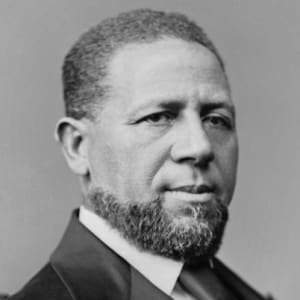
Hiram Rhodes Revels was born in free in Fayetteville, North Carolina, on September 27, 1827. He and his brother owned a babershop until his brother died, leading Revels to leaving North Carolina and studying seminaries in Indiana and (Illinois or Ohio). In 1845, he became an ordained minister in the African Methodist Episcopal Church (AME) and eventually settled in Baltimore, Maryland, where he also served as a principal of a school for Blacks. Revels participated in the Civil War, organizing two black regiments for the Union Army, fighting at the Battle of Vicksburg and serving as a chaplain to Black a regiment stationed in Mississippi. After the war, he settled in Natchez, Mississippi, with his wife and daughters, and continued his career in the clergy and grew to become a respected member of the community. Although he had no previous government experience, Revels accepted an appointment by the military governor as alderman (1868) and was later (1869) elected to the state senate during the first phase of Reconstruction. He then served briefly in the Mississippi State Senate. In 1870, the state congress selected Revels to fill a vacant seat in the United States Senate partially because he supported legislation that would have restored the power to vote and to hold office to disenfranchised members of the former Confederacy. However, Democrats argued that Revels did not meet the nine-year citizenship requirement to hold congressional office given his ineligibility for citizenship through the war years. Ultimately, Revels and his Republican allies prevailed by citing Revels’s mixed-race background, and by January 1870 he was elected to the U.S. Senate to take the seat. During his term, signature issue was civil rights, including the integration of schools and equal opportunities for black workers. Revels resigned from the Senate after a year to accept the presidency of Alcorn Agricultural and Mechanical College, a recently opened institution of higher education for African Americans located in Mississippi. In addition to his administrative and teaching roles, Revels remained involved with the Methodist Church, continuing to preach publicly until the end of his life. Revels died on January 16, 1901, while attending a meeting of Methodist ministers in Aberdeen, Mississippi.
This information was derived from the internet @ https://www.britannica.com/biography/Hiram-Rhodes-Revels & https://www.biography.com/political-figure/hiram-r-revels
Edward Wilmot Blyden (1832 – 1912)
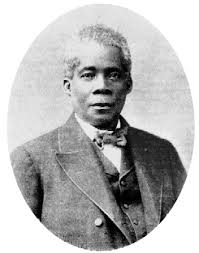 Edward Wilmot Blyden was born on August 3, 1832 in St. Thomas, (now the U.S Virgin Islands) as the third of seven children to free and literate Romeo and Judith Blyden. In 1842, the family moved to Porto Bello, Venezuela where Blyden became fluent in Spainsh and began to notice the global suppression of blacks. Blyden returned to St. Thomas three years later and became a student of Rev. John P. Knox, who became his mentor and helped guide Blyden into being a clergyman. In 1850, Blyden accompanied Mrs. Knox to the U.S to enroll into Rutgers’ Theological College in New Jersey but was refused admission due to his race. After this incident, Blyden turned his attention to Africa, and went to Liberia that same year. He worked as a journalist from 1855 to 1856 and edited the Liberia Herald and wrote the column “A Voice From Bleeding Africa” and contributed to newspapers in the British colonies Nigeria and Sierra Leone. He was also serving as editor at The Negro and The African World and published work in the African Repository and Colonial Journal. Between 1856 and 1887 Blyden authored four books, A Voice From Bleeding Africa (1856); A Vindication of the African Race; Being a Brief Examination of the Arguments in Favor of African Inferiority (1862); Africa for the Africans (1872); and Christianity, Islam and the Negro Race (1887) in which he made the case for Pan-Africanism. As the Liberian Secretary of State (1862-64), Secretary of Interior (1880-82), and an ambassador for Liberia, Blyden traveled to the United States and spoke to major black churches about his belief that Black Americans could end their suffering of racial discrimination by returning to Africa and helping to develop it. Although this perspective led to criticism by African Americans who wanted to gain full civil rights in the, United States, this philosophy was a catalyst to the Pan-African movement in the United States. His ideas have influenced many twentieth-century figures including Marcus Garvey, George Padmore and Kwame Nkrumah and cemented him as the father of Pan-Africanism. Drawing on both scriptures and science, Blyden challenged the arguments about black inferiority that were increasingly popular in Europe and North America during this period. He argued black equality and used examples of little known but successful persons of African ancestry. In 1885, Blyden ran for President of Liberia but was defeated due to his promotion of Black Americans to come to Liberia, leaving the native Liberians disgruntled. After his defeat he went into self-imposed exile in neighboring Sierra Leone where he died on February 7, 1912.
Edward Wilmot Blyden was born on August 3, 1832 in St. Thomas, (now the U.S Virgin Islands) as the third of seven children to free and literate Romeo and Judith Blyden. In 1842, the family moved to Porto Bello, Venezuela where Blyden became fluent in Spainsh and began to notice the global suppression of blacks. Blyden returned to St. Thomas three years later and became a student of Rev. John P. Knox, who became his mentor and helped guide Blyden into being a clergyman. In 1850, Blyden accompanied Mrs. Knox to the U.S to enroll into Rutgers’ Theological College in New Jersey but was refused admission due to his race. After this incident, Blyden turned his attention to Africa, and went to Liberia that same year. He worked as a journalist from 1855 to 1856 and edited the Liberia Herald and wrote the column “A Voice From Bleeding Africa” and contributed to newspapers in the British colonies Nigeria and Sierra Leone. He was also serving as editor at The Negro and The African World and published work in the African Repository and Colonial Journal. Between 1856 and 1887 Blyden authored four books, A Voice From Bleeding Africa (1856); A Vindication of the African Race; Being a Brief Examination of the Arguments in Favor of African Inferiority (1862); Africa for the Africans (1872); and Christianity, Islam and the Negro Race (1887) in which he made the case for Pan-Africanism. As the Liberian Secretary of State (1862-64), Secretary of Interior (1880-82), and an ambassador for Liberia, Blyden traveled to the United States and spoke to major black churches about his belief that Black Americans could end their suffering of racial discrimination by returning to Africa and helping to develop it. Although this perspective led to criticism by African Americans who wanted to gain full civil rights in the, United States, this philosophy was a catalyst to the Pan-African movement in the United States. His ideas have influenced many twentieth-century figures including Marcus Garvey, George Padmore and Kwame Nkrumah and cemented him as the father of Pan-Africanism. Drawing on both scriptures and science, Blyden challenged the arguments about black inferiority that were increasingly popular in Europe and North America during this period. He argued black equality and used examples of little known but successful persons of African ancestry. In 1885, Blyden ran for President of Liberia but was defeated due to his promotion of Black Americans to come to Liberia, leaving the native Liberians disgruntled. After his defeat he went into self-imposed exile in neighboring Sierra Leone where he died on February 7, 1912.
This information was derived from the internet @ https://en.wikipedia.org/wiki/Edward_Wilmot_Blyden & https://blackpast.org/gah/edward-wilmot-blyden-1832-1912
Mary Beatrice Davidson Kenner (1912 – 2006)
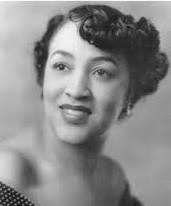 Mary Kenner was born in Monroe, North Carolina and credited her father with giving her a thirst for discovering things. This thirst led her to be able to invent the sanitary belt (maxi pads) with moisture-proof napkin pocket during an era when talk of periods was taboo. However, the sanitary napkin wasn’t used until 1956, thirty years after she had first invented it due to racial discrimination. This did not detour her and she continued to invent amazing items such as a the carrier attachment for an invalid walker in 1959, bathroom tissue holder in October 19, 1982, and a back washer mounted on the shower or bathtub wall in 1987. Between 1956 and 1987 she received five patents for her household and personal item creations. She later stated, “My inventions were never about money. I just want to help make life easier for people.” She worked as a professional floral arranger and had her own business in the field of Washington DC area.
Mary Kenner was born in Monroe, North Carolina and credited her father with giving her a thirst for discovering things. This thirst led her to be able to invent the sanitary belt (maxi pads) with moisture-proof napkin pocket during an era when talk of periods was taboo. However, the sanitary napkin wasn’t used until 1956, thirty years after she had first invented it due to racial discrimination. This did not detour her and she continued to invent amazing items such as a the carrier attachment for an invalid walker in 1959, bathroom tissue holder in October 19, 1982, and a back washer mounted on the shower or bathtub wall in 1987. Between 1956 and 1987 she received five patents for her household and personal item creations. She later stated, “My inventions were never about money. I just want to help make life easier for people.” She worked as a professional floral arranger and had her own business in the field of Washington DC area.
This information was derived from the internet @ https://en.wikipedia.org/wiki/Mary_Kenner & https://www.revolvy.com/page/Mary-Kenner
John Brown Russwurm (1799 – 1851) 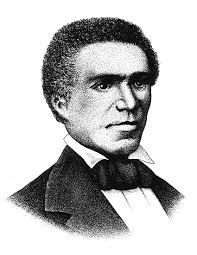
John Brown Russwurm was born in Jamaica on October 1, 1799 to an English father and an enslaved mother. Russwurm and his father moved to Quebec, Canada without his mother and later to Maine, where he attended Bowdoin College and went on to become the first Black person to graduate from there and only the second Black person to earn a college degree in 1826. His graduation speech focused on the Haitian Revolution. The next year he moved to New York and befriended Samuel Cornish, a Black Presbyterian minister and editor, and they would collaborate to publish the first issue of Freedom’s Journal on March 16, 1827. Freedom’s Journal was the first newspaper in the United States to be owned, operated, published and edited by Black people. Upon becoming senior editor in September 1827, Russwurm used his position to change the paper’s opposition to the colonization of Africa by Blacks to advocating for relocation and taking on white publishers who long denigrated and attacked free Blacks. These strong views alienated many of the readers, who opposed Blacks being encouraged to leave the United States. Russwurm departed from the Freedom’s Journal in early 1829 due to his frustration over the seeming impossibility of ending slavery and relocated to Liberia as part of the American Colonization Society. While in Liberia Russwurm found love and married Sarah McGill, the daughter of the Lieutenant-Governor of Monrovia in 1833 and would go on to have a daughter and three sons. By 1836 Russwurm was selected as Governor of Maryland in Liberia, a small colony set up nearby by the Maryland State Colonization Society. Russwurm would spend the next 22 years learning African languages and serving as governor until his death in 1851. At the time of his death, nearly 30 African American newspapers existed in the United States, all devoted to ending slavery. A statue of John Russwurm was erected at his burial site at Harper, Cape Palmas, Liberia. The colony was annexed to Liberia in 1857.
This information was derived from the internet @ http://www.blackpast.org/aah/russwurm-john-1799-1851 & https://en.wikipedia.org/wiki/John_Brown_Russwurm
Mary Church Terrell (1863 – 1954) 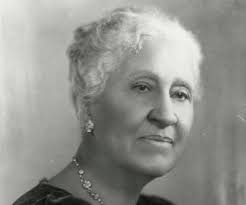 Mary Eliza Church was born on September 23, 1863, in Memphis, Tennessee. Her parents, Robert Reed Church and Louisa Ayers, were both former slaves who used their freedom to become small-business owners Her mother owned a hair salon and her father, was the first black millionaire in the South due to his business and real estate dealings. Church’s parents divorced when she and her brother were young and she left Memphis, Tennessee, and moved to Ohio where she grew up. She attended Oberlin Academy and Oberlin College, earning B.A. in Classical Languages in 1884, becoming one of the first Black women to do so, and later a Master’s degree in 1888. Church became a teacher at Wilberforce College in Ohio before moving to Washington, D.C. in 1887 to join the faculty at M Street Colored High School, which later became Dunbar High School. While in D.C. Mary fell in love with Robert Heberton Terrell, who would eventually become Washington, D.C.’s first black municipal judge, and they married in 1891 in spite of her having to quit teaching due to the regulations at that time. In 1892 a dear friend of Mary Terrell, was lynched back in Memphis, motivating Terrell to work with Frederick Douglass to appeal to President Benjamin Harrison to condemn lynching. President Harrison failed to act, spurning Terrell to form the Colored Women’s League in Washington to address social problems facing black communities and also helped create the National Association of Colored Women (NACW) from 1896 through 1901. As president of the NACW, her tenure as president focused on racial uplift through education and community activism and supported the women’s suffrage movement, even as segregationists tried to exclude black women from the cause. Terrell also served on Washington’s Board of Education in an unpaid position twice from 1895 to 1901, and again from 1906 to 1911. In 1909, Terrell signed the charter that established the National Association for the Advancement for Colored People (NAACP) at the behest of W.E.B. DuBois. Terrell would go on to write an autobiography of her life in 1940 entitled, A Colored Woman in a White World, which details her own battles with gender and race discrimination in the United States. In 1949 Terrell became the first Black person admitted to the Washington chapter of the American Association of University Women and helped bring down segregated restaurants in Washington, D.C. when she and several activist sued these establishments and ruled as unconstitutional one year prior to the Brown V Board of Education in 1954. Mary Church Terrell died on July 24, 1954 at 90. Mary Church Terrell’s home in Washington, D.C. has been named a National Historic Landmark.
Mary Eliza Church was born on September 23, 1863, in Memphis, Tennessee. Her parents, Robert Reed Church and Louisa Ayers, were both former slaves who used their freedom to become small-business owners Her mother owned a hair salon and her father, was the first black millionaire in the South due to his business and real estate dealings. Church’s parents divorced when she and her brother were young and she left Memphis, Tennessee, and moved to Ohio where she grew up. She attended Oberlin Academy and Oberlin College, earning B.A. in Classical Languages in 1884, becoming one of the first Black women to do so, and later a Master’s degree in 1888. Church became a teacher at Wilberforce College in Ohio before moving to Washington, D.C. in 1887 to join the faculty at M Street Colored High School, which later became Dunbar High School. While in D.C. Mary fell in love with Robert Heberton Terrell, who would eventually become Washington, D.C.’s first black municipal judge, and they married in 1891 in spite of her having to quit teaching due to the regulations at that time. In 1892 a dear friend of Mary Terrell, was lynched back in Memphis, motivating Terrell to work with Frederick Douglass to appeal to President Benjamin Harrison to condemn lynching. President Harrison failed to act, spurning Terrell to form the Colored Women’s League in Washington to address social problems facing black communities and also helped create the National Association of Colored Women (NACW) from 1896 through 1901. As president of the NACW, her tenure as president focused on racial uplift through education and community activism and supported the women’s suffrage movement, even as segregationists tried to exclude black women from the cause. Terrell also served on Washington’s Board of Education in an unpaid position twice from 1895 to 1901, and again from 1906 to 1911. In 1909, Terrell signed the charter that established the National Association for the Advancement for Colored People (NAACP) at the behest of W.E.B. DuBois. Terrell would go on to write an autobiography of her life in 1940 entitled, A Colored Woman in a White World, which details her own battles with gender and race discrimination in the United States. In 1949 Terrell became the first Black person admitted to the Washington chapter of the American Association of University Women and helped bring down segregated restaurants in Washington, D.C. when she and several activist sued these establishments and ruled as unconstitutional one year prior to the Brown V Board of Education in 1954. Mary Church Terrell died on July 24, 1954 at 90. Mary Church Terrell’s home in Washington, D.C. has been named a National Historic Landmark.
This information was derived from the internet @ http://www.blackpast.org/aah/terrell-mary-church-1863-1954#sthash.FFDj2iYj.dpuf & http://www.biography.com/people/mary-church-terrell-9504299#synopsis
Patricia Roberts Harris (1924 – 1985) 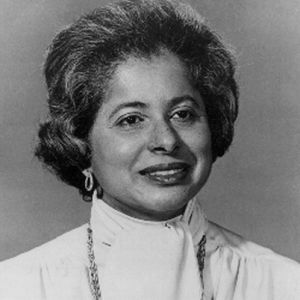
Patricia Roberts Harris was born on May 31, 1924, in Mattoon, Illinois, the daughter of a Pullman car waiter. Raised by her mother after her father left, she excelled at school and won a scholarship to Howard University in 1941. While at Howard, Harris served as vice chairman of the university’s student branch of the National Association for the Advancement of Colored People. As a part of the organization’s civil rights efforts, she participated in a protest against a restaurant that only served whites. Harris graduated from Howard in 1945 with honors and continued her education at the University of Chicago, where she studied industrial relations. Harris worked at Delta Sigma Theta as a director in the 1950’s and also attended George Washington University’s National Law Center and graduated in 1960 as the top student in her class. After graduating, Harris spent a year with the Department of Justice and then returned to teach at Howard University where she was an activist for many social causes. She was appointed by President John F. Kennedy to co-chair the National Women’s Committee for Civil Rights, which oversaw approximately 100 women’s organizations across the nation. In 1965, President Lyndon B. Johnson appointed Harris to be the first Black women to serve as a US ambassador (assigned to Luxembourg). She held the position for two years and then returned to teaching at Howard where she became the dean of the law school in 1969, again making her the first Black woman to do so. By 1970, Harris became a corporate attorney at a large law firm and also served on the boards of IBM, Scott Paper Company, and Chase Manhattan Bank (to name a few) with the intent to help foster social change. In 1977, Harris was appointed to President Jimmy Carter’s Cabinet as secretary of Housing and Urban Development (HUD), and for the third time became the first Black woman, this time to head a Cabinet department and hold a Cabinet post. While leading HUD, Harris increased assistance to the poor, put a stop to discriminatory housing and employment practices, worked hard to rebuild urban neighborhoods, and encouraged businesses to invest in troubled areas. Encouraged by her success at HUD, Carter later made Harris the secretary of what is now known as health and human services. Harris left the position after Carter lost the 1980 election. After losing the Democratic primary to incumbent Marion Barry for mayor of Washington D.C., she returned to teaching and was a professor at George Washington University Law School until her death on March 23, 1985.
This information was derived from the internet @ http://www.biography.com/people/patricia-roberts-harris-205630#synopsis
Maulana Karenga (1941 – )
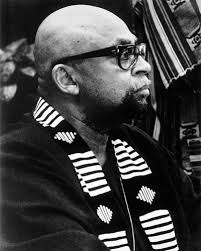 Ronald McKinley Everett was born on July 14, 1941, in Parsonsburg, Maryland. Everett was one of 14 children of a Baptist minister and tenant farmer, who employed his family to work in the fields. At age 18, Everett moved to Los Angeles, California, where he attended Los Angeles Community College and became active in the Civil Rights Movement. After earning his associate’s degree, Everett earned his bachelor’s and master’s degrees in political science at the University of California, Los Angeles. While pursuing his doctorate, he taught African culture classes and changed his name to Maulana (Swahili-Arabic for “master teacher”) Karenga (Swahili for “keeper of tradition”). He rejected the Eurocentric view of America and advocated a Black Nationalist philosophy. After the Watts riots of 1965, Karenga helped establish the Black Congress among residents of Watts district to help restore the community. This action led to the formation of US, a community organization calling for a cultural revolution among blacks. US was instrumental in building independent schools, African-American studies departments and black student unions. Karenga also helped set up black power conferences in several major U.S. cities, providing blacks with a platform for social change. In 1966, Karenga created Kwanzaa, a pan-African holiday based on African agricultural activities that encourage blacks to celebrate their cultural roots. Karenga also urged the establishment of a separate African-American political structure and worked with the major political leaders across the country to help rebuild community relations after the assassination of Dr. Martin Luther King, Jr. in 1968. In the late 1960s, Karenga and US were investigated by the FBI’s COINTELPRO operation and placed on a watch list of dangerous, revolutionary organizations, while simultaneously engaged in a violent conflict with the Black Panther Party for supremacy in the Black community. This led to a 1969 shootout at UCLA, in which two Panthers were killed. By 1971, many Black leaders rejected Karenga’s overbearing manner, philosophy of black separatism and chauvinist attitudes. That same year, he was arrested and convicted of assaulting a female US member and was sent to prison, and led to the fall of US, which disbanded in 1974. After his release from prison, Karenga went back to school and earned two doctorate degrees and began to encourage Blacks to work toward common goals. Karenga exhibited this attitude again after the 1992 riots in Los Angeles when he became a voice of healing and was on the organizing committee and authored the mission statement of the Million Man March in 1995. Karenga has authored numerous scholarly articles and books, including Maat, The Moral Ideal in Ancient Egypt: A Study in Classical African Ethics and the authoritative text Kwanzaa: A Celebration of Family, Community and Culture, and has served as chair of the Department of Black Studies at the University of California at Long Beach.
Ronald McKinley Everett was born on July 14, 1941, in Parsonsburg, Maryland. Everett was one of 14 children of a Baptist minister and tenant farmer, who employed his family to work in the fields. At age 18, Everett moved to Los Angeles, California, where he attended Los Angeles Community College and became active in the Civil Rights Movement. After earning his associate’s degree, Everett earned his bachelor’s and master’s degrees in political science at the University of California, Los Angeles. While pursuing his doctorate, he taught African culture classes and changed his name to Maulana (Swahili-Arabic for “master teacher”) Karenga (Swahili for “keeper of tradition”). He rejected the Eurocentric view of America and advocated a Black Nationalist philosophy. After the Watts riots of 1965, Karenga helped establish the Black Congress among residents of Watts district to help restore the community. This action led to the formation of US, a community organization calling for a cultural revolution among blacks. US was instrumental in building independent schools, African-American studies departments and black student unions. Karenga also helped set up black power conferences in several major U.S. cities, providing blacks with a platform for social change. In 1966, Karenga created Kwanzaa, a pan-African holiday based on African agricultural activities that encourage blacks to celebrate their cultural roots. Karenga also urged the establishment of a separate African-American political structure and worked with the major political leaders across the country to help rebuild community relations after the assassination of Dr. Martin Luther King, Jr. in 1968. In the late 1960s, Karenga and US were investigated by the FBI’s COINTELPRO operation and placed on a watch list of dangerous, revolutionary organizations, while simultaneously engaged in a violent conflict with the Black Panther Party for supremacy in the Black community. This led to a 1969 shootout at UCLA, in which two Panthers were killed. By 1971, many Black leaders rejected Karenga’s overbearing manner, philosophy of black separatism and chauvinist attitudes. That same year, he was arrested and convicted of assaulting a female US member and was sent to prison, and led to the fall of US, which disbanded in 1974. After his release from prison, Karenga went back to school and earned two doctorate degrees and began to encourage Blacks to work toward common goals. Karenga exhibited this attitude again after the 1992 riots in Los Angeles when he became a voice of healing and was on the organizing committee and authored the mission statement of the Million Man March in 1995. Karenga has authored numerous scholarly articles and books, including Maat, The Moral Ideal in Ancient Egypt: A Study in Classical African Ethics and the authoritative text Kwanzaa: A Celebration of Family, Community and Culture, and has served as chair of the Department of Black Studies at the University of California at Long Beach.
This information was derived from the internet @ http://www.biography.com/people/maulana-karenga-21315383
Martin Robison Delany (1822-1885)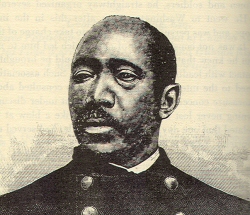
Martin Robison Delany was born in Charles Town, Virginia (now West Virginia) to a slave father and a free mother. Delany’s mother took her children to Pennsylvania in 1822 to avoid their enslavement and persecution for teaching her children to read and write, which was illegal. In 1833 Martin Delany began an apprenticeship with a Pittsburgh physician and soon opened a successful medical practice. By 1843 he began publishing a newspaper in Pittsburgh called The Mystery, and would later work with Frederick Douglass to produce and promote The North Star in Rochester, New York. In 1850 Delany entered Harvard Medical School in 1850 to finish his formal medical education, but was dismissed after three weeks due to petitions from white students. Two years later Delany published The Condition, Elevation, Emigration, and Destiny of the Colored People of the United States noting abolitionists would never accept blacks as equals and advocated for Black people to return to Africa and later led an emigration commission to West Africa in 1859. However, Delaney returned to the United States in 1861 when the Civil War started to recruit thousands of men for the Union Army and later even persuaded President Abraham Lincoln to create an all Black Corps in February 1865. Delaney was commissioned a Major in the 52nd U.S. Colored Troops Regiment, making him the first Black line officer in U.S. Army history. When Reconstruction began Delany was assigned to the Freedman’s Bureau in South Carolina where he would go on to became active in local Republican politics and served briefly as a judge in Charleston. However by 1878 Delany renewed his calls for emigration, and become an official in the Liberian Exodus Joint Stock Steamship Company but would later withdraw two years. His philosophy of racial pride and purity made Delany the “father of black nationalism” and was spelled out in his 1879 book The Principia of Ethnology. Martin R Delany died January 12, 1885 at Wilberforce College in Xenia, Ohio.
This information was derived from the internet @ http://www.blackpast.org/aah/delany-major-martin-robison-1812-1885
Alexander Twilight (1795-1857)
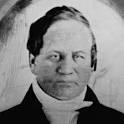 Alexander Lucius Twilight was born September 23, 1795, at Corinth, Vermont. His father Ichabod Twilight was free, of mixed-race, and a Revolutionary War veteran. His mother Mary, also free, was described as white or light-skinned. Twilight worked for a neighboring farmer in Corinth, when he was eight years old. For the next 12 years he read, studied, and learned mathematics while working in various farm labor positions. He enrolled in Randolph’s Orange County Grammar School in 1815 at the age of 20. From 1815 to 1821, he completed all secondary school courses as well as the first two years of a college-level curriculum. He then attended Middlebury College in 1821, where he graduated in 1823. His baccalaureate degree made him the first Black person to receive a degree from an American institution of higher learning. Twilight’s career was in ministry and education. His first job was teaching in Peru, New York where he taught from 1824 through 1828. There, Twilight married Mercy Ladd Merrill in 1826 and became a licensed preacher at Champlain Presbytery of Plattsburgh. In 1828 Twlight moved to Vergennes, Vermont to teach and in 1829 he was hired as principal of the Orleans County, Vermont Grammar School in Brownington, the only secondary school in a two-county area. Twilight also served as a minister of the Congregational Church, building a house for his family shortly after arrival, which still stands. Wanting to ensure a place for students from out of town, from 1834-1836 Twilight designed, raised funds for, and had built a massive four-story granite building, which he called Athenian Hall. The first granite public building in Vermont, it served as a dormitory for the co-educational school, also known as the Brownington Academy. In 1836, Twilight was elected to the Vermont General Assembly, becoming the first Black to be elected to a state legislature. After his death on June 19, 1857, Twilight was buried in the churchyard in Brownington. Alexander Twilight’s House still stands across the street from the hall, and serves as headquarters for the Orleans County Historical Society and is within the Historic District is listed on the National Register of Historic Places (NRHP) and Athenian Hall is now operated by the Orleans County Historical Society as the Old Stone House Museum, and anchors the Historic District of Brownington.
Alexander Lucius Twilight was born September 23, 1795, at Corinth, Vermont. His father Ichabod Twilight was free, of mixed-race, and a Revolutionary War veteran. His mother Mary, also free, was described as white or light-skinned. Twilight worked for a neighboring farmer in Corinth, when he was eight years old. For the next 12 years he read, studied, and learned mathematics while working in various farm labor positions. He enrolled in Randolph’s Orange County Grammar School in 1815 at the age of 20. From 1815 to 1821, he completed all secondary school courses as well as the first two years of a college-level curriculum. He then attended Middlebury College in 1821, where he graduated in 1823. His baccalaureate degree made him the first Black person to receive a degree from an American institution of higher learning. Twilight’s career was in ministry and education. His first job was teaching in Peru, New York where he taught from 1824 through 1828. There, Twilight married Mercy Ladd Merrill in 1826 and became a licensed preacher at Champlain Presbytery of Plattsburgh. In 1828 Twlight moved to Vergennes, Vermont to teach and in 1829 he was hired as principal of the Orleans County, Vermont Grammar School in Brownington, the only secondary school in a two-county area. Twilight also served as a minister of the Congregational Church, building a house for his family shortly after arrival, which still stands. Wanting to ensure a place for students from out of town, from 1834-1836 Twilight designed, raised funds for, and had built a massive four-story granite building, which he called Athenian Hall. The first granite public building in Vermont, it served as a dormitory for the co-educational school, also known as the Brownington Academy. In 1836, Twilight was elected to the Vermont General Assembly, becoming the first Black to be elected to a state legislature. After his death on June 19, 1857, Twilight was buried in the churchyard in Brownington. Alexander Twilight’s House still stands across the street from the hall, and serves as headquarters for the Orleans County Historical Society and is within the Historic District is listed on the National Register of Historic Places (NRHP) and Athenian Hall is now operated by the Orleans County Historical Society as the Old Stone House Museum, and anchors the Historic District of Brownington.
This information was derived from the internet @ http://en.wikipedia.org/wiki/Alexander_Twilight
Marie Maynard Daly (1921-2003)
 Marie Maynard Daly was born and raised in Corona, Queens. When Marie was young she found her love for science through books that she would read at in her grandparents house in D.C. Marie’s grandparents had an extensive library and books like The Microbe Hunters by Paul de Kruif’s influenced her to become a scientist. After Daly graduated from all-girls Hunter College High School, she enrolled in Queens College, in Flushing, New York majoring in chemistry and earning the honor of magna cum laude with her bachelor’s degree in chemistry in 1942. Daly remained at Queens College for another year, working as a laboratory assistant while attending graduate school at New York University. She completed her masters in Chemistry in 1 year and enrolled in the doctoral program at Columbia University, where she worked under Dr. Mary L. Caldwell and completed her Ph.D. in chemistry in 1947 making her the first Black woman in the United States to earn a Ph.D. in chemistry. Daly served two years as a physical science instructor at Howard University. After being awarded an American Cancer Society grant to support her postdoctoral research, she joined Dr. A. E. Mirsky at the Rockefeller Institute, where they studied the cell nucleus. By 1960 Daly had moved on to Yeshiva University at the Albert Einstein College of Medicine in New York City. At Yeshiva, Marie would continue her research and teach biochemistry courses. She enjoyed teaching medical students and was dedicated to increasing the number of minority students enrolled in medical schools. As the years progress Marie would go on to get married to Vincent Clark in 1961, serve as an investigator for the American Heart Association, and become a member of the prestigious Board of Governors of the New York Academy of Sciences. Daly retired from the Einstein College of Medicine in 1986, and would go on to start a Queens College scholarship fund in her father’s honor to assist minority students majoring in chemistry or physics. She would die in 2003.
Marie Maynard Daly was born and raised in Corona, Queens. When Marie was young she found her love for science through books that she would read at in her grandparents house in D.C. Marie’s grandparents had an extensive library and books like The Microbe Hunters by Paul de Kruif’s influenced her to become a scientist. After Daly graduated from all-girls Hunter College High School, she enrolled in Queens College, in Flushing, New York majoring in chemistry and earning the honor of magna cum laude with her bachelor’s degree in chemistry in 1942. Daly remained at Queens College for another year, working as a laboratory assistant while attending graduate school at New York University. She completed her masters in Chemistry in 1 year and enrolled in the doctoral program at Columbia University, where she worked under Dr. Mary L. Caldwell and completed her Ph.D. in chemistry in 1947 making her the first Black woman in the United States to earn a Ph.D. in chemistry. Daly served two years as a physical science instructor at Howard University. After being awarded an American Cancer Society grant to support her postdoctoral research, she joined Dr. A. E. Mirsky at the Rockefeller Institute, where they studied the cell nucleus. By 1960 Daly had moved on to Yeshiva University at the Albert Einstein College of Medicine in New York City. At Yeshiva, Marie would continue her research and teach biochemistry courses. She enjoyed teaching medical students and was dedicated to increasing the number of minority students enrolled in medical schools. As the years progress Marie would go on to get married to Vincent Clark in 1961, serve as an investigator for the American Heart Association, and become a member of the prestigious Board of Governors of the New York Academy of Sciences. Daly retired from the Einstein College of Medicine in 1986, and would go on to start a Queens College scholarship fund in her father’s honor to assist minority students majoring in chemistry or physics. She would die in 2003.
This information was derived from the internet @ http://en.wikipedia.org/wiki/Marie_Maynard_Daly
Samuel Sharpe (1801-1832)
Samuel Sharpe was born in the parish of St James. Although he was a slave most of his life, he was well-educated. Due to his education, Sharpe was able to become a well-known preacher and leader giving him respect among the slaves. Sharpe was a deacon at the Burchell Baptist Church in Montego Bay and spent most of his time traveling to different parishes in Jamaica, educating the slaves about Christianity and freedom. Sharpe organized a peaceful general strike across many estates in western Jamaica to protest working conditions. On Christmas day of 1831 lead by Sharpe, the slaves would refuse to work unless, their grievances concerning better treatment and the consideration of freedom, were accepted by the state owners and managers. Sharpe explained his plan to his chosen supporters after his religious meetings and made them kiss the Bible to show their loyalty. They, in turn took the plan to the other parishes until the idea had spread. Word of the plan reached the ears of some of the planters. Troops were sent into St. James and warships were anchored in Montego Bay and Black River, with their guns trained on the towns. By December 27, the Kensington Estate Great House was set on fire, as a signal that the Slave Rebellion had begun. A series of other fires broke out in the area. Sharpe’s originally peaceful protest turned into Jamaica’s largest slave rebellion. Hundreds of slaves and 14 whites died in the violence. The colonial government used the armed Jamaican military forces to put down the rebellion, suppressing it within two weeks. The government tried, convicted, and hanged many of the ringleaders, including Sharpe, in 1832. Just before he was hanged for his role in the rebellion, Sharpe said: “I would rather die among yonder gallows, than live in slavery.” He was 31 years old. The rebellion provoked two detailed Parliamentary Inquiries, which arguably contributed to the 1833 Abolition of Slavery across the British Empire. In 1975, the government of independent Jamaica proclaimed Sharpe a National Hero with the posthumous title of Rt. Excellent Samuel Sharpe and his image is used on the modern Jamaican $50 bill.
This information was derived from the internet @ http://jis.gov.jm/heroes/samuel-sharpe/ & http://en.wikipedia.org/wiki/Samuel_Sharpe
John Albert Burr (1848-1926)
John Burr was born in Maryland in 1848 the son of freed slaves. Burr would work as a field hand until he was about 17 and at 18 he managed, with the patronage of wealthy African American activists, to attend engineering classes at a nearby private university in Maryland. Burr excelled in his studies and was one of the brightest students in his class. Burr made a comfortable living as a machinist servicing farm equipment, being a repairman, and a capable steelworker. He moved to Chicago in the 1870s and continued to work in repair and maintenance. On May 9, 1899, Burr patented an improved rotary blade lawn mower designing a lawn mower with traction wheels and a rotary blade that would not get clogged easily from lawn clippings. Burr also improved the design of lawn mowers by making it possible to mow closer to building and wall edges. Burr’s rotary innovation would pave the way for much safer and easier labor. Over time, Burr would continue to improve on his original design and invent several devices for sifting and dispersing mulch. Most of Burr’s inventions centered on easing the burden of farm workers and laborers, revolutionizing lawn care. John Albert Burr would die of influenza in 1926 in comfortable obscurity, holding over 30 U.S. patents and becoming a quiet activist for the poor and downtrodden.
This information was derived from the internet @ http://inventors.about.com/library/inventors/bl_John_Albert_Burr.htm and http://invent.answers.com/famous-inventors/john-burr-inventor-of-the-lawnmower
Mwende Window Synder (1976 – )
 Mwende Window Snyder is the daughter of an American father and a Kenyan-born mother, Wayua Muasa. Synder was Director of Security Architecture at @stake and was a senior security strategist at Microsoft in the Security Engineering and Communications organization (most notably as security lead and sign off on Microsoft Windows XP Service Pack 2 and Windows Server 2003). In 2004, Synder co-authored the 2004 online security guide Threat Modeling, which has become an industry standard, and is considered a game changer in her field. That same year, she co-founded a security company that was sold to Symantec for $49 million. After leaving Microsoft in 2005, Snyder worked as a principal, founder, and CTO at Matasano Security. By September of 2006, Synder had joined Mozilla but would only stay through December 2008. On 1 March 2010, Snyder began work at Apple Inc. where she became the security and privacy product manager. Snyder has led Apple’s team when the company made its first official appearance at the vaunted Black Hat security conference in Las Vegas in 2012. In the ever-changing, always-on world of cyberactivity, Snyder is charged with keeping Apple’s products and customers away from cyber-harm. One of the best methods is to think like a hacker, and Snyder made her mark doing just that.
Mwende Window Snyder is the daughter of an American father and a Kenyan-born mother, Wayua Muasa. Synder was Director of Security Architecture at @stake and was a senior security strategist at Microsoft in the Security Engineering and Communications organization (most notably as security lead and sign off on Microsoft Windows XP Service Pack 2 and Windows Server 2003). In 2004, Synder co-authored the 2004 online security guide Threat Modeling, which has become an industry standard, and is considered a game changer in her field. That same year, she co-founded a security company that was sold to Symantec for $49 million. After leaving Microsoft in 2005, Snyder worked as a principal, founder, and CTO at Matasano Security. By September of 2006, Synder had joined Mozilla but would only stay through December 2008. On 1 March 2010, Snyder began work at Apple Inc. where she became the security and privacy product manager. Snyder has led Apple’s team when the company made its first official appearance at the vaunted Black Hat security conference in Las Vegas in 2012. In the ever-changing, always-on world of cyberactivity, Snyder is charged with keeping Apple’s products and customers away from cyber-harm. One of the best methods is to think like a hacker, and Snyder made her mark doing just that.
This information was derived from the internet @ http://en.wikipedia.org/wiki/Window_Snyder and http://www.theroot.com/articles/lists/2012/10/theroot_100/window_snyder.html
Nanny of The Maroons (1685 – 1733 [?])
 Nanny was born in Ghana and belonged to the Ashanti tribe and was later brought to Jamaica as a slave, due to her family members being involved in intertribal conflict and her village being captured. As a child, Nanny was influenced by other slave leaders and maroons. This influenced both Nanny and her brothers, Accompong, Cudjoe, Johnny, and Quao to run away from their plantation and hide in the Blue Mountains area of northern Saint Thomas Parish. While in hiding, they split up to organize more Maroon communities across Jamaica. Nanny and Quao founded communities in Portland Parish where she would marry a Maroon named Adou. The strategic location of Nanny Town was a major reason that all of its inhabitants were able to fight off the British. Nanny Town was on a 900 ft ridge and only had one entrance/exit to the town. This design by Nanny allowed them to fight off the British soldiers even though they were severely outnumbered. The Maroons at Nanny Town also organized look-outs for an attack as well as designated warriors who could be summoned by the sound of a horn called an Abeng. Maroons were skilled at disguising themselves as bushes and trees and utilized decoys to trick the British into a surprise attacks. By 1720, Nanny and Quao had settled and controlled an area in the Blue Mountains, which consisted of the 500 acres of land granted to the runaway slaves. For over 30 years, Nanny freed more than 800 slaves, and helped them to resettle in the Maroon community. Nanny also was regarded for her knowledge of herbs and other traditional healing methods making her not only a military leader, but also a physical and spiritual healer to her community. Between 1728 and 1734, Nanny Town and other Maroon settlements were frequently attacked by British forces and held them off during what is known as The First Maroon War. However, in March of 1733, she was believed to have been killed by Black Shots, who were slaves used by the British to snuff out revolts. Even with newspaper reporting’s of Nanny’s death, the exact date of her death remains a mystery, in part because the term “Nanny” is an honorific title and many high-ranking women were called that in Maroon Town. After Nanny’s “death,” many Maroons of Nanny Town travelled across the island to unite with the Leeward Maroons. By 1739, the British governor in Jamaica signed a treaty with the Maroons, promising them 2500 acres in two locations. They were to remain in their five main towns Accompong, Trelawny Town, Mountain Top, Scots Hall, Nanny Town, living under their own chief with a British supervisor. In exchange, they agreed not to harbour new runaway slaves and fight for the British in the case of an attack from the French or Spanish. Nanny is known as one of the earliest leaders of slave resistance in the Americas, and one of very few women. The government of Jamaica declared Queen Nanny a National Heroine in 1976 and her portrait graces the $500 Jamaican dollar bill, which is colloquially referred to as a “Nanny”.
Nanny was born in Ghana and belonged to the Ashanti tribe and was later brought to Jamaica as a slave, due to her family members being involved in intertribal conflict and her village being captured. As a child, Nanny was influenced by other slave leaders and maroons. This influenced both Nanny and her brothers, Accompong, Cudjoe, Johnny, and Quao to run away from their plantation and hide in the Blue Mountains area of northern Saint Thomas Parish. While in hiding, they split up to organize more Maroon communities across Jamaica. Nanny and Quao founded communities in Portland Parish where she would marry a Maroon named Adou. The strategic location of Nanny Town was a major reason that all of its inhabitants were able to fight off the British. Nanny Town was on a 900 ft ridge and only had one entrance/exit to the town. This design by Nanny allowed them to fight off the British soldiers even though they were severely outnumbered. The Maroons at Nanny Town also organized look-outs for an attack as well as designated warriors who could be summoned by the sound of a horn called an Abeng. Maroons were skilled at disguising themselves as bushes and trees and utilized decoys to trick the British into a surprise attacks. By 1720, Nanny and Quao had settled and controlled an area in the Blue Mountains, which consisted of the 500 acres of land granted to the runaway slaves. For over 30 years, Nanny freed more than 800 slaves, and helped them to resettle in the Maroon community. Nanny also was regarded for her knowledge of herbs and other traditional healing methods making her not only a military leader, but also a physical and spiritual healer to her community. Between 1728 and 1734, Nanny Town and other Maroon settlements were frequently attacked by British forces and held them off during what is known as The First Maroon War. However, in March of 1733, she was believed to have been killed by Black Shots, who were slaves used by the British to snuff out revolts. Even with newspaper reporting’s of Nanny’s death, the exact date of her death remains a mystery, in part because the term “Nanny” is an honorific title and many high-ranking women were called that in Maroon Town. After Nanny’s “death,” many Maroons of Nanny Town travelled across the island to unite with the Leeward Maroons. By 1739, the British governor in Jamaica signed a treaty with the Maroons, promising them 2500 acres in two locations. They were to remain in their five main towns Accompong, Trelawny Town, Mountain Top, Scots Hall, Nanny Town, living under their own chief with a British supervisor. In exchange, they agreed not to harbour new runaway slaves and fight for the British in the case of an attack from the French or Spanish. Nanny is known as one of the earliest leaders of slave resistance in the Americas, and one of very few women. The government of Jamaica declared Queen Nanny a National Heroine in 1976 and her portrait graces the $500 Jamaican dollar bill, which is colloquially referred to as a “Nanny”.
This information was derived from the internet @ http://en.wikipedia.org/wiki/Nanny_of_the_Maroons
Richard Allen (1760 – 1831)
 Richard Allen was born into slavery in Philadelphia, Pennsylvania, on February 14, 1760. Known as “Negro Richard,” he and his family were sold to a Delaware farmer, Stokeley Sturgis, in 1767. Allen converted to Methodism at the age of 17, after hearing a white itinerant Methodist preacher rail against slavery. His owner, who had already sold Richard’s mother and three siblings, also converted and eventually allowed Richard and his brother to purchase their freedom for $2,000 each. After attaining his freedom, Richard took the last name “Allen” and returned to Philadelphia. There, he worked at odd jobs, as a shoemaker and as manager of a chimney-sweeping company. Allen soon joined St. George’s Methodist Episcopal Church, where blacks and whites worshiped together. There, he became an assistant minister and conducted prayer meetings for blacks. Frustrated with the limitations the church placed on him and black parishioners, in 1787 Allen left the church with the intention of creating an independent Methodist church. That same year, along with the Reverend Absalom Jones, Allen helped found the Free African Society, a non-denominational religious mutual-aid society dedicated to helping the black community. A century later, NAACP founder W.E.B. Du Bois called the FAS “the first wavering step of a people toward organized social life.” In 1794, Allen and 10 other black Methodists founded the Bethel Church, a black Episcopal meeting, in an old blacksmith’s shop. Bethel Church became known as “Mother Bethel” because it birthed the African Methodist Episcopal Church (1816). Helped by his wife, Sarah, Allen helped to hide escaped slaves. The basement of the Bethel Church was a stop on the “Underground Railroad” for blacks fleeing slavery. In 1799, Allen became the first African American to be ordained in the ministry of the Methodist Episcopal Church. Then, in 1816, with support from representatives from other black Methodist churches, Allen founded the first national black church in the United States, the African Methodist Episcopal Church, and became its first bishop. Today, the AME Church boasts more than 2.5 million members. Understanding the power of an economic boycott, Allen went on to form the Free Produce Society, where members would only purchase products from non-slave labor, in 1830. With a vision of equal treatment for all, he railed against slavery, influencing civil rights leaders such as Frederick Douglass and Martin Luther King Jr.
Richard Allen was born into slavery in Philadelphia, Pennsylvania, on February 14, 1760. Known as “Negro Richard,” he and his family were sold to a Delaware farmer, Stokeley Sturgis, in 1767. Allen converted to Methodism at the age of 17, after hearing a white itinerant Methodist preacher rail against slavery. His owner, who had already sold Richard’s mother and three siblings, also converted and eventually allowed Richard and his brother to purchase their freedom for $2,000 each. After attaining his freedom, Richard took the last name “Allen” and returned to Philadelphia. There, he worked at odd jobs, as a shoemaker and as manager of a chimney-sweeping company. Allen soon joined St. George’s Methodist Episcopal Church, where blacks and whites worshiped together. There, he became an assistant minister and conducted prayer meetings for blacks. Frustrated with the limitations the church placed on him and black parishioners, in 1787 Allen left the church with the intention of creating an independent Methodist church. That same year, along with the Reverend Absalom Jones, Allen helped found the Free African Society, a non-denominational religious mutual-aid society dedicated to helping the black community. A century later, NAACP founder W.E.B. Du Bois called the FAS “the first wavering step of a people toward organized social life.” In 1794, Allen and 10 other black Methodists founded the Bethel Church, a black Episcopal meeting, in an old blacksmith’s shop. Bethel Church became known as “Mother Bethel” because it birthed the African Methodist Episcopal Church (1816). Helped by his wife, Sarah, Allen helped to hide escaped slaves. The basement of the Bethel Church was a stop on the “Underground Railroad” for blacks fleeing slavery. In 1799, Allen became the first African American to be ordained in the ministry of the Methodist Episcopal Church. Then, in 1816, with support from representatives from other black Methodist churches, Allen founded the first national black church in the United States, the African Methodist Episcopal Church, and became its first bishop. Today, the AME Church boasts more than 2.5 million members. Understanding the power of an economic boycott, Allen went on to form the Free Produce Society, where members would only purchase products from non-slave labor, in 1830. With a vision of equal treatment for all, he railed against slavery, influencing civil rights leaders such as Frederick Douglass and Martin Luther King Jr.
This information was derived from the internet @ http://www.biography.com/people/richard-allen-21056735
Claudia Jones (Cumberbatch) (1915 – 1964)
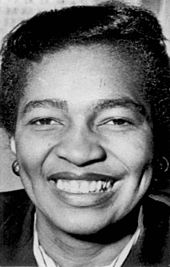 Claudia Vera Cumberbatch was born in Belmont, Port of Spain, Trinidad, on 15 February 1915. When she was nine years old, her family emigrated to New York City. Her mother died five years later, and her father eventually found work to support the family. In 1932, due to poor living conditions, she was struck with tuberculosis, a condition that irreparably damaged her lungs and plagued her for the rest of her life. She graduated from high school and was academically bright, but broke with few valid job options so Jones began working in a laundry and other retail work in Harlem. In 1936, trying to find organizations supporting the Scottsboro Boys, she joined the American Communist Party (ACP). By 1937 she joined the editorial staff of the Daily Worker, rising by 1938 to become editor of the Weekly Review. After the Young Communist League became American Youth for Democracy during World War II, Jones became editor of its monthly journal, Spotlight. After the war, Jones became executive secretary of the Women’s National Commission, secretary for the Women’s Commission of the Communist Party USA (CPUSA), and in 1952 took the same position at the National Peace Council. In 1953, she took over the editorship of Negro Affairs. An elected member of the National Committee of the Communist Party USA (CPUSA), she also organized and spoke at events. As a result of her membership of CPUSA and various associated activities, in Jones was arrested and sentenced to the first of four spells in prison in 1948. Following a hearing by the Immigration and Naturalization Service, she was found in violation of the McCarran Act for being an alien (non-US citizen) who had joined the Communist Party and was ordered to be deported on 21 December 1950. In 1951, she was tried and convicted of “un-American activities” under the Smith Act, specifically activities against the United States government. The Supreme Court refused to hear her appeal and by 1955, Jones began her sentence of a year and a day at the Federal Reformatory for Women at Alderson, West Virginia. She was released on 23 October 1955. She was refused entry to Trinidad and Tobago, but was eventually offered residency in the United Kingdom on humanitarian grounds. Jones arrived in London two weeks later only to find that many British communists were hostile to a black woman and England was just as oppressive to “minorities” as the United States at that time. She began to get involved in the British African-Caribbean community to organize both access to basic facilities, as well as the early movement for equal rights. Supported by her friends Jones campaigned against racism in housing, education, and employment. She addressed peace rallies and the Trade Union Congress, visited Japan, Russia, and China, meeting with Mao Zedong. Jones helped organize campaigns against the 1876 Immigration Act, which would make it harder for non-Whites to migrate to Britain. She also campaigned for the release of Nelson Mandela, and spoke out against racism in the workplace. In 1958 she founded and thereafter edited the anti-imperialist, anti-racist paper, The West Indian Gazette and Afro-Asian Caribbean News (WIG). The paper became a key contributor to the rise of consciousness within the Black British community. Jones’s most well-known lasting contribution in the UK is considered to be the Notting Hill Carnival which came as a response to race riots in Notting Hill. Funds raised from the event were used to pay the court fees and fines of convicted young black men. Jones died on Christmas Eve 1964, aged 49, found on Christmas Day at her flat. A post-mortem declared that she had died of a massive heart attack, due to heart disease and tuberculosis. Her funeral on 9 January 1965 was a large and political ceremony, with her burial plot selected to be that located to the left of her hero, Karl Marx, in Highgate Cemetery, North London. Always strapped for cash, WIG folded eight months and four editions after Jones’s death in December 1964.
Claudia Vera Cumberbatch was born in Belmont, Port of Spain, Trinidad, on 15 February 1915. When she was nine years old, her family emigrated to New York City. Her mother died five years later, and her father eventually found work to support the family. In 1932, due to poor living conditions, she was struck with tuberculosis, a condition that irreparably damaged her lungs and plagued her for the rest of her life. She graduated from high school and was academically bright, but broke with few valid job options so Jones began working in a laundry and other retail work in Harlem. In 1936, trying to find organizations supporting the Scottsboro Boys, she joined the American Communist Party (ACP). By 1937 she joined the editorial staff of the Daily Worker, rising by 1938 to become editor of the Weekly Review. After the Young Communist League became American Youth for Democracy during World War II, Jones became editor of its monthly journal, Spotlight. After the war, Jones became executive secretary of the Women’s National Commission, secretary for the Women’s Commission of the Communist Party USA (CPUSA), and in 1952 took the same position at the National Peace Council. In 1953, she took over the editorship of Negro Affairs. An elected member of the National Committee of the Communist Party USA (CPUSA), she also organized and spoke at events. As a result of her membership of CPUSA and various associated activities, in Jones was arrested and sentenced to the first of four spells in prison in 1948. Following a hearing by the Immigration and Naturalization Service, she was found in violation of the McCarran Act for being an alien (non-US citizen) who had joined the Communist Party and was ordered to be deported on 21 December 1950. In 1951, she was tried and convicted of “un-American activities” under the Smith Act, specifically activities against the United States government. The Supreme Court refused to hear her appeal and by 1955, Jones began her sentence of a year and a day at the Federal Reformatory for Women at Alderson, West Virginia. She was released on 23 October 1955. She was refused entry to Trinidad and Tobago, but was eventually offered residency in the United Kingdom on humanitarian grounds. Jones arrived in London two weeks later only to find that many British communists were hostile to a black woman and England was just as oppressive to “minorities” as the United States at that time. She began to get involved in the British African-Caribbean community to organize both access to basic facilities, as well as the early movement for equal rights. Supported by her friends Jones campaigned against racism in housing, education, and employment. She addressed peace rallies and the Trade Union Congress, visited Japan, Russia, and China, meeting with Mao Zedong. Jones helped organize campaigns against the 1876 Immigration Act, which would make it harder for non-Whites to migrate to Britain. She also campaigned for the release of Nelson Mandela, and spoke out against racism in the workplace. In 1958 she founded and thereafter edited the anti-imperialist, anti-racist paper, The West Indian Gazette and Afro-Asian Caribbean News (WIG). The paper became a key contributor to the rise of consciousness within the Black British community. Jones’s most well-known lasting contribution in the UK is considered to be the Notting Hill Carnival which came as a response to race riots in Notting Hill. Funds raised from the event were used to pay the court fees and fines of convicted young black men. Jones died on Christmas Eve 1964, aged 49, found on Christmas Day at her flat. A post-mortem declared that she had died of a massive heart attack, due to heart disease and tuberculosis. Her funeral on 9 January 1965 was a large and political ceremony, with her burial plot selected to be that located to the left of her hero, Karl Marx, in Highgate Cemetery, North London. Always strapped for cash, WIG folded eight months and four editions after Jones’s death in December 1964.
This information was derived from the internet @ http://en.wikipedia.org/wiki/Claudia_Jones
Daniel Hale Williams (1856–1931)
Daniel Hale Williams was born in the city of Hollidaysburg, Pennsylvania and lived with his family, (father “free negro” barber, mother who was Scot-Irish, and his brother and five sisters). His family eventually moved to Annapolis, Maryland where his father would later die of tuberculosis. Williams’ mother could not manage the entire family and sent some of the children to live with relatives. Williams stayed in Maryland but eventually rejoined his mother who moved to Illinois. He later moved to Wisconsin with one of his sisters and opened a barbershop. While in Wisconsin, Williams became fascinated with a local physician and decided to follow his path. He began working as an apprentice to Dr. Henry W. Palmer for two years and in 1880 entered Chicago Medical College, now known as Northwestern University Medical School, graduating in 1883. However, black doctors were not allowed to work in Chicago hospitals. As a result, in 1891, Williams started the Provident Hospital and training school for nurses in Chicago, Illinois; the first non-segregated hospital in the United States. This was established mostly for African-American citizens. In 1893 Williams became the second to have successfully performed pericardium surgery to repair a wound (Henry Dalton was the first). He performed this surgery, without the benefit of penicillin or blood transfusion on 10 July 1893, though it would not be reported until 1897. In 1893, during the administration of President Grover Cleveland, Williams was appointed surgeon-in-chief of Freedman’s Hospital in Washington, D.C., a post he held until 1898 when he married Alice Johnson and moved back to Chicago. Williams would later become a teacher of Clinical Surgery at Meharry Medical College in Nashville, Tennessee and an attending surgeon at Cook County Hospital in Chicago. He worked to create more hospitals and for accessibility to African Americans. In 1895 he co-founded the National Medical Association for African American doctors, and in 1913 he became a charter member and the only African American doctor in the American College of Surgeons. Williams would die of a stroke in Idlewild, Michigan on August 4, 1931 seven years after his wife. In 2002, scholar Molefi Kete Asante listed Daniel Hale Williams on his list of 100 Greatest African Americans. He also received honorary degrees from Howard and Wilberforce Universities.
This information was derived from the internet @ http://en.wikipedia.org/wiki/Daniel_Hale_Williams
Dorothy Irene Height (1912–2010)
Dorothy Height was born in Richmond, Virginia in 1912. During childhood, she moved with her family to Rankin, Pennsylvania where she graduated from Rankin High School in 1929 when she was admitted to Barnard College. However, she was denied entry because of the school’s unwritten policy of admitting only two black students per year. Height instead elected to enrolled at New York University, earning an undergraduate degree in 1932 and a master’s degree in educational psychology in 1933. She pursued further postgraduate work at Columbia University and the New York School of Social Work (the predecessor of the Columbia University School of Social Work). Height started working as a caseworker with the New York City Welfare Department, and at the age of 25, began a career as a civil rights activist, joining the National Council of Negro Women. In 1957, Height was named president of the National Council of Negro Women, a position she held until 1997. During the civil rights movement, she organized “Wednesdays in Mississippi,”(brought together black and white women from the North and South to create a dialogue of understanding) and a founding member of the Council for United Civil Rights Leadership. Even American leaders regularly took her counsel, including First Lady Eleanor Roosevelt, President Dwight D. Eisenhower, and President Lyndon B. Johnson. Height served on a number of committees, including as a consultant on African affairs to the Secretary of State, the President’s Committee on the Employment of the Handicapped, and the President’s Committee on the Status of Women. In 1974, she was named to the National Commission for the Protection of Human Subjects of Biomedical and Behavioral Research, which published the Belmont Report[10] a response to the infamous “Tuskegee Syphilis Study” and an international ethical touchstone for researchers to this day. Height continued to work for the rights of women and blacks well into the later stages of her life. In 1990, Height, formed the African-American Women for Reproductive Freedom and was the chairperson of the Executive Committee of the Leadership Conference on Civil Rights, the largest civil rights organization in the USA. On March 25, 2010, Height was admitted to Howard University Hospital in Washington D.C. for unspecified reasons. She died three weeks later, on April 20, 2010, at the age of 98. Her funeral service at the Washington National Cathedral on April 29, 2010 was attended by President Barack Obama and First Lady Michelle Obama, as well as many other dignitaries and notable people. She was later interred at Fort Lincoln Cemetery in Colmar Manor, Maryland. Here are just five of the many awards she received during her lifetime:
- Presidential Citizens Medal (1989)
- Presidential Medal of Freedom (1994)
- National Jefferson Award for Greatest Public Service Benefiting the Disadvantaged (2001)
- Listed on Molefi Kete Asante’s list of 100 Greatest African Americans (2002)
- Congressional Gold Medal by President George W. Bush on behalf of the United States Congress (Approved 2003, awarded 2004)
This information was derived from the internet @ http://en.wikipedia.org/wiki/Dorothy_Height
Edward Alexander Bouchet (1852–1918)
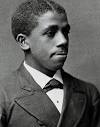 Edward Alexander Bouchet was born in New Haven, Connecticut, in 1852. Edward Alexander Bouchet’s father, William, was a former slave that worked his way into becoming a porter at Yale University. The youngest of four children, Bouchet attended New Haven High School from 1866 to 1868 and continued his education at the Hopkins Grammar School, where he studied mathematics and history in addition to learning Latin and Greek. Bouchet graduated valedictorian of his class from Hopkins in 1870. That fall, Bouchet entered Yale College (later renamed Yale University) in pursuit of a bachelor’s degree and attained it, graduating from Yale in 1874. Bouchet continued his education at Yale for two more years and completed his Ph.D. in physics in 1876, making him one among the few people to have a Ph.D. in physics and the first African American to earn a doctorate degree in the United States. In spite of his accomplishments, Bouchet could not find work as a college professor due to discrimination. Instead of giving up Bouchet worked at the School for Colored Youth in Philadelphia; one of the few institutions that offered African Americans a rigorous academic program. For the next 25 years Bouchet taught chemistry and physics at the school. From 1902 until his retirement in 1913, Bouchet held a variety of high school jobs including serving as a principal. Bouchet returned to his hometown of New Haven where he would die in 1918. Since Bouchet’s death, Yale University installed a tombstone to remember him in 1998, and the school’s Graduate School of Arts and Sciences established the Edward Alexander Bouchet Graduate Honor Society in his name. Yale also gives out the Bouchet Leadership Award to academics who help advance diversity in higher education.
Edward Alexander Bouchet was born in New Haven, Connecticut, in 1852. Edward Alexander Bouchet’s father, William, was a former slave that worked his way into becoming a porter at Yale University. The youngest of four children, Bouchet attended New Haven High School from 1866 to 1868 and continued his education at the Hopkins Grammar School, where he studied mathematics and history in addition to learning Latin and Greek. Bouchet graduated valedictorian of his class from Hopkins in 1870. That fall, Bouchet entered Yale College (later renamed Yale University) in pursuit of a bachelor’s degree and attained it, graduating from Yale in 1874. Bouchet continued his education at Yale for two more years and completed his Ph.D. in physics in 1876, making him one among the few people to have a Ph.D. in physics and the first African American to earn a doctorate degree in the United States. In spite of his accomplishments, Bouchet could not find work as a college professor due to discrimination. Instead of giving up Bouchet worked at the School for Colored Youth in Philadelphia; one of the few institutions that offered African Americans a rigorous academic program. For the next 25 years Bouchet taught chemistry and physics at the school. From 1902 until his retirement in 1913, Bouchet held a variety of high school jobs including serving as a principal. Bouchet returned to his hometown of New Haven where he would die in 1918. Since Bouchet’s death, Yale University installed a tombstone to remember him in 1998, and the school’s Graduate School of Arts and Sciences established the Edward Alexander Bouchet Graduate Honor Society in his name. Yale also gives out the Bouchet Leadership Award to academics who help advance diversity in higher education.
This information was derived from the internet @ http://www.biography.com/people/edward-alexander-bouchet-21317497#synopsis
Mary Eliza Mahoney (1845-1926)
Mary Mahoney was born on May 7, 1845 (some sources say April 16), in Boston, Massachusetts. She was admitted to the nursing school of the New England Hospital for Women and Children,(now the Dimock Community Health Center). For fourteen years Mahoney work as a private nurse to children and the elderly until being accepted into its nursing school in 1878. In 1879 Mahoney became the first black woman to complete nurse’s training. Subsequently, she became one of the first black members of the Nurses Associated Alumnae of the United States and Canada (later renamed the American Nurses Association), as well as the cofounder of the newly founded National Association of Colored Graduate Nurses. From 1911 to 1912 she served as director of the Howard Orphan Asylum for black children in Kings Park, Long Island, New York later returning back to Massachusetts. In addition to her pioneering efforts in nursing, Mahoney was also a strong supporter of women’s equality and the women’s suffrage movement. In 1920, she was among the first women in Boston to register to vote following the ratification of the 19th Amendment, granting women’s right to vote on August 26, 1920. Mary Eliza Mahoney died in Boston on January 4, 1926, at the age of 80. Mahoney was inducted into the Nursing Hall of Fame in 1976 and received induction into the National Women’s Hall of Fame in 1993.
This information was derived from the internet @ http://www.biography.com/people/mary-mahoney-41021#synopsis and http://en.wikipedia.org/wiki/Mary_Eliza_Mahoney
Fred Shuttleworth(1922-2011)
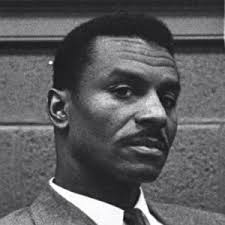 Fred Shuttleworth was born Frederick Lee Robinson in Mount Megis, Alabama on March 18, 1922. His family moved to Birmingham when he was a toddler, and his mother, Alberta, married William Shuttlesworth, whose name he took as his own. He would later go on to graduate as valedictorian from his high school, and would work assorted jobs before studying at the ministerial institution at Selma University and earning his B.A. in 1951 and later earning his B.S. from Alabama State College. Shuttlesworth became pastor of Birmingham’s Bethel Baptist Church in 1953. After the Brown v. Board of Education ruling, he was further inspired to actively participate in the growing Civil Rights Movement calling for the hiring of African-American police officers and establishing the Alabama Christian Movement for Human Rights in 1956. He also co-founded the Southern Christian Leadership Conference (SCLC) with other leaders, including Martin Luther King Jr. and Bayard Rustin. Shuttlesworth, with King and fellow minister Ralph D. Abernathy, would later be seen as one of the movement’s “Big Three. After the desegregation of Montgomery busses due to the citywide boycott inspired by Rosa Parks, Shuttlesworth was organizing efforts in his city to implement bus desegregation as well when his residence was bombed on Christmas, with the pastor inside. He nonetheless steadfastly proceeded with plans; later, when he and his wife took their daughter to integrate a white school, the couple were brutally attacked by a Ku Klux Klan mob. Shuttlesworth was combative, headstrong and sometimes blunt-spoken to the point that he frequently antagonized his colleagues. He alienated some members of his congregation by devoting as much time as he did to the civil rights movement, at the expense of ordinary church functions. By 1961 Shuttlesworth moved to Cincinnati, Ohio, to take up the pastorage of the Revelation Baptist Church where he remained intensely involved in the Birmingham struggle and frequently returned to help lead actions. Shuttlesworth would go on to organized the Greater New Light Baptist Church in 1966, found the “Shuttlesworth Housing Foundation” to assist families who might otherwise be unable to buy their own homes in 1988, and became an early signer and supporter of the Birmingham Pledge, a grassroots community commitment to combating racism and prejudice in 1998. On January 8, 2001, he was presented with the Presidential Citizens Medal by President Bill Clinton and in 2004 received the Award for Greatest Public Service Benefiting the Disadvantaged, an award given out annually by Jefferson Awards. Shuttlesworth was fearless, even though he was aware of the risks he ran. Other committed activists were scared off or mystified by his willingness to accept the risk of death. Shuttlesworth himself vowed to “kill segregation or be killed by it.” He would later die on the same day as Apple Co-founder Steve Jobs, which eclipsed the honor that he so richly deserved in media coverage and attention for his lifetime commitment to making this country a better place.
Fred Shuttleworth was born Frederick Lee Robinson in Mount Megis, Alabama on March 18, 1922. His family moved to Birmingham when he was a toddler, and his mother, Alberta, married William Shuttlesworth, whose name he took as his own. He would later go on to graduate as valedictorian from his high school, and would work assorted jobs before studying at the ministerial institution at Selma University and earning his B.A. in 1951 and later earning his B.S. from Alabama State College. Shuttlesworth became pastor of Birmingham’s Bethel Baptist Church in 1953. After the Brown v. Board of Education ruling, he was further inspired to actively participate in the growing Civil Rights Movement calling for the hiring of African-American police officers and establishing the Alabama Christian Movement for Human Rights in 1956. He also co-founded the Southern Christian Leadership Conference (SCLC) with other leaders, including Martin Luther King Jr. and Bayard Rustin. Shuttlesworth, with King and fellow minister Ralph D. Abernathy, would later be seen as one of the movement’s “Big Three. After the desegregation of Montgomery busses due to the citywide boycott inspired by Rosa Parks, Shuttlesworth was organizing efforts in his city to implement bus desegregation as well when his residence was bombed on Christmas, with the pastor inside. He nonetheless steadfastly proceeded with plans; later, when he and his wife took their daughter to integrate a white school, the couple were brutally attacked by a Ku Klux Klan mob. Shuttlesworth was combative, headstrong and sometimes blunt-spoken to the point that he frequently antagonized his colleagues. He alienated some members of his congregation by devoting as much time as he did to the civil rights movement, at the expense of ordinary church functions. By 1961 Shuttlesworth moved to Cincinnati, Ohio, to take up the pastorage of the Revelation Baptist Church where he remained intensely involved in the Birmingham struggle and frequently returned to help lead actions. Shuttlesworth would go on to organized the Greater New Light Baptist Church in 1966, found the “Shuttlesworth Housing Foundation” to assist families who might otherwise be unable to buy their own homes in 1988, and became an early signer and supporter of the Birmingham Pledge, a grassroots community commitment to combating racism and prejudice in 1998. On January 8, 2001, he was presented with the Presidential Citizens Medal by President Bill Clinton and in 2004 received the Award for Greatest Public Service Benefiting the Disadvantaged, an award given out annually by Jefferson Awards. Shuttlesworth was fearless, even though he was aware of the risks he ran. Other committed activists were scared off or mystified by his willingness to accept the risk of death. Shuttlesworth himself vowed to “kill segregation or be killed by it.” He would later die on the same day as Apple Co-founder Steve Jobs, which eclipsed the honor that he so richly deserved in media coverage and attention for his lifetime commitment to making this country a better place.
This information was derived from the internet @ http://www.biography.com/people/fred-shuttlesworth-21389361#civil-rights-leader& and http://en.wikipedia.org/wiki/Fred_Shuttlesworth
Frederick McKinley Jones (1893 – 1961)
 Frederick McKinley Jones was born on May 17, 1893 in Cincinnati, Ohio. His mother died when he was nine, and he was forced to drop out of school. A priest in Covington, Kentucky, raised him until he was 16. Upon leaving the rectory, Jones began working as a mechanic’s helper at the R.C. Crothers Garage in Cincinnati. Jones would spend much of his time observing the mechanics as they worked on cars, taking in as much information as possible. These observations, along with an insatiable appetite for learning through reading helped Jones develop an incredible base of knowledge about automobiles and their inner workings. Within three years his skills and love for cars had netted him a promotion to shop foreman. By nineteen, he had built and driven several cars in racing exhibitions and soon became one of the most well know racers in the Great Lakes region. Later he would join the U.S. Army during World War I, serving in France as an electrician. While serving, he rewired his camp for electricity, telephone, and telegraph service. In 1919, after being discharged by the Army, he moved to Hallock, Minnesota where he began his study of electronics, eventually building a transmitter for a local radio station. Over the next few years he would invent more and more innovative machines including a portable x-ray machine that could be taken to the patient. Unfortunately, like many of his early inventions, Jones never thought to apply for a patent. Impervious, Jones began new projects including a radio transmitter, personal radio sets, and eventually motion picture devices all of which he did patent. In 1927, Joseph Numero, the head of Ultraphone Sound Systems, hired Jones as an electrical engineer. While there Jones converted silent-movie projectors into talking projectors by using scrap metal for parts. In addition, he devised ways to stabilize and improve the picture quality. In 1939, Jones invented and received a patent for an automatic ticket-dispensing machine to be used at movie theaters which he later sold the rights to to RCA. Eventually, Numero and Jones formed a partnership called the U.S. Thermo Control Company, with Jones as vice president. While there Jones set to work and his automatic refrigeration system, the Thermo King, was invented and modified so it could be outfitted for trains, boats, and ships. The Thermo King transformed the shipping and grocery businesses. Grocery chains were now able to import and export products that previously could only have been shipped as canned goods. As a result, the frozen food industry was born and for the first time consumers could enjoy fresh foods from around the globe and U.S. Thermo became a multimillion-dollar company. During World War II, a need for a unit for storing blood serum for transfusions and medicines led Jones into further refrigeration research. For this, he created an air-conditioning unit for military field hospitals and a refrigerator for military field kitchens. As a result, may lives were saved. A modified form of his device is still in use today. When he died on February 21, 1961, Jones had more than sixty patents. In honor of his tremendous achievements as an inventor, he was posthumously awarded the National Medal of Technology. Jones was the first black inventor to ever receive such an honor.
Frederick McKinley Jones was born on May 17, 1893 in Cincinnati, Ohio. His mother died when he was nine, and he was forced to drop out of school. A priest in Covington, Kentucky, raised him until he was 16. Upon leaving the rectory, Jones began working as a mechanic’s helper at the R.C. Crothers Garage in Cincinnati. Jones would spend much of his time observing the mechanics as they worked on cars, taking in as much information as possible. These observations, along with an insatiable appetite for learning through reading helped Jones develop an incredible base of knowledge about automobiles and their inner workings. Within three years his skills and love for cars had netted him a promotion to shop foreman. By nineteen, he had built and driven several cars in racing exhibitions and soon became one of the most well know racers in the Great Lakes region. Later he would join the U.S. Army during World War I, serving in France as an electrician. While serving, he rewired his camp for electricity, telephone, and telegraph service. In 1919, after being discharged by the Army, he moved to Hallock, Minnesota where he began his study of electronics, eventually building a transmitter for a local radio station. Over the next few years he would invent more and more innovative machines including a portable x-ray machine that could be taken to the patient. Unfortunately, like many of his early inventions, Jones never thought to apply for a patent. Impervious, Jones began new projects including a radio transmitter, personal radio sets, and eventually motion picture devices all of which he did patent. In 1927, Joseph Numero, the head of Ultraphone Sound Systems, hired Jones as an electrical engineer. While there Jones converted silent-movie projectors into talking projectors by using scrap metal for parts. In addition, he devised ways to stabilize and improve the picture quality. In 1939, Jones invented and received a patent for an automatic ticket-dispensing machine to be used at movie theaters which he later sold the rights to to RCA. Eventually, Numero and Jones formed a partnership called the U.S. Thermo Control Company, with Jones as vice president. While there Jones set to work and his automatic refrigeration system, the Thermo King, was invented and modified so it could be outfitted for trains, boats, and ships. The Thermo King transformed the shipping and grocery businesses. Grocery chains were now able to import and export products that previously could only have been shipped as canned goods. As a result, the frozen food industry was born and for the first time consumers could enjoy fresh foods from around the globe and U.S. Thermo became a multimillion-dollar company. During World War II, a need for a unit for storing blood serum for transfusions and medicines led Jones into further refrigeration research. For this, he created an air-conditioning unit for military field hospitals and a refrigerator for military field kitchens. As a result, may lives were saved. A modified form of his device is still in use today. When he died on February 21, 1961, Jones had more than sixty patents. In honor of his tremendous achievements as an inventor, he was posthumously awarded the National Medal of Technology. Jones was the first black inventor to ever receive such an honor.
This information was derived from the internet @ http://www.blackpast.org/aah/jones-frederick-mckinley-1893-1961
Otis Boykin (1920 – 1982)
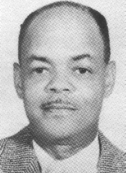 Otis Boykin was born on August 29, 1920 in Dallas, Texas. His mother was a homemaker and his father was a carpenter turned minister. Otis attended Booker T. Washington High School in Dallas, where he was the valedictorian, graduating in 1938. He attended Fisk University on a scholarship and worked as a laboratory assistant at the university’s nearby aerospace laboratory. He graduated from Fisk College in 1941 and took a job as a lab assistant with the Majestic Radio and TV Corporation in Chicago, Illinois where he ultimately became a supervisor. He then would take a position with the P.J. Nilsen Research Laboratories where he was discovered by Dr. Hal F. Fruth, an engineer and inventor with his own laboratory. Fruth and Boykin would collaborate on a number of research projects and would later start a business called Boykin-Fruth Incorporated. After 1947, Boykin began researching and inventing on his own and would receive a patent for a wire precision resistor on June 16, 1959. The resistor would later be used in radios and televisions. In 1961 Boykin created a cheaper and more reliable breakthrough device that could withstand extreme changes in temperature and pressure. The device was demanded by the United States military for guided missiles and IBM computers. In 1964, Boykin moved to paris, creating electronic innovations for a new market of customer which included his most famous invention, a control unit for pacemakers. The device essentially uses electrical impulses to maintain a regular heartbeat. Ironically, Boykin died in Chicago in 1982 as a result of heart failure. Upon his death, he had 26 patents to his name.
Otis Boykin was born on August 29, 1920 in Dallas, Texas. His mother was a homemaker and his father was a carpenter turned minister. Otis attended Booker T. Washington High School in Dallas, where he was the valedictorian, graduating in 1938. He attended Fisk University on a scholarship and worked as a laboratory assistant at the university’s nearby aerospace laboratory. He graduated from Fisk College in 1941 and took a job as a lab assistant with the Majestic Radio and TV Corporation in Chicago, Illinois where he ultimately became a supervisor. He then would take a position with the P.J. Nilsen Research Laboratories where he was discovered by Dr. Hal F. Fruth, an engineer and inventor with his own laboratory. Fruth and Boykin would collaborate on a number of research projects and would later start a business called Boykin-Fruth Incorporated. After 1947, Boykin began researching and inventing on his own and would receive a patent for a wire precision resistor on June 16, 1959. The resistor would later be used in radios and televisions. In 1961 Boykin created a cheaper and more reliable breakthrough device that could withstand extreme changes in temperature and pressure. The device was demanded by the United States military for guided missiles and IBM computers. In 1964, Boykin moved to paris, creating electronic innovations for a new market of customer which included his most famous invention, a control unit for pacemakers. The device essentially uses electrical impulses to maintain a regular heartbeat. Ironically, Boykin died in Chicago in 1982 as a result of heart failure. Upon his death, he had 26 patents to his name.
This information was derived from the internet @ http://www.biography.com/people/otis-boykin-538792 and http://en.wikipedia.org/wiki/Otis_Boykin.
Charlotte E. Ray (1850 – 1911)
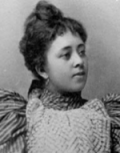 Charlotte E. Ray was born in New York City on January 13, 1850 and grew up in a large family of nine. Her father, Charles, was a minister, an abolitionist, an editor for the Colored American(an abolitionist publication) and helped in the underground railroad. During the 1860’s, Ray attended the Institution for the Education of Colored Youth in Washington DC. The institution was one of only a handful of places that offered a quality education to young, black women. By the end of the 1860’s, she had become a teacher at the preparatory school associated with Howard University and then applied to the university’s law program using only her initials to possibly disguise her gender. Ray was admitted and graduated from Howard University School of Law in 1872 and became one of the first women admitted to the DC Bar and the first black female lawyer. She was also the first women permitted to argue cases in front of the US Supreme Court in the capital. After her graduation, Ray started her own law office, specializing in commercial law. However, widespread prejudices of the time made it too difficult for her, as a black women, to attract enough clients to keep her practice going. In 1879, Ray moved to New York, where she worked as a teacher in the Brooklyn public schools. She married soon after, taking, her husband’s last name Fraim and continued to champion a number of social causes outside of her classroom becoming involved in the women’s suffage movement and joining the National Association of Colored Women. Ray died on January 4, 1911, in Woodside, New York.
Charlotte E. Ray was born in New York City on January 13, 1850 and grew up in a large family of nine. Her father, Charles, was a minister, an abolitionist, an editor for the Colored American(an abolitionist publication) and helped in the underground railroad. During the 1860’s, Ray attended the Institution for the Education of Colored Youth in Washington DC. The institution was one of only a handful of places that offered a quality education to young, black women. By the end of the 1860’s, she had become a teacher at the preparatory school associated with Howard University and then applied to the university’s law program using only her initials to possibly disguise her gender. Ray was admitted and graduated from Howard University School of Law in 1872 and became one of the first women admitted to the DC Bar and the first black female lawyer. She was also the first women permitted to argue cases in front of the US Supreme Court in the capital. After her graduation, Ray started her own law office, specializing in commercial law. However, widespread prejudices of the time made it too difficult for her, as a black women, to attract enough clients to keep her practice going. In 1879, Ray moved to New York, where she worked as a teacher in the Brooklyn public schools. She married soon after, taking, her husband’s last name Fraim and continued to champion a number of social causes outside of her classroom becoming involved in the women’s suffage movement and joining the National Association of Colored Women. Ray died on January 4, 1911, in Woodside, New York.
This information was derived from the internet @ http://www.biography.com/people/charlotte-e-ray-11380
Gaspar Yanga (1545 – ????)
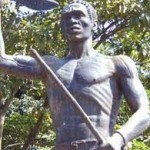 Gaspar Yanga led one of colonial Mexico’s first successful slave uprisings and would go on to establish one of the America’s earliest free Black settlements. Although Yanga was rumored to be of royal lineage in West Africa, Yanga was a slave in the sugarcane plantations of Veracruz, Mexico. In 1570, Yango and his followers escaped the mountainous regions near Cordoba and established a settlement of former slaves. With Yanga as the spiritual and military leader, the escaped slaves lived in their settlement untouched by Spanish authorities for nearly 40 years. During that time, Yanga and his militia known as Cimarrones, were implicated in the disruption and looting of trade goods between Veracruz and Mexico City and held responsible for attacking nearby haciendas and kidnapping indigenous women. Perceived as dangerous to the colonial system of slavery, New Spain’s Viceroy called for the annihilation of Yanga’s settlement. In 1609, Spainish authorities sent a well-armed militia to defat Yanga and his Cimarrones twice, but were defeated. Yanga offered to make peace but with 11 conditions, the most important being recognition of the freedom of all of the settlements residents prior to 1608, acknowledgement of the settlement as a legal entity which Yanga and his descendants would govern, and the prohibition of any Spanish in the community. Yanga, in turn, promised to serve and pay tribute to the Spanish crown. By 1618, the town of San Lorenzo de Los Negros was officially recognized by the Spanish authorities as a free Black settlement and is often referred to as Yanga, after its founder. Gaspar Yanga would go on to be known as “the First Liberator of the Americas.”
Gaspar Yanga led one of colonial Mexico’s first successful slave uprisings and would go on to establish one of the America’s earliest free Black settlements. Although Yanga was rumored to be of royal lineage in West Africa, Yanga was a slave in the sugarcane plantations of Veracruz, Mexico. In 1570, Yango and his followers escaped the mountainous regions near Cordoba and established a settlement of former slaves. With Yanga as the spiritual and military leader, the escaped slaves lived in their settlement untouched by Spanish authorities for nearly 40 years. During that time, Yanga and his militia known as Cimarrones, were implicated in the disruption and looting of trade goods between Veracruz and Mexico City and held responsible for attacking nearby haciendas and kidnapping indigenous women. Perceived as dangerous to the colonial system of slavery, New Spain’s Viceroy called for the annihilation of Yanga’s settlement. In 1609, Spainish authorities sent a well-armed militia to defat Yanga and his Cimarrones twice, but were defeated. Yanga offered to make peace but with 11 conditions, the most important being recognition of the freedom of all of the settlements residents prior to 1608, acknowledgement of the settlement as a legal entity which Yanga and his descendants would govern, and the prohibition of any Spanish in the community. Yanga, in turn, promised to serve and pay tribute to the Spanish crown. By 1618, the town of San Lorenzo de Los Negros was officially recognized by the Spanish authorities as a free Black settlement and is often referred to as Yanga, after its founder. Gaspar Yanga would go on to be known as “the First Liberator of the Americas.”
This information was derived from the internet @ http://www.blackpast.org/?q=gah/yanga-gaspar-c-1545
Whitney Moore Young (1921 – 1971)
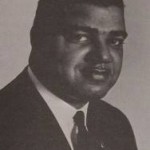 Whitney Moore Young was born in Shelby County, Kentucky, on July 31, 1921. His father was the President of the Lincoln Institute and his mother was the first female postmistress in Kentucky and the second Black postmistress in the United States. Young would earn a B.S. degree from Kentucky State University and would later earn a Masters degree from St.Paul University in Minnesota where he met his wife. He would also join the military during World War II. His service in the military and the circumstances that he witnessed and was subjected to influenced Young into a career in race relations. While in Minnesota, Young joined and later led the St. Paul Minnesota branch of the National Urban League and eventually becomes the Executive Director of the National Urban League. From 1961 to 1971, he played a leading role in persuading America’s corporate elite to provide better opportunities for Black people by doing everything from working with President Lyndon Johnson on civil rights and anti-poverty programs to calling for a “domestic Marshall Plan” (similar to U.S. aid to revive Europe after World War II). He was one of the leaders of the 1963 March on Washington and in 1964 he organized the Community Action Assembly to fight poverty in Black communities. He was awarded the Medal of Freedom, the nation’s highest civilian honor, in 1969. In 1971, Young drowned in Lagos, Nigeria while participating in an annual African-American dialogue on relations between the two continents.
Whitney Moore Young was born in Shelby County, Kentucky, on July 31, 1921. His father was the President of the Lincoln Institute and his mother was the first female postmistress in Kentucky and the second Black postmistress in the United States. Young would earn a B.S. degree from Kentucky State University and would later earn a Masters degree from St.Paul University in Minnesota where he met his wife. He would also join the military during World War II. His service in the military and the circumstances that he witnessed and was subjected to influenced Young into a career in race relations. While in Minnesota, Young joined and later led the St. Paul Minnesota branch of the National Urban League and eventually becomes the Executive Director of the National Urban League. From 1961 to 1971, he played a leading role in persuading America’s corporate elite to provide better opportunities for Black people by doing everything from working with President Lyndon Johnson on civil rights and anti-poverty programs to calling for a “domestic Marshall Plan” (similar to U.S. aid to revive Europe after World War II). He was one of the leaders of the 1963 March on Washington and in 1964 he organized the Community Action Assembly to fight poverty in Black communities. He was awarded the Medal of Freedom, the nation’s highest civilian honor, in 1969. In 1971, Young drowned in Lagos, Nigeria while participating in an annual African-American dialogue on relations between the two continents.
This information was derived from the internet @ http://en.wikipedia.org/wiki/Whitney_Young & http://www.black-collegian.com/african/aaprofil.shtml#julian
Virginia Hamilton (1934 – 2002)
Virginia Esther Hamilton is among one of the most accomplished children’s book writers of all time. She was born on March 12, 1934 and was the youngest of five children. She grew up in the farmlands of southwestern Ohio where her mother’s family had settled since the late 1850’s, when Virginia’s grandfather, Levi Perry was brought into the state as an infant via the Underground Railroad. Virginia graduated at the top of her high school class and received a full scholarship to Antioch College in Yellow Springs, Ohio. In 1956, she transferred to the Ohio State University in Columbus, Ohio and majored in literature and creative writing. She moved to New York City in 1958 where she studied fiction writing at the New School for Social Research while holding down several odd jobs and met poet Arnold Adoff who she would later marry in 1960. Virginia devoted her attention to her work until the birth of her two children. In 1969, Virginia and Arnold built their dream home in Yellow Springs on the last remaining acre of the old Hamilton/Perry family farm. Virginia wrote and published 41 books in multiple genres that spanned from picture books and folk tales to realistic novels and biographies. Her books have a deep concern with memory, tradition, and generational legacy, especially as they helped define the lives of Black Americans. She described her work as “Liberation Literature” , and was reward for it winning every major award in youth literature. She died of breast cancer in 2002.
This information was derived from the internet @ http://www.virginiahamilton.com/biography/
Percy L. Julian (1899 – 1975 )
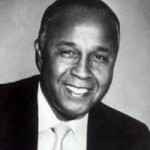 Dr. Percy L. Julian was born in 1899 in Montgomery, Alabama. Julian’s mother and father instilled education in him and his siblings early. He would go on to attend DePauw University in Greencastle, Indiana where he would suffer many humiliating situations due to segregation. Despite these hardships he was still able to graduate as valedictorian in 1920 and eventually earn his PhD in 1931 from the University of Vienna. Similar to George Washington Carver’s extraordinary use of the peanut, Julian was able to do amazing things using the soybean. The most important use that came of his experiments was extracting an ingredient to relieve inflammatory arthritis. Until this discovery Europe had a monopoly on the production of sterol, which was the basis of Julian’s research. These sterol were originally extracted from the bile of animals at a cost far greater to the consumer. By substituting sterol from the oil of the soybean, Julian reduced the cost from several hundred dollars per gram to less than 20 cents a gram. Because the cost of sterol dropped so low, cortisone (a sterol derivative) was made available at a cost that most could afford. In 1954 he founded Julian Laboratory, Inc. which had research centers in Chicago, Mexico City, and Guatemala. These research centers were vital to the development of synthetic cortisone. Before his death, Dr. Julian found a way to mass produce the drug physostigmine, used to treat glaucoma, and perfected the mass production of sex hormones which led the way to birth control pills. During his lifetime, Dr. Julian had amassed more than 130 patents and became the first Black scientist inducted into the National Academy of Sciences. Dr. Percy L. Julian died in 1975 from liver cancer.
Dr. Percy L. Julian was born in 1899 in Montgomery, Alabama. Julian’s mother and father instilled education in him and his siblings early. He would go on to attend DePauw University in Greencastle, Indiana where he would suffer many humiliating situations due to segregation. Despite these hardships he was still able to graduate as valedictorian in 1920 and eventually earn his PhD in 1931 from the University of Vienna. Similar to George Washington Carver’s extraordinary use of the peanut, Julian was able to do amazing things using the soybean. The most important use that came of his experiments was extracting an ingredient to relieve inflammatory arthritis. Until this discovery Europe had a monopoly on the production of sterol, which was the basis of Julian’s research. These sterol were originally extracted from the bile of animals at a cost far greater to the consumer. By substituting sterol from the oil of the soybean, Julian reduced the cost from several hundred dollars per gram to less than 20 cents a gram. Because the cost of sterol dropped so low, cortisone (a sterol derivative) was made available at a cost that most could afford. In 1954 he founded Julian Laboratory, Inc. which had research centers in Chicago, Mexico City, and Guatemala. These research centers were vital to the development of synthetic cortisone. Before his death, Dr. Julian found a way to mass produce the drug physostigmine, used to treat glaucoma, and perfected the mass production of sex hormones which led the way to birth control pills. During his lifetime, Dr. Julian had amassed more than 130 patents and became the first Black scientist inducted into the National Academy of Sciences. Dr. Percy L. Julian died in 1975 from liver cancer.
This information was derived from the internet @ http://www.black-collegian.com/african/aaprofil.shtml#julian & http://en.wikipedia.org/wiki/Percy_Lavon_Julian
Mark Dean (1957 – )
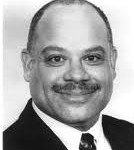 Mark E. Dean was born in Jefferson City, Tennessee and has grown to be one of the brightest computer/engineers in the world. Dean holds a bachelor’s degree in electrical engineering from the University of Tennessee, a master degree in electrical engineering from Florida Atlantic University and a Ph.D. in electrical engineering from Stanford University. Dean lead a team that developed the interior architecture (ISA systems bus) that enables multiple devices, such as modems and printers, to be connected to personal computers. Dean also lead the design team responsible for creating the first 1-gigahertz RISC processor chip, another significant step in making computers faster and smaller. Dean is the first Black person to become an IBM Fellow, which is the highest level of technical excellence at the company and was inducted to the national Inventors Hall of Fame in 1997. He became IBM’s Vice President overseeing the company’s Almaden Research Center in San Jose, California and is currently the CTO for IBM Middle East and Africa. Dean holds 20 patents, three of which are IBM’s original nine PC patents.
Mark E. Dean was born in Jefferson City, Tennessee and has grown to be one of the brightest computer/engineers in the world. Dean holds a bachelor’s degree in electrical engineering from the University of Tennessee, a master degree in electrical engineering from Florida Atlantic University and a Ph.D. in electrical engineering from Stanford University. Dean lead a team that developed the interior architecture (ISA systems bus) that enables multiple devices, such as modems and printers, to be connected to personal computers. Dean also lead the design team responsible for creating the first 1-gigahertz RISC processor chip, another significant step in making computers faster and smaller. Dean is the first Black person to become an IBM Fellow, which is the highest level of technical excellence at the company and was inducted to the national Inventors Hall of Fame in 1997. He became IBM’s Vice President overseeing the company’s Almaden Research Center in San Jose, California and is currently the CTO for IBM Middle East and Africa. Dean holds 20 patents, three of which are IBM’s original nine PC patents.
This information was obtained from the internet at http://en.wikipedia.org/wiki/Mark_Dean_(computer_scientist)
Matthew Gaines (1840-1900)
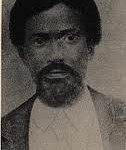 Matthew Gaines was born on August 4, 1840 near Alexandria, Louisiana to a female slave owned by Martin Despallier. Gaines taught himself to read from smuggled books. After being sold from the Despallier family, he briefly escaped from his new owner, but was later captured and returned to his master. In 1859, Gaines was again sold, this time to Christopher Columbus Hearne where Gaines tried and failed to escape in 1863. Gaines was enslaved in Fredericksburg, Texas until the end of the Civil War. After the emancipation, Gaines settled in Washington County, where he established himself as a leader of the freedmen, both as a Baptist preacher and a politician. In 1869, Gaines was elected Senator of the Texas 16th district and in the 12th Texas Legislature. Among the many issues that Gaines addressed as a Texas Senator, he was best known for being a guardian for African-Texans rights, addressing the issues of public education, prison reform, the protection of Black voters, and tenant farming reformation. These touchy issues made Gaines a threat to both Democrats and Republicans. Gaines would only serve four of his six year term because of fallacious charges of bigamy in 1871, causing his seat to be challenged. He was removed from office despite the fact that the charge was overturned. Despite Gaines losing his seat, he continued to be active in politics and made his political views known in conventions, public gatherings, and the pulpit until his death in 1900.
Matthew Gaines was born on August 4, 1840 near Alexandria, Louisiana to a female slave owned by Martin Despallier. Gaines taught himself to read from smuggled books. After being sold from the Despallier family, he briefly escaped from his new owner, but was later captured and returned to his master. In 1859, Gaines was again sold, this time to Christopher Columbus Hearne where Gaines tried and failed to escape in 1863. Gaines was enslaved in Fredericksburg, Texas until the end of the Civil War. After the emancipation, Gaines settled in Washington County, where he established himself as a leader of the freedmen, both as a Baptist preacher and a politician. In 1869, Gaines was elected Senator of the Texas 16th district and in the 12th Texas Legislature. Among the many issues that Gaines addressed as a Texas Senator, he was best known for being a guardian for African-Texans rights, addressing the issues of public education, prison reform, the protection of Black voters, and tenant farming reformation. These touchy issues made Gaines a threat to both Democrats and Republicans. Gaines would only serve four of his six year term because of fallacious charges of bigamy in 1871, causing his seat to be challenged. He was removed from office despite the fact that the charge was overturned. Despite Gaines losing his seat, he continued to be active in politics and made his political views known in conventions, public gatherings, and the pulpit until his death in 1900.
This information was obtained from the internet at http://en.wikipedia.org/wiki/Matthew_Gaines
Robert F. Williams (1925-1996)
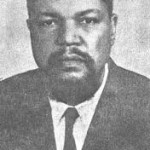 Robert F. Williams was born in Monroe, North Carolina. As a young man he joined the Great Migration and moved to Detroit and by 1944 had joined the Marines. By 1955 Williams had returned home to Monroe to fight against “Jim Crow” as the president of the local chapter of the NAACP. However, this chapter was unique because it had working class member and leadership and because they armed themselves with machine guns, dynamite, and Molotov cocktails. Williams was suspended as the president because of his fight violence with violence stances. Williams would move away from the NAACP and would go on to write Negroes With Guns, in 1962. This book had a profound effect on Huey P. Newton, the cofounder of the Black Panthers, and advocated the use of self-defense as the way to gain self-determination. By the time the book was published, Williams was in Cuba, fleeing the United States after being falsely accused of kidnapping by the FBI. While in Cuba,Williams established Radio Free Dixie that would air in the southeastern part of America. He also lived in China and Vietnam for a time, urging Black soldiers to use their arms against the United States during the war. He returned to the United States in 1969 and served as the president of a Detroit-based group, Republic of New Afrika. When he died in 1996, Rosa Parks was among the people who attended his funeral.
Robert F. Williams was born in Monroe, North Carolina. As a young man he joined the Great Migration and moved to Detroit and by 1944 had joined the Marines. By 1955 Williams had returned home to Monroe to fight against “Jim Crow” as the president of the local chapter of the NAACP. However, this chapter was unique because it had working class member and leadership and because they armed themselves with machine guns, dynamite, and Molotov cocktails. Williams was suspended as the president because of his fight violence with violence stances. Williams would move away from the NAACP and would go on to write Negroes With Guns, in 1962. This book had a profound effect on Huey P. Newton, the cofounder of the Black Panthers, and advocated the use of self-defense as the way to gain self-determination. By the time the book was published, Williams was in Cuba, fleeing the United States after being falsely accused of kidnapping by the FBI. While in Cuba,Williams established Radio Free Dixie that would air in the southeastern part of America. He also lived in China and Vietnam for a time, urging Black soldiers to use their arms against the United States during the war. He returned to the United States in 1969 and served as the president of a Detroit-based group, Republic of New Afrika. When he died in 1996, Rosa Parks was among the people who attended his funeral.
This information was obtained from the internet at http://en.wikipedia.org/wiki/Robert_F._Williams and Civil Rights Chronicle: The African American Struggle for Freedom, pg. 203
Charles Drew (1904-1950)
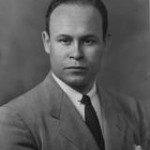
Dr. Charles Drew was born in Washington D.C., and won honors in many of his educational and athletic endeavors. While a student at Amherst College, he was not only the halfback on the football team but also went on to become a doctor and a scientist and was chosen as the student who brought the greatest honor to the college. However, Dr. Charles Drew’s greatest accomplishment came during World War II. In 1940, he developed a process of changing blood into plasma and made one of the most important single contributions to the Allied victory. This has saved countless lives and is still as valuable today as it ever was. Ironically, Dr. Charles Drew died from loss of blood, after an automobile accident.
This information was obtained from Edu-Cards
Mary Elizabeth Bowser (1839-????)
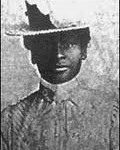 Mary Elizabeth Bowser was a Union spy during the Civil War. Bowser began her life as a slave on the plantation of John Van Lew. When John Van Lew died in 1851, his daughter Elizabeth freed Bowser. Bowser stayed with the family until the late 1850s. Mary was educated at a Quaker school in Philadelphia and later married a free black man Mr.(William or Wilson) Bowser. Bowser’s espionage work began in 1861. Elizabeth Van Lew convinced a friend to bring Bowser along to work as a servant for Varina Davis, the wife of the President of the Confederacy, Jefferson Davis. As a spy for the Union, Bowser read a number of military documents she had access to, including lists of troop movements, reports on moving Union prisoners, military strategies, and treasury reports. She passed the information along to Van Lew and others in the Union intelligence operation. Her colleagues in the Union intelligence operation praised her for her excellent memory and the information she discovered. In January 1865, Mary Bowser fled from Richmond never to be heard from again. Before she left, Mary attempted to burn down the Confederate White House, but was unsuccessful. Her story was reconstructed from research into the Union intelligence operation during the Civil War, and from memoirs of her colleagues in the operation. In 1995 Bowser was admitted to the Military Intelligence Hall of Fame.
Mary Elizabeth Bowser was a Union spy during the Civil War. Bowser began her life as a slave on the plantation of John Van Lew. When John Van Lew died in 1851, his daughter Elizabeth freed Bowser. Bowser stayed with the family until the late 1850s. Mary was educated at a Quaker school in Philadelphia and later married a free black man Mr.(William or Wilson) Bowser. Bowser’s espionage work began in 1861. Elizabeth Van Lew convinced a friend to bring Bowser along to work as a servant for Varina Davis, the wife of the President of the Confederacy, Jefferson Davis. As a spy for the Union, Bowser read a number of military documents she had access to, including lists of troop movements, reports on moving Union prisoners, military strategies, and treasury reports. She passed the information along to Van Lew and others in the Union intelligence operation. Her colleagues in the Union intelligence operation praised her for her excellent memory and the information she discovered. In January 1865, Mary Bowser fled from Richmond never to be heard from again. Before she left, Mary attempted to burn down the Confederate White House, but was unsuccessful. Her story was reconstructed from research into the Union intelligence operation during the Civil War, and from memoirs of her colleagues in the operation. In 1995 Bowser was admitted to the Military Intelligence Hall of Fame.
This information was obtained from these two web addresses – http://www.lkwdpl.org/wihohio/bows-mar.htm and http://en.wikipedia.org/wiki/Mary_Bowser
Patricia E. Bath (1942-)
Patricia Era Bath is the first African American woman doctor to receive a patent for a medical purpose. After graduating high school early, Bath received her Bachelor of Arts in chemistry from New York’s Hunter College in 1964 and went on to receive her doctoral degree in 1968 from Howard University College of Medicine. From 1970 to 1973 she became the first African American to serve her residency in ophthalmology at New York University. In 1981 she began to develop the Laserphaco Probe. By 1988 she had completed and patented the Probe. The Probe quickly and nearly painlessly dissolves the cataract with a laser, irrigates and cleans the eye and permits the easy insertion of a new lens. Her Laserphaco Probe has continued to improve throughout the years and has successfully restored vision to people all around the world. Bath holds a total of four patents and is also the founder of the American Institute for the Prevention of Blindness. Bath was placed in Hunter College’s “hall of fame” in 1988 and Howard University declared her a “Howard University Pioneer in Academic Medicine” in 1993.
This information was obtained from this web address – http://en.wikipedia.org/wiki/Patricia_Bath
Jan Matzeliger (1852-1889)
Jan Matzeliger invented a machine that made it possible for an ordinary person to purchase a pair of shoes. After serving his apprenticeship in Philadelphia, Jan moved to Lynn, Massachusetts to work in a shoe factory. After observing highly skilled workers only churn out 40 to 50 pairs of shoes a day, Matzeliger had an idea to reduce the amount of manual labor with a machine that would sew the uppers to the soles of the shoes with the same quality. After 10 years, he completed his machine and increased the pair of shoes completed in a day by 10 times. This caused shoe production to leap from about one million a year to approximately 11 million. He received a patent on his machine in 1883.
This information was obtained from Edu-Cards
W.E.B. DuBois (1868 -1963)
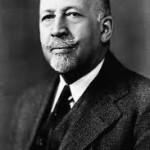
William Edward Burghardt DuBois led protest movements, edited magazines, composed renowned works of American thought, challenged white supremacists and debated rival black figures. Dubois was the first Black to earn a PhD from Harvard and is best known for his political involvement as head of the Niagara Movement and the NAACP. He helped established these groups because he did not believe that economic opportunity alone would solve the problems of Black Americans. His third book The Souls of Black Folks(1903) earned him nationwide acclaim even from the most hostile of elements in American society and is still viewed as a classic and made to read at universities to this day. By the 1930’s, DuBois writings moved away from the integrationist thrust of the NAACP, which cost him his job as the editor of the organizations magazine The Crisis. In 1961 DuBois left America and became a citizen of Ghana where he died at the age of 95.
This information was obtained from Edu-Cards and Civil Rights Chronicle: The African American Struggle for Freedom, pg 71.
Ivan Van Sertima (1925 – 2009)
Ivan Van Sertima is one of the most renowned historians in the field of African studies. He was educated at the School of Oriental and African Studies at London University where he graduated with honors. He came to the United States in 1970, where he completed his post graduate studies at Rutgers University in New Jersey. Dr. Van Sertima began his teaching career as an instructor at Rutgers in 1972, and ended it as a Professor of African studies in the Department of Africana Studies. The cornerstone of Dr. Van Sertima’s legacy was his groundbreaking book They Came Before Columbus: The African Presence in Ancient America. According to Van Sertima: “The African presence in America before Columbus is of importance not only to African and American history, but to the history of world civilizations. The African presence is proven by stone heads, terra cottas, skeletons, artifacts, techniques and inscriptions, by oral traditions and documented history, by botanical, linguistic and cultural data.” Although there are many detractors from his theory, Ivan Van Sertima remained an academic giant until his death.
This information was obtained from Runoko Rashidi of Global African Presence http://www.cwo.com/~lucumi/vansertima.html
Shirley Chisholm (1924 -2005)
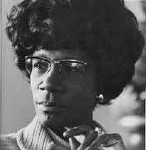
Shirley Chisholm was the first Black women to serve in the US Congress. Before entering politics, Shirley was a school teacher and a educational consultant for New York State Department of Social Services. She also sponsored the SEEK program (Search for Elevation, Education, and Knowledge) to help non high school graduates qualify for college. She learned politics by joining a Democratic club and getting involved by doing grunt work such as going door to door and licking envelopes. In 1964 she won a state assembly seat and later the newly created congressional seat from Brooklyn over fellow civil rights leader James Farmer( former head of Congress of Racial Equal [CORE]) in 1968. In 1972 Chisholm became the first black candidate to make a credible run for the White House. She never had more than seven percent of the Democratic Primaries confidence, but she served as an example of how a Black candidate can put Black issues on the national agenda.
This information was obtained from Civil Rights Chronicle: The African American Struggle for Freedom, pgs 356 and 381.
Granville T. Woods (1856-1910)
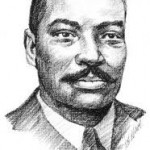
A man of tremendous inventive talents, Granville T. Woods was called “the greatest electrician in the world,” in 1888 by the “American Catholic Tribune.” Most of his designs were in the field of improvements in the railroad and electrical industries. Granville T. Woods held about 35 patents in various countries . He contributed to the development of the “third rail” and he invented devices which he sold to Alexander Graham Bell, Thomas Edison, and George Westinghouse. He is best known for his invention of an automatic air brake.
This information was obtained from Edu-Cards
John Lewis (1940 – )
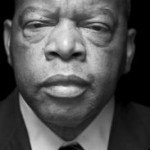
John Lewis was one of the most committed and bravest civil rights activist and was instrumental in forming the Student Nonviolent Coordinating Committee (SNCC). He was arrested on approximately 40 occasions and suffered severe beatings during the 1961 Freedom Rides. By 1963 Lewis was elected chairman of SNCC and was one of the “Big Six” civil rights leaders who participated in the march on Washington and was a key note speaker at the age of 23. In 1966 John Lewis was replaced by the more charismatic Stokely Carmichael and later left the organization. In 1986 he was elected to the US Congress from Georgia’s Fifth Congressional District where he has remained since.
This information was obtained from Civil Rights Chronicle: The African American Struggle for Freedom, pgs 184 and 201.
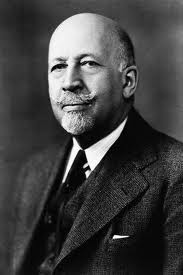
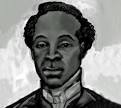

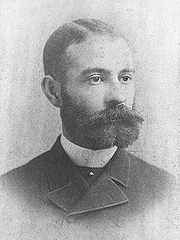


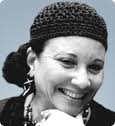
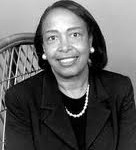
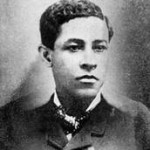
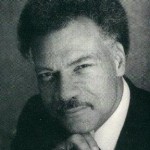
This is excellent history!!! This is what we need in our schools 🙂
I’m feeling real educated right now. Thanks for sharing information on some of the not-so-recognized names in African America history.
Wow, interesting that many of these names I am familiar with but the nature of their actions sometimes go forgotten the other 11 months of the year! The students I teach hardly understand segregation and they’re in high school- getting them to comprehend the importance of these deeds and the role of our ancestors gets piled on top of the mounting life issues already being faced. There is a disconnect between where we are now and what tribulation was faced to get to here. Add that to the leftover angst of segregation which causes many of us to walk around with a 200 year chip on our shoulder and it becomes hard to envision a full appreciation of these “ancient” deeds, which often only get celebrated 28 days a year.